One of the best parts about being retired and living/traveling full time in an RV is how flexible we can be and as a result, we often don't make concrete plans. However, this year will be different and we have big plans. That said, we are well aware of the fragile nature of "health"; our own, that of family as well as of the environment. We know our plans can easily be stymied by illness, injury, family crisis, deep snow, wild fire etc and we experienced several of those issues just last summer. But one of our favorite quotes is "Things turn out best for those who make the best of the way things turn out" and even though last summer did not go as originally planned we still had a great time.
Where we have been – Washington State
7/8 - 10/15 2017
- 3 day/2 night backpack trip around Mt St Helens in Mt St Helens National Volcanic Monument
- 3 day/2 night backpack trip in Goat Rocks Wilderness within Gifford Pinchot National Forest
- 6 day/5 night backpack trip from Staircase to La Crosse Lake in Olympic National Park
- 5 day/4 night backpack trip along the northern coast in Olympic National Park
- 2 day/1 night backpack trip along the southern coast in Olympic National Park
After leaving Arizona and Utah we headed north to Washington State. Our original plans had already been altered by some family issues. It had also been a "high snow" year so hiking in the mountains was delayed but the biggest impact on our backpacking plans came "courtesy" of several wildfires raging in the Pacific Northwest and British Columbia. While we could avoid the fires the smoke was pervasive and had to be taken into account when planning a trip.
The first backpack trip we planned to do was to hike around Mt St Helens. We first moved to Washington State in 1977 so I can remember Mt St Helens before she "blew her top" in 1980. Despite being such a lovely mountain, often compared to Mt Fujiyama, she was overshadowed by her nearby "big brothers", Mt Rainier and Mt Adams. At 9,677 feet she was only the fifth highest mountain in Washington State and as the fifth child in my family I identified with her and her inability to get noticed.
Mt St Helens (9,677 feet) and Spirit Lake in 1973 -Source of Image
However, that all changed on May 18, 1980 when Mt St Helens erupted sending a great plume of thick ash and smoke into the sky ...
Mt St Helens erupting May 18th 1980 - Source of Image
... before her entire north slope slumped creating a deadly lahar (a super heated mud flow) that decimated the surrounding area.
Mt St Helens erupting May 18th 1980 - Source of Image
Mt St Helens National Volcanic Monument was established August 27th, 1982 and we took John's mom to see it soon after it opened. The devastation was unbelievable. The tall trees within entire forests had been knocked down by the blast and laid on the ground like carefully arranged toothpicks.
John had hiked to the top in the past but during the summer when the wind, dust and grit made it an unpleasant experience. It is far better to go when there is still snow. So in May 2010 John, our son Dan and I showshoed to the top of Mt St Helens. Once on the rim we could look down into the crater and see the lava dome (complete with steam) as well as Spirit Lake and Mt Rainier in the distance.
The "Lava Dome" and Mt Rainier seen from Mt St Helens (8,364 feet) in Mt St Helens National Volcanic Monument, Washington
The loop around Mt St Helens is about 33 miles in length and John had done it twice before; as a very challenging trail run in 2002 before the route was well established and as a 3 day/2 night solo backpack trip in 2014. I was sidelined with a shoulder issue then and was very disappointed to not be able to go on that backpack trip with him. So I was really excited to finally get to do this unique trip.
Mt St Helens (8,364 feet) in Mt St Helens National Volcanic Monument, Washington
We started at the June Lake Trailhead located in the southeast corner of the monument.
Jean and John backpacking around Mt St Helens within Mt St Helens National Volcanic Monument, Washington
The trail took us through a cool green forest past this lovely little falls. I made a point of enjoying the color "green" while it lasted ...
Seen while backpacking around Mt St Helens within Mt St Helens National Volcanic Monument, Washington
... because before long we left the woods and started across the first of many lava and boulder fields.
John backpacking around Mt St Helens within Mt St Helens National Volcanic Monument, Washington
Navigating through the lava fields can be challenging as there are no boot prints anywhere and the lava rock resists any wearing that could mark the track. Fortunately, the Park Service has installed white posts placed at intervals marking the route. Even so, one often times must stop and scan around for the next white post before continuing. One big challenge John had when he did this as a trail run was after dark the beam from his headlamp did not reach as far as the next post. I can't even imagine trying to navigate this terrain after dark.
Jean backpacking around Mt St Helens within Mt St Helens National Volcanic Monument, Washington
I found this first lava field to be tedious and John tried to reassure me, based on his memory, that it was the worst. The advantage at doing this as a loop meant we wouldn't be coming back this way.
Seen while backpacking around Mt St Helens within Mt St Helens National Volcanic Monument, Washington
Seen while backpacking around Mt St Helens within Mt St Helens National Volcanic Monument, Washington
After the lava field and the first gully it was a treat to be on an actual trail even if it was short lived.
Jean backpacking around Mt St Helens within Mt St Helens National Volcanic Monument, Washington
It was late July but there was still a bit of snow.
John backpacking around Mt St Helens within Mt St Helens National Volcanic Monument, Washington
After gaining some elevation we began to get views of of Mt Adams, ...
Mt Adams seen while backpacking around Mt St Helens within Mt St Helens National Volcanic Monument, Washington
... Mt Hood ...
Mt Hood seen while backpacking around Mt St Helens within Mt St Helens National Volcanic Monument, Washington
... as well as a "shy" view of Mt St Helens.
We were perhaps about four miles in when I became aware of some "hot spots" on several of my toes. I was wearing brand new boots but they were the same size and style I have worn without problem for years including wearing them literally straight out of the box for a seven day backpack trip in Glacier National Park. We stopped and I taped every spot I could identify. We have a great method for taping. I first cleaned all areas with Isopropyl Alcohol and then applied a thin layer of Tincture of Benzoin (it protects skin and helps tape to stick). After the Benzoin dries (it will remain tacky) I applied Rock Tape (both available from Amazon).
We had planned to camp by the South Fork of the Toutle River that first day. The tape helped but the rough terrain was taking its toll on my speed. As we descended into yet another gully the pain in my toes was so bad I was slowed to a snail's pace. I tried to go faster but just couldn't and we had to admit there was no way we could get that far.
The decision we needed to make was do we bag the trip and head back the way we had just come or do we camp where we were giving us the option to continue the next day. I was devastated. I was worn down by the pain and irrational fears my backpacking days were over. I couldn't stand the thought of hiking back over the miles of lava and boulders we had already done with my toes hurting as much as they did. Intellectually I knew this would not be the only opportunity I would ever have to hike around Mt St Helens but I hated the thought of quitting. We talked about it and decided to wait until morning to make a decision. We then made a fruitless search for a spot level enough for our tent. I set it up in a small clearing on a thickly treed slope while John back tracked to get water. We slept with our backpacks under our legs in an attempt to keep us from sliding down to the foot of our tent and it worked, for the most part.
I was awake until quite late that night thinking about what we should do and I got an idea. The next morning I made a proposal to John that we swap boots and continue the trip. Our feet are of similar size but different shape with his being more narrow. It appeared the toe box on my new boots was more narrow than previously and, as I have had five surgeries on my feet, my toes have many "issues". We both normally wear two pairs of socks; a thin liner and a thicker wool sock. My thought was if we both only wore our liners we could swap boots. He agreed to give it a try and we continued on. My idea seemed to be working, I could smile again.
We crossed more gullies ...
Seen while backpacking around Mt St Helens within Mt St Helens National Volcanic Monument, Washington
We were perhaps about four miles in when I became aware of some "hot spots" on several of my toes. I was wearing brand new boots but they were the same size and style I have worn without problem for years including wearing them literally straight out of the box for a seven day backpack trip in Glacier National Park. We stopped and I taped every spot I could identify. We have a great method for taping. I first cleaned all areas with Isopropyl Alcohol and then applied a thin layer of Tincture of Benzoin (it protects skin and helps tape to stick). After the Benzoin dries (it will remain tacky) I applied Rock Tape (both available from Amazon).
We had planned to camp by the South Fork of the Toutle River that first day. The tape helped but the rough terrain was taking its toll on my speed. As we descended into yet another gully the pain in my toes was so bad I was slowed to a snail's pace. I tried to go faster but just couldn't and we had to admit there was no way we could get that far.
Jean backpacking around Mt St Helens within Mt St Helens National Volcanic Monument, Washington
The decision we needed to make was do we bag the trip and head back the way we had just come or do we camp where we were giving us the option to continue the next day. I was devastated. I was worn down by the pain and irrational fears my backpacking days were over. I couldn't stand the thought of hiking back over the miles of lava and boulders we had already done with my toes hurting as much as they did. Intellectually I knew this would not be the only opportunity I would ever have to hike around Mt St Helens but I hated the thought of quitting. We talked about it and decided to wait until morning to make a decision. We then made a fruitless search for a spot level enough for our tent. I set it up in a small clearing on a thickly treed slope while John back tracked to get water. We slept with our backpacks under our legs in an attempt to keep us from sliding down to the foot of our tent and it worked, for the most part.
I was awake until quite late that night thinking about what we should do and I got an idea. The next morning I made a proposal to John that we swap boots and continue the trip. Our feet are of similar size but different shape with his being more narrow. It appeared the toe box on my new boots was more narrow than previously and, as I have had five surgeries on my feet, my toes have many "issues". We both normally wear two pairs of socks; a thin liner and a thicker wool sock. My thought was if we both only wore our liners we could swap boots. He agreed to give it a try and we continued on. My idea seemed to be working, I could smile again.
Jean backpacking around Mt St Helens within Mt St Helens National Volcanic Monument, Washington
We crossed more gullies ...
Seen while backpacking around Mt St Helens within Mt St Helens National Volcanic Monument, Washington
... and were very grateful for the fixed ropes.
John backpacking around Mt St Helens within Mt St Helens National Volcanic Monument, Washington
Otherwise getting across these gullies would be much more challenging, even impossible for some of us.
John backpacking around Mt St Helens within Mt St Helens National Volcanic Monument, Washington
It was gratifying to see that nature was making a valiant effort to reclaim the area.
Seen while backpacking around Mt St Helens within Mt St Helens National Volcanic Monument, Washington
The wildflowers were gorgeous.
Seen while backpacking around Mt St Helens within Mt St Helens National Volcanic Monument, Washington
It was nearly noon before we finally approached the South Fork of the Toutle River which confirmed to me we would not have made it the previous day.
Seen while backpacking around Mt St Helens within Mt St Helens National Volcanic Monument, Washington
We descended into the gully, ...
John backpacking around Mt St Helens within Mt St Helens National Volcanic Monument, Washington
... crossed the river ...
Jean crossing the South Fork of the Toutle River while backpacking around Mt St Helens within Mt St Helens National Volcanic Monument, Washington
... and scrambled back up the other side.
John backpacking around Mt St Helens within Mt St Helens National Volcanic Monument, Washington
We were now within the "Restricted Area" where camping is not permitted.
Seen while backpacking around Mt St Helens within Mt St Helens National Volcanic Monument, Washington
It was a pleasure to be on such a fast trail as we had many miles to go.
Jean (right) backpacking around Mt St Helens within Mt St Helens National Volcanic Monument, Washington
We were getting better views of Mt St Helens although from this angle she looks like a "tame" mountain.
Seen while backpacking around Mt St Helens within Mt St Helens National Volcanic Monument, Washington
Even this close to the blast zone nature was making a comeback.
Seen while backpacking around Mt St Helens within Mt St Helens National Volcanic Monument, Washington
But there were more gullies, always there were more gullies.
John backpacking around Mt St Helens within Mt St Helens National Volcanic Monument, Washington
As we continued around the mountain we began to see the edge of the crater.
Jean backpacking around Mt St Helens within Mt St Helens National Volcanic Monument, Washington
As we started across the Pumice Plains we could also see Spirit Lake ...
Spirit Lake seen while backpacking around Mt St Helens within Mt St Helens National Volcanic Monument, Washington
... as well as just the top of Mt Adams.
Jean crossing the Pumice Plains while backpacking around Mt St Helens within Mt St Helens National Volcanic Monument, Washington
We continued crossing the broad expanse ...
The Pumice Plains seen while backpacking around Mt St Helens within Mt St Helens National Volcanic Monument, Washington
... and hiked past Loowit Falls. Unfortunately, we had to pass on the short side trip to the falls as we were so short of time.
Loowit Falls seen while backpacking around Mt St Helens within Mt St Helens National Volcanic Monument, Washington
We needed to get past the Restricted Area Boundary and to the first water past Windy Pass to camp that night. However, we were tired, hungry, chilly and it would be soon be getting dark. In addition John discovered that wearing my boots was giving him blisters so now both of our feet hurt. All I can say is we got as far as we could before our need to be safe forced us to stop for the night.
John backpacking around Mt St Helens within Mt St Helens National Volcanic Monument, Washington
We got an early start the next morning. John was wearing his own boots with both pairs of socks and his feet were much happier. I wore my too tight boots with liners and found it tolerable. I so appreciate John letting me wear his boots the previous day (a sure sign of true love) as it enabled us to complete this trip with a reasonable level of enjoyment.
Jean backpacking around Mt St Helens within Mt St Helens National Volcanic Monument, Washington
On our way up to Windy Pass ...
Windy Pass seen while backpacking around Mt St Helens within Mt St Helens National Volcanic Monument, Washington
... we saw more signs of nature making a comeback in the blast zone.
Seen while backpacking around Mt St Helens within Mt St Helens National Volcanic Monument, Washington
Coming down from Windy Pass we were again getting views of Mt Adams ...
Mt Adams seen while backpacking around Mt St Helens within Mt St Helens National Volcanic Monument, Washington
... and Mt Hood.
Mt Hood seen while backpacking around Mt St Helens within Mt St Helens National Volcanic Monument, Washington
We crossed the broad Plains of Abraham ...
The Plains of Abraham seen while backpacking around Mt St Helens within Mt St Helens National Volcanic Monument, Washington
... as we continued around Mt St Helens ...
Seen while backpacking around Mt St Helens within Mt St Helens National Volcanic Monument, Washington
... and got a view of Mt Rainier to the north.
Mt Rainier seen while backpacking around Mt St Helens within Mt St Helens National Volcanic Monument, Washington
But Mt Adams is Mt St Helens closest "sibling" and views are outstanding. It is such a treat to be high enough to have an unobstructed view of a mountain such as Adams all the way down to his massive shoulders.
Mt Adams seen while backpacking around Mt St Helens within Mt St Helens National Volcanic Monument, Washington
We continued around the east side of the volcano losing the view of the crater so St Helens looked more like a "tame" mountain again.
Jean backpacking around Mt St Helens within Mt St Helens National Volcanic Monument, Washington
Now out of the blast zone we encountered even more vegetation.
John backpacking around Mt St Helens within Mt St Helens National Volcanic Monument, Washington
We crossed what I hoped was our last gully.
Jean backpacking around Mt St Helens within Mt St Helens National Volcanic Monument, Washington
When I saw first saw this boulder ridge ahead of us I thought we would have to go over it. I was so relieved when I saw the trail skirted it ...
John backpacking around Mt St Helens within Mt St Helens National Volcanic Monument, Washington
... especially when I realized the lava and boulder field that was coming into view beyond it was the one we had done the first day and I did not have to cross it again. We hiked out, drove back to our motorhome (and I finally got to take those blasted boots off for the last time). All of our photos from this backpack trip are on Flickr.
Seen while backpacking around Mt St Helens within Mt St Helens National Volcanic Monument, Washington
A few days later we went to the REI store in Portland to return my boots and get new ones. I was afraid Lowa had changed their Renegade boots and I would have to start the arduous task of finding another brand and style of boot to make my "high needs" feet happy. But first I tried on another pair of Lowa's and to my great relief they felt great! The best we can figure is the boots I had previously purchased were mislabeled. When compared to a correctly labeled pair they were the same length but were noticeably more narrow. When I got them I had been fooled by the fact my orthotics fit inside. They had felt a bit snug but I attributed that to their being brand new and I had not had a new pair for awhile. I will certainly be more careful buying boots in the future and will not hesitate to ask to try on a different pair of the same size if the first doesn't feel great. Live and learn. The only lasting injury I had from this experience was damage to both big toe nails. I lost one but I think the other is going to make it. Fortunately, it hasn't interfered with my ability to hike.
We wanted to do another backpack trip but planning was complicated by smoke from wildfires in Washington, Oregon and British Columbia. It was surprising to me as it had been such a high snow year and I had previously believed a deeper snow pack resulted in fewer fires in the summer. However, this year's high snow, which increased vegetation, was followed by record high temperatures and extremely dry weather which dried out the abundant vegetation and turned the entire Pacific Northwest into a tinder box.
We decided to do a short trip to Goat Rocks Wilderness within Gifford Pinchot National Forest. John did a longer trip through the area by himself in 2014 when I was having a shoulder issue. In hindsight I could have gone because my first doctor was wrong, I didn't have a Rotator Cuff tear. I have wanted to visit the area especially after seeing the photos from John's backpack trip. I knew smoke could obscure views of distant mountains but the temperatures were in the 90's in the "lowlands" so primarily we just wanted to get up higher for cooler temperatures.
We started out on the Snowgrass Hikers Trail. It was quite warm and we didn't really see any smoke but as we began to gain elevation we could smell it and were both having trouble breathing. Nothing serious, we just needed to maintain a very slow pace. It was demoralizing because the flies were voracious and at such a slow pace we were easy targets.
John backpacking in Goat Rocks Wilderness within Gifford Pinchot National Forest, Washington
Seen while backpacking in Goat Rocks Wilderness within Gifford Pinchot National Forest, Washington
We camped on Snowgrass Flats ...
Seen while backpacking in Goat Rocks Wilderness within Gifford Pinchot National Forest, Washington
... tucking our tent within the shade of the large rocks to the right in the above photo.
Seen while backpacking in Goat Rocks Wilderness within Gifford Pinchot National Forest, Washington
Jean and John backpacking in Goat Rocks Wilderness within Gifford Pinchot National Forest, Washington
After setting up camp we did a short hike ...
Old Snowy Mountain seen while backpacking in Goat Rocks Wilderness within Gifford Pinchot National Forest, Washington
... and continued to enjoy the wildflowers.
Seen while backpacking in Goat Rocks Wilderness within Gifford Pinchot National Forest, Washington
We got on the Pacific Crest Trail (PCT) and headed toward Old Snowy Mountain.
Old Snowy Mountain seen while backpacking in Goat Rocks Wilderness within Gifford Pinchot National Forest, Washington
Again we admired the local views ...
Seen while backpacking in Goat Rocks Wilderness within Gifford Pinchot National Forest, Washington
... as when I looked in the distance all I saw was haze.
Seen while backpacking in Goat Rocks Wilderness within Gifford Pinchot National Forest, Washington
The PCT skirts Old Snowy but snow can make it treacherous ...
Seen while backpacking in Goat Rocks Wilderness within Gifford Pinchot National Forest, Washington
... so some choose to take the alternate route that goes across the crest of Old Snowy.
Seen while backpacking in Goat Rocks Wilderness within Gifford Pinchot National Forest, Washington
There was still a fair amount of snow for early August ...
Seen while backpacking in Goat Rocks Wilderness within Gifford Pinchot National Forest, Washington
Jean hiking in Goat Rocks Wilderness within Gifford Pinchot National Forest, Washington
We didn't hike to the top of Old Snowy that evening. There just wasn't any point to it as the smoke and haze obscured all the distant mountains. It was a bit frustrating as I knew Mt Rainier was out there somewhere. Fortunately John had clear weather when he did his trip in 2014 and took many beautiful photos such as this one.
In fact he got to see Mt Adams, Mt St Helens and Mt Rainier from the same spot.
We headed back to camp ...
Mt Rainier seen while backpacking in Goat Rocks Wilderness within Gifford Pinchot National Forest, Washington
In fact he got to see Mt Adams, Mt St Helens and Mt Rainier from the same spot.
Mt Adams, Mt St Helens and Mt Rainier seen while backpacking in Goat Rocks Wilderness within Gifford Pinchot National Forest, Washington
We headed back to camp ...
Seen while backpacking in Goat Rocks Wilderness within Gifford Pinchot National Forest, Washington
... passing some unusual rock on the way.
Seen while backpacking in Goat Rocks Wilderness within Gifford Pinchot National Forest, Washington
The next morning we headed to Cispus Basin ...
Seen while backpacking in Goat Rocks Wilderness within Gifford Pinchot National Forest, Washington
... and passed several lovely little water falls along the way.
John backpacking in Goat Rocks Wilderness within Gifford Pinchot National Forest, Washington
These along with the wildflowers helped to compensate for the lack of distant mountain views.
Seen while backpacking in Goat Rocks Wilderness within Gifford Pinchot National Forest, Washington
We continued on and then went off the trail to look for a camp site higher up in the basin.
Jean backpacking in Goat Rocks Wilderness within Gifford Pinchot National Forest, Washington
We set up our tent behind the smallest clump of trees in the middle of the photo below.
Seen while backpacking in Goat Rocks Wilderness within Gifford Pinchot National Forest, Washington
It was a great campsite; shade, a breeze, nearby water and a gorgeous view.
Jean and our camp in Goat Rocks Wilderness within Gifford Pinchot National Forest, Washington
Mountain Goats seen while backpacking in Goat Rocks Wilderness within Gifford Pinchot National Forest, Washington
We counted at least 48.
Mountain Goats seen while backpacking in Goat Rocks Wilderness within Gifford Pinchot National Forest, Washington
After grazing in the hot sun they went to cool off by lying down on the snow.
Mountain Goats seen while backpacking in Goat Rocks Wilderness within Gifford Pinchot National Forest, Washington
That afternoon we did a short hike ...
Jean hiking in Goat Rocks Wilderness within Gifford Pinchot National Forest, Washington
... up to Cispus Pass for a view of Gilbert Peak.
Seen while backpacking in Goat Rocks Wilderness within Gifford Pinchot National Forest, Washington
After returning to camp John went out to do photography in the golden evening light.
Seen while backpacking in Goat Rocks Wilderness within Gifford Pinchot National Forest, Washington
This is a particularity beautiful mountain stream ...
Seen while backpacking in Goat Rocks Wilderness within Gifford Pinchot National Forest, Washington
... and I love the way John photographed it contrasting the rough rock with the fluid movement of the water.
Seen while backpacking in Goat Rocks Wilderness within Gifford Pinchot National Forest, Washington
The next day the air seemed clearer at least up where we were.
Seen while backpacking in Goat Rocks Wilderness within Gifford Pinchot National Forest, Washington
We even got a brief look at Mt Adams before we hiked out. All of our photos from this backpack trip are on Flickr.
Mt Adams seen while backpacking in Goat Rocks Wilderness within Gifford Pinchot National Forest, Washington
Camera, Jean and Dan watching the eclipse in Cheney, Washington
It was about 80% of total where we were. John and I had been able to see a total eclipse in 1979 but this was the first Dan has seen.
Eclipse seen from Cheney, Washington
We then spent several days at Farragut State Park in Idaho which boasts an impressive Disk Golf Course, one of Tom's passions. Unfortunately, hiking, one of Dan's passions, was a bust due to smoke. We also did what we usually do; play a lot of games and eat too much.
Dan, Tom, John and Jean at Farragut State Park, Idaho
The following week we took Dan with us to Leavenworth. Smoke continued to be a problem but Dan and John got in one really good hike to Alpine Lookout (unfortunately I was under the weather)..
Dan and John at Alpine Lookout within Okanogan-Wenatchee National Forest, Washington
After our family time John monitored the weather and the smoke and determined we could do some backpacking in Olympic National Park. We started at Staircase located in the southeastern corner of the park.
Jean backpacking in Olympic National Park, Washington
This hike starts out in the woods and crosses lovely streams ...
Seen while backpacking in Olympic National Park, Washington
... as it threads its way through the rainforest. This was such a treat and quite a contrast to our previous backpack trips that spring in Grand Canyon.
Jean backpacking in Olympic National Park, Washington
It was late September and I had hoped to see some "fall color" but it first came from an unexpected source, these bright red roots along a stream.
Seen while backpacking in Olympic National Park, Washington
The Vine Maples were just beginning to turn ...
Seen while backpacking in Olympic National Park, Washington
... but colorful fungi provide year round contrast to the innumerable shades of green in the rainforest.
Seen while backpacking in Olympic National Park, Washington
The weather on the Olympic Peninsula is always a little iffy and the sky was unsettled that evening but we had come prepared with new rain gear; a lightweight cagoule and lightweight rain chaps. This trip would undoubtedly provide us with our first good opportunity to test the effectiveness of our new rain system. However, after setting up our camp John made an unfortunate discovery. He had accidentally grabbed his short, hood-less running jacket rather than his cagoule (they are the same color). He tried to figure out a way to make it work. His thought was if he wore his wind shirt with the hood up with his cap (or my extra warm hat) under it his head would stay warm enough while we were moving. However, the short jacket would do nothing to protect his lower torso which is not covered by the chaps. I was opposed to this as I have a vivid memory of the time we were backpacking in Yukon and he got so cold and wet due to ineffective rain gear he was becoming hypothermic. It was up to me to warm him up so we were both naked in his sleeping bag and it felt like I was cuddling a giant icicle. This was not a situation I cared to repeat.
We considered all options including just turning around and hiking out the next day but neither of us wanted to do that. That night in our tent we both wracked our brains and mentally went through every piece of gear we had with us. I mentioned I had a Mylar emergency bag and John realized he could cut it in half and use it as a rain kilt to protect his lower torso.
We headed out in welcome sunshine the next morning ...
We considered all options including just turning around and hiking out the next day but neither of us wanted to do that. That night in our tent we both wracked our brains and mentally went through every piece of gear we had with us. I mentioned I had a Mylar emergency bag and John realized he could cut it in half and use it as a rain kilt to protect his lower torso.
Seen while backpacking in Olympic National Park, Washington
We headed out in welcome sunshine the next morning ...
Jean backpacking in Olympic National Park, Washington
... and started a steep climb out of the valley. The Olympic Mountains are "young" mountains and quite steep. We were both carrying bear canisters so our packs were heavier than we had carried that season and it showed in our slow pace.
Jean backpacking in Olympic National Park, Washington
When we reached First Divide ...
Jean backpacking in Olympic National Park, Washington
... we stopped briefly to take in the views ...
... before heading down the other side.
We were back among the giant trees and headed to Upper Duckabush to camp.
Seen while backpacking in Olympic National Park, Washington
... before heading down the other side.
Seen while backpacking in Olympic National Park, Washington
We were back among the giant trees and headed to Upper Duckabush to camp.
John backpacking in Olympic National Park, Washington
Upper Duckabush Camp is adjacent to a lovely stream.
Seen while backpacking in Olympic National Park, Washington
We headed out again the next morning making the steep climb out of the valley...
... and through the forest.
Jean backpacking in Olympic National Park, Washington
... and through the forest.
John backpacking in Olympic National Park, Washington
However, the views from higher up were more than worth the effort it took to get there.
Seen while backpacking in Olympic National Park, Washington
While we can enjoy woodsy hikes and trails through meadows ...
Seen while backpacking in Olympic National Park, Washington
... we are both "Mountain people".
Seen while backpacking in Olympic National Park, Washington
We love seeing jagged peaks ...
Seen while backpacking in Olympic National Park, Washington
... and in this the Olympic Mountains don't disappoint.
Seen while backpacking in Olympic National Park, Washington
We did a short side trip over to Heart Lake but we didn't plan to stay there as our destination was La Crosse Lake.
Heart Lake seen while backpacking in Olympic National Park, Washington
We continued along the trail until John was startled when a large black head popped up over a rise in the trail directly ahead of us. A Black Bear had been making his way eating blueberries along the trail heading in our direction. We all stopped and just stared at each other for a few moments. Then the bear politely veered off to the right to give us a wide berth.
Black Bear seen while backpacking in Olympic National Park, Washington
The meadow was full of blueberry bushes laden with fruit so the bear had no trouble finding another place to resume gorging. It made us happy to see him. He was a beautiful bear and looked fat and glossy.
John backpacking in Olympic National Park, Washington
We saw two more bears in the distance as we approached La Crosse Lake but they were too far away to photograph.
La Crosse Lake seen while backpacking in Olympic National Park, Washington
We could hear elk bugling in the distance and spotted this small herd across the valley. From what we could hear there were at least two bull elk taunting each other back and forth. It reminded us of the time we were backpacking in Glacier National Park one October and were serenaded all night by bull elk in rut.
Elk seen while backpacking in Olympic National Park, Washington
We camped next to La Crosse Lake that night.
La Crosse Lake seen while backpacking in Olympic National Park, Washington
We had the lake to ourselves with the exception of a solitary old bull elk sleeping in the far meadow.
La Crosse Lake seen while backpacking in Olympic National Park, Washington
We had been expecting rain and the next morning we got it. We had originally planned a more ambitious trip that included a loop and camping in Enchanted Valley but we had since revised our plans so we did not have the time pressure we might have had. The rain would stop briefly but would start up again so we spent a leisurely morning snug in the tent listening to the rain and sipping tea.
La Crosse Lake seen while backpacking in Olympic National Park, Washington
However, during one break we decided we had better get moving.
Jean in our camp at La Crosse Lake in Olympic National Park, Washington
John had fashioned his Mylar rain kilt the night before and now it was time to give it a test drive.
John in our camp at La Crosse Lake in Olympic National Park, Washington
We hiked in the rain for awhile and I found my cagoule and rain chaps to be comfortable and effective.
Jean backpacking in Olympic National Park, Washington
One big advantage it has over a parka is it has a flap in front that goes over your pack's hip belt. It helps to increase ventilation.
Jean backpacking in Olympic National Park, Washington
John's makeshift rain gear served him well enough.
John backpacking in Olympic National Park, Washington
We camped that night at Upper Duckabush in the same site we had before.
John in our camp in Olympic National Park, Washington
The next morning was clear and warm, a nice change from the previous day.
Jean backpacking in Olympic National Park, Washington
As we hiked out we did a short side trip into an area known as "Home Sweet Home".
Jean backpacking in Olympic National Park, Washington
This is a lovely meadow ...
Seen while backpacking in Olympic National Park, Washington
... that was full of ripe blueberries.
Seen while backpacking in Olympic National Park, Washington
I have been making changes to my diet and at this time had not yet figured out exactly what to take backpacking. I had been short of calories so I was a little hungry.
Jean backpacking in Olympic National Park, Washington
Normally, I am adverse to taking food away from wildlife that needs it way more than I do but I thought just a couple of handfuls wouldn't hurt and they tasted so good!
Seen while backpacking in Olympic National Park, Washington
As we started up toward First Divide ...
Jean backpacking in Olympic National Park, Washington
... we paused to take a last look at these mountains.
Seen while backpacking in Olympic National Park, Washington
I was fascinated by the sun causing all the water droplets to shimmer like thousands of diamonds. Unfortunately, this photo does not capture the effect so you will just have to use your imagination.
Seen while backpacking in Olympic National Park, Washington
Once back in the valley we once again crossed creeks ...
John backpacking in Olympic National Park, Washington
... and walked through forest ...
Jean backpacking in Olympic National Park, Washington
... past colorful fungi ...
Seen while backpacking in Olympic National Park, Washington
... and delicate ferns.
Seen while backpacking in Olympic National Park, Washington
We hiked past more crystal clear streams ...
Seen while backpacking in Olympic National Park, Washington
... through more trees ...
John backpacking in Olympic National Park, Washington
... laden with epiphytes.
Seen while backpacking in Olympic National Park, Washington
In the five days since we had begun this trip it appeared the Vine Maples had made progress toward attaining their fall glory.
Seen while backpacking in Olympic National Park, Washington
Backpacking in Olympic National Park, with its temperate rain forests, glaciated mountains and rugged coast, is unique in the wide variety of terrain it possesses and the opportunities provided to those willing to do what is necessary in order to get there.
Seen while backpacking in Olympic National Park, Washington
While this trip ended up being shorter than originally planned we were happy with it. Although I still want to see Enchanted Valley so I suppose we will just have to come back here again some day. All of the photos from this backpack trip are on Flickr.
Jean backpacking in Olympic National Park, Washington
The next trip we planned to do was also within Olympic National Park but this time along the rugged north coast. This is a trip we have wanted to do for some time and we weren't sure we would be able to fit it in this year as it was already October and winter rains could be starting soon. However, there was a window of favorable weather so we decided to do it. We left our motorhome in the Mora Campground and did the long drive north to Neah Bay. As we would be starting this trip on Makah Tribal Land we needed to obtain a Recreation Pass from the Makah tribe (available at several businesses in Neah Bay) as well as a wilderness camping permit from the National Park Service. We paid to park our car on someone's property near the trailhead.
John and Jean backpacking on the Olympic north coast within Olympic National Park, Washington
The trail through the woods started out great ...
Jean backpacking on the Olympic north coast within Olympic National Park, Washington
... but got a bit mucky in places and we much appreciated the tree rounds, logs and rocks that had been judiciously placed to keep us out of the muck.
John backpacking on the Olympic north coast within Olympic National Park, Washington
When it came time to drop down to the beach we did so with the assistance of a rope. I knew this would not be the last rope we would see.
Seen while backpacking on the Olympic north coast within Olympic National Park, Washington
Shi Shi Beach is a popular destination in itself and the area bears evidence of heavy use but on a weekday in October it was deserted.
Seen while backpacking on the Olympic north coast within Olympic National Park, Washington
Shi Shi does offer quite a payoff for such a short hike so I imagine it is quite crowded on weekends during the summer.
I love Washington's coast with its rugged sea stacks ...
Seen while backpacking on the Olympic north coast within Olympic National Park, Washington
Seen while backpacking on the Olympic north coast within Olympic National Park, Washington
... and the powerful waves of the Pacific Ocean.
Seen while backpacking on the Olympic north coast within Olympic National Park, Washington
We almost couldn't believe our good fortune in having such great weather this late in the season.
Seen while backpacking on the Olympic north coast within Olympic National Park, Washington
It had been several years since we had been to the coast so we took a few minutes to just take it all in. And then we started to walk.
It was exciting to see this eagle soaring above us ...
Jean backpacking on the Olympic north coast within Olympic National Park, Washington
It was exciting to see this eagle soaring above us ...
Seen while backpacking on the Olympic north coast within Olympic National Park, Washington
... and swooping down to pick up the remains of a dead fish or shorebird.
Seen while backpacking on the Olympic north coast within Olympic National Park, Washington
Fortunately we didn't have too far to go that first day.
Seen while backpacking on the Olympic north coast within Olympic National Park, Washington
We made camp, had supper and John headed out to do photography of the striking rocks ...
... in the golden evening light.
Seen while backpacking on the Olympic north coast within Olympic National Park, Washington
... in the golden evening light.
Seen while backpacking on the Olympic north coast within Olympic National Park, Washington
The next morning we headed out ...
Jean backpacking on the Olympic north coast within Olympic National Park, Washington
... and rounded a headland at low tide. The rocks were often slippery ...
Seen while backpacking on the Olympic north coast within Olympic National Park, Washington
... so patches of flat sand were welcomed even if short lived.
Seen while backpacking on the Olympic north coast within Olympic National Park, Washington
Occasionally we encountered "short cuts" through the rocks ...
Jean backpacking on the Olympic north coast within Olympic National Park, Washington
... although some were blocked and we had to go the long way around.
Jean backpacking on the Olympic north coast within Olympic National Park, Washington
Something we found disturbing was how few anemones we saw. What was shocking was the fact we did not see a single sea star! I later read the complete disappearance of sea stars has been linked to warming oceans. It was so sad because I can remember walking along Washington's coast at low tide in the past and marveling at the abundance of life in the tide pools. Rocks were covered with purple and orange sea stars, pools quivered with the waving tentacles of anemones and bristled with sea urchins and crabs. Now, one is lucky to see a single living creature in a tide pool.
Sea Anemone seen while backpacking on the Olympic north coast within Olympic National Park, Washington
Washington's Olympic coast is quite rugged. While there are stretches of flat compacted sands much of the coast is rocky requiring a slower and more deliberate hiking pace.
John backpacking on the Olympic north coast within Olympic National Park, Washington
There are countless headlands. Some can be circumvented at low tide although it usually means walking across wet rocks covered in slippery kelp.
Seen while backpacking on the Olympic north coast within Olympic National Park, Washington
However, others you can't get around safely no matter how low the tide is. Then your only option is to go over them and the routes are marked with a distinctive sign.
Jean backpacking on the Olympic north coast within Olympic National Park, Washington
These routes are usually quite steep and slippery but there are ropes to assist you.
Jean backpacking on the Olympic north coast within Olympic National Park, Washington
It reminded us of the ropes we used to help get us down and back up the steep sides of the deep gullies we encountered when hiking around Mt St Helens back in July. We appreciated these ropes just as much.
John backpacking on the Olympic north coast within Olympic National Park, Washington
Sometimes, while atop a headland, we got a "peek a boo" view of the rocks and ocean below us.
Seen while backpacking on the Olympic north coast within Olympic National Park, Washington
After dropping down from this headland we discovered we were only crossing a small cove ...
Seen while backpacking on the Olympic north coast within Olympic National Park, Washington
John backpacking on the Olympic north coast within Olympic National Park, Washington
Oftentimes the trails across the headlands were quite good and we could make good time. Other times, not so much.
John backpacking on the Olympic north coast within Olympic National Park, Washington
It is a treat when the trail is close to the edge and it opens up enough to provide a great view ...
Seen while backpacking on the Olympic north coast within Olympic National Park, Washington
... before it takes you back into the woods and dense foliage.
John backpacking on the Olympic north coast within Olympic National Park, Washington
That morning we were treated to a veritable light show ...
Seen while backpacking on the Olympic north coast within Olympic National Park, Washington
... as the sun streamed through the trees.
Jean backpacking on the Olympic north coast within Olympic National Park, Washington
After crossing a headland and getting back down to the beach there were always a new crop of sea stacks to become familiar with as they became our temporary hiking companions.
Seen while backpacking on the Olympic north coast within Olympic National Park, Washington
This hike developed a sort of rhythm; another headland, another rope.
Jean backpacking on the Olympic north coast within Olympic National Park, Washington
Another headland, some rocks ...
Jean backpacking on the Olympic north coast within Olympic National Park, Washington
... and more rocks.
John backpacking on the Olympic north coast within Olympic National Park, Washington
There is something about beach hiking that distorts a backpackers relationship with time. Normally, when backpacking we don't concern ourselves much with time. John plans reasonable trips well within our capabilities. Each day we know how far we need to go and generally if we maintain a steady pace we make it to our destination before dark without any issues. But coastal backpack trips are way different and it has everything to do with tides. A current Tide Chart becomes your constant companion.
The map indicates how low a tide needs to be in order to go around a specific headland and the Tide Chart predicts what the tide will be in a general area at a general time. That information is used to extrapolate what a tide might be at the headlands you need to get around in the hours and days to come. In order to safely navigate the coast, it is essential to become familiar with the Tide Chart and closely monitor your progress recognizing it is more of an "art form" than a hard and fast science.
If you make a mistake (or you are unduly delayed) and miss getting around a headland then your error could be compounded and negatively impact your ability to get around the next one. So time becomes a precious commodity that once lost can never be gotten back and you constantly monitor your progress against the clock. When we encountered beaches of open flat sand we thought, now we can make good time. When we needed to cross long stretches of slippery rocks we went as fast as was prudent so as to not lose too much time. You hurry, hurry, hurry until you are forced to stop because you are out of time and the tide is coming in and there is nothing you can do about it but wait for it to go out again.
When we reached this spot John realized we did not have enough time to make it around the next headland before high tide so we needed to find a place where we could wait it out.
Tide Chart for La Push/Quillyute River for October 2017
The map indicates how low a tide needs to be in order to go around a specific headland and the Tide Chart predicts what the tide will be in a general area at a general time. That information is used to extrapolate what a tide might be at the headlands you need to get around in the hours and days to come. In order to safely navigate the coast, it is essential to become familiar with the Tide Chart and closely monitor your progress recognizing it is more of an "art form" than a hard and fast science.
Section of a map of Washington's North Olympic Coast
If you make a mistake (or you are unduly delayed) and miss getting around a headland then your error could be compounded and negatively impact your ability to get around the next one. So time becomes a precious commodity that once lost can never be gotten back and you constantly monitor your progress against the clock. When we encountered beaches of open flat sand we thought, now we can make good time. When we needed to cross long stretches of slippery rocks we went as fast as was prudent so as to not lose too much time. You hurry, hurry, hurry until you are forced to stop because you are out of time and the tide is coming in and there is nothing you can do about it but wait for it to go out again.
When we reached this spot John realized we did not have enough time to make it around the next headland before high tide so we needed to find a place where we could wait it out.
Seen while backpacking on the Olympic north coast within Olympic National Park, Washington
We decided this rock should be above high tide ...
Seen while backpacking on the Olympic north coast within Olympic National Park, Washington
... so we climbed up on it and got comfortable. As John now had plenty of time he got his tripod out, a first on this backpack trip.
Seen while backpacking on the Olympic north coast within Olympic National Park, Washington
We watched as the water gradually submerged the beach we had just walked in on ...
Seen while backpacking on the Olympic north coast within Olympic National Park, Washington
... as well as the beach we still needed to cross.
Seen while backpacking on the Olympic north coast within Olympic National Park, Washington
The waves beat against the base of our rock but we remained safe and dry.
Seen while backpacking on the Olympic north coast within Olympic National Park, Washington
After hurrying to make it around headlands all day we could now just sit back and relax.
Seen while backpacking on the Olympic north coast within Olympic National Park, Washington
Watching waves roll in and back out is almost a meditation.
Seen while backpacking on the Olympic north coast within Olympic National Park, Washington
Back in 1978 we did a day hike along the south Olympic coast and ended up getting splashed by a wave while trying to get around a headland with the tide coming in. We found a protected spot (Strawberry Point) where we could comfortably wait for the tide to go out again. As our blue jeans, shoes and socks were all soaked we took them off and set them in the sun to dry. So, there we were in the middle of nowhere, not another soul around and neither of us was wearing pants. Well, one thing led to another. I reminded John of that time and we laughed about it. Unfortunately, some things that were fun in one's 20's are not always still fun in one's 60's and making love on rocks and sand is one of them so a smooch was as far as we went.
Seen while backpacking on the Olympic north coast within Olympic National Park, Washington
After the tide started to head out we also started out again.
Seen while backpacking on the Olympic north coast within Olympic National Park, Washington
We again shifted into "high gear" as we wanted to reach our destination before dark. We would be camping on the north side of the Ozette River.
Seen while backpacking on the Olympic north coast within Olympic National Park, Washington
We wouldn't have minded going a bit beyond the river except we needed to wait for a low tide in order to cross it safely and that would not occur until morning.
Seen while backpacking on the Olympic north coast within Olympic National Park, Washington
So we set up camp and John went in search of water. Because of the tides the water in the Ozette River is "brackish", a combination of fresh and salt water. The ranger had told us there is a spring and gave us a funky map.
Well, John went in search of that spring but was unable to find it. It was getting dark so he continued to follow the river upstream for quite a distance and managed to just barely find a spot where he could safely get down to the river and get water. We have two methods for treating water. For drinking water we use a SteriPen so John used it to treat some before drinking it and hoped for the best. Unfortunately, it tasted quite salty. Surprisingly, I had more trouble drinking it than John did (considering I am the one with the serious salt addiction).
Our other method is to boil it. I have read recommendations one should boil potentially contaminated water anywhere from one minute to ten but our experience has been that just letting it reach a good rolling boil is sufficient. But this was our first experience with brackish water and did not give the situation enough thought. When I heated some for our dinners it vigorously boiled over and doused the flame on the stove. It could be the high sodium content enabled the water to boil at a lower temperature which may have failed to render it safe for consumption or it just didn't boil long enough. Unfortunately, within a week or so after we concluded this trip we both developed symptoms of Giardiasis which was later confirmed by lab tests. We can't say for certain this was where we picked up Giardia but it is the only situation where we couldn't follow our usual protocol. In hind sight we should have treated the brackish water with the SteriPen before heating it.
"Map" to the spring at North Ozette along Washington's Olympic north coast
Well, John went in search of that spring but was unable to find it. It was getting dark so he continued to follow the river upstream for quite a distance and managed to just barely find a spot where he could safely get down to the river and get water. We have two methods for treating water. For drinking water we use a SteriPen so John used it to treat some before drinking it and hoped for the best. Unfortunately, it tasted quite salty. Surprisingly, I had more trouble drinking it than John did (considering I am the one with the serious salt addiction).
Our other method is to boil it. I have read recommendations one should boil potentially contaminated water anywhere from one minute to ten but our experience has been that just letting it reach a good rolling boil is sufficient. But this was our first experience with brackish water and did not give the situation enough thought. When I heated some for our dinners it vigorously boiled over and doused the flame on the stove. It could be the high sodium content enabled the water to boil at a lower temperature which may have failed to render it safe for consumption or it just didn't boil long enough. Unfortunately, within a week or so after we concluded this trip we both developed symptoms of Giardiasis which was later confirmed by lab tests. We can't say for certain this was where we picked up Giardia but it is the only situation where we couldn't follow our usual protocol. In hind sight we should have treated the brackish water with the SteriPen before heating it.
Seen while backpacking on the Olympic north coast within Olympic National Park, Washington
We got an early start the next morning ...
Seen while backpacking on the Olympic north coast within Olympic National Park, Washington
... and easily waded across the Ozette River during low tide.
Seen while backpacking on the Olympic north coast within Olympic National Park, Washington
We then made our way across the broad kelp beds ...
Seen while backpacking on the Olympic north coast within Olympic National Park, Washington
... and enjoyed views of the rugged sea stacks.
Seen while backpacking on the Olympic north coast within Olympic National Park, Washington
We continued across more rocks ...
Seen while backpacking on the Olympic north coast within Olympic National Park, Washington
... and more kelp beds.
Seen while backpacking on the Olympic north coast within Olympic National Park, Washington
We were delighted to reach this spring and load up with fresh water. We were both a little dehydrated at that point and I don't believe any water has ever tasted so good.
Seen while backpacking on the Olympic north coast within Olympic National Park, Washington
We passed the Ozette Indian Reservation and I was reminded of when we had been here in the past. There used to be an archeological dig nearby but it is now inactive. However, when John and I were here in 1978 you could talk to people working on the dig. John and I have also done the easy "triangle" hike that begins and ends at the northern tip of Lake Ozette. Perhaps without the draw of an active dig this area is not as popular as it once was so the Park Service abandoned this ranger cabin or perhaps it is just due to a reduction in funding.
Seen while backpacking on the Olympic north coast within Olympic National Park, Washington
As we continued on we encountered a bed of kelp that was quite deep. It was squishy like walking on pillows; soggy, stinky, pillows.
Seen while backpacking on the Olympic north coast within Olympic National Park, Washington
The kelp was covered with some type of flying insect. Fortunately, they had absolutely no interest in us as we walked through them.
Seen while backpacking on the Olympic north coast within Olympic National Park, Washington
The Olympic coast is a very dynamic environment.
Seen while backpacking on the Olympic north coast within Olympic National Park, Washington
Seen while backpacking on the Olympic north coast within Olympic National Park, Washington
We had encountered a wide variety of "jetsam" and "flotsam" washed up on the beaches but this pipe was the largest we had seen. I can't even imagine the storm it took to wash it ashore from wherever it originated.
Seen while backpacking on the Olympic north coast within Olympic National Park, Washington
Seen while backpacking on the Olympic north coast within Olympic National Park, Washington
... one's senses are alerted to the smells of both life ...
Seen while backpacking on the Olympic north coast within Olympic National Park, Washington
Seen while backpacking on the Olympic north coast within Olympic National Park, Washington
At least in death these creatures can assist others in their quest for survival.
Seen while backpacking on the Olympic north coast within Olympic National Park, Washington
We had another headland to get around ...
Seen while backpacking on the Olympic north coast within Olympic National Park, Washington
... and it didn't appear we could make it all the way around before high tide.
Seen while backpacking on the Olympic north coast within Olympic National Park, Washington
So we had to stop. However, we took the opportunity to dry out our tent which had gotten quite damp while camped next to the Ozette River the previous night.
Seen while backpacking on the Olympic north coast within Olympic National Park, Washington
I also took some time to just wander around and take photos. Being on the coast is not just about the expansive views of the ocean and sea stacks. Sometimes it is about the sculpting done by water; on the rocks ...
Seen while backpacking on the Olympic north coast within Olympic National Park, Washington
... in the sand ...
Seen while backpacking on the Olympic north coast within Olympic National Park, Washington
... and on wood.
There is also the sculpting done by the wind on the trees.
Seen while backpacking on the Olympic north coast within Olympic National Park, Washington
There is also the sculpting done by the wind on the trees.
Seen while backpacking on the Olympic north coast within Olympic National Park, Washington
After enough time had passed and the tide was heading out we decided we had better start moving ...
Seen while backpacking on the Olympic north coast within Olympic National Park, Washington
... so we hurried around another headland ...
Seen while backpacking on the Olympic north coast within Olympic National Park, Washington
... and were grateful for a stretch of flat sand.
Seen while backpacking on the Olympic north coast within Olympic National Park, Washington
We continued around the headland ...
Seen while backpacking on the Olympic north coast within Olympic National Park, Washington
... and finally, Yellowbanks, our destination for the day, came into view.
Seen while backpacking on the Olympic north coast within Olympic National Park, Washington
But getting there while remaining dry still required a bit of effort.
Seen while backpacking on the Olympic north coast within Olympic National Park, Washington
It was easy to locate the short steep routes up to the campsites situated on the bluff. Over the years other backpackers have gathered a wide variety of floats to decorate nearby trees.
Seen while backpacking on the Olympic north coast within Olympic National Park, Washington
Industrious beachcombers have collected a wide array of materials to "furnish" campsites (including a disreputable looking hammock). We did not stay in this particular site. Rather, we chose a site situated within the trees and protected from the wind.
Seen while backpacking on the Olympic north coast within Olympic National Park, Washington
The beautiful sunset was a fitting end to the day.
Seen while backpacking on the Olympic north coast within Olympic National Park, Washington
The next morning we again headed out ...
Seen while backpacking on the Olympic north coast within Olympic National Park, Washington
... and carefully picked our way across ...
Seen while backpacking on the Olympic north coast within Olympic National Park, Washington
... and through the slippery rocks.
Seen while backpacking on the Olympic north coast within Olympic National Park, Washington
We needed water and this sight indicated a robust creek.
Seen while backpacking on the Olympic north coast within Olympic National Park, Washington
It is common for creek water along the coast to be stained with tannin from all the evergreen trees.
Seen while backpacking on the Olympic north coast within Olympic National Park, Washington
While it looks like weak tea it typically has no noticeable flavor. Although, we were not picky as Ozette River water was now our standard of comparison for bad water and this was much better tasting than that!
Seen while backpacking on the Olympic north coast within Olympic National Park, Washington
Something we both love about backpacking is when you can look back and see how far away you were not that long ago. It provides such a sense of accomplishment.
Seen while backpacking on the Olympic north coast within Olympic National Park, Washington
Once again, after sighting the target ...
Seen while backpacking on the Olympic north coast within Olympic National Park, Washington
... we headed up the steep route over a headland ...
Seen while backpacking on the Olympic north coast within Olympic National Park, Washington
... and back down the other side. Every rope we encountered had a different "personality". Some were thick, some were thin, some were made from a long single piece, others had been tied together, some had helpful knots, others were difficult to grip, some looked young and strong and up to the task, others not so much, some lived suspended in the air, others lay in the mud until the next hiker picked them up. I would have thought the Park Service would monitor them and haul in new rope to replace worn out ones as needed but the vast majority of ropes appear to have been scavenged from the beach and look less than official. But I must say I am grateful to whoever put them there for I could not have done the trip without them.
Seen while backpacking on the Olympic north coast within Olympic National Park, Washington
After all the headlands, rocks and kelp it was shear joy to have a long stretch of flat beach to walk on. We wanted to make it as far as Cape Johnson that day. It would make our last day shorter and make it easier for us to get around two critical headlands. However, we had another headland to get around first so we walked as fast as we could.
Seen while backpacking on the Olympic north coast within Olympic National Park, Washington
However, as the tide began to come in we were left with walking on the loose rock and our pace slowed.
Seen while backpacking on the Olympic north coast within Olympic National Park, Washington
We started around this next jumble of rocks but could not see everything that lay ahead of us. It appeared the waves were already to the headland in the distance.
Seen while backpacking on the Olympic north coast within Olympic National Park, Washington
Our concern was if we continued past the jumble there would not be any high ground for us to retreat to if our way forward as well as our way back was cut off by the incoming tide. Waiting until low tide was an option but it would not occur until after dark and we were disinclined to hike along the coast by headlamp, it was just too risky.
Seen while backpacking on the Olympic north coast within Olympic National Park, Washington
So we quickly backtracked to a safe place to camp, there were several established sites above the beach on a low bluff adjacent to a creek. However, stopping short of our goal would complicate the following day when we were to hike out so John again studied the map and the tide chart. He had done a great job researching this trip and familiarizing himself with the map and tide charts. The ranger who issued our permit was quite relieved and very appreciative he did not have to educate us on such basic science as "What is a tide?"
Seen while backpacking on the Olympic north coast within Olympic National Park, Washington
We made good use of the "drying rack" in our camp to dry everything out.
Seen while backpacking on the Olympic north coast within Olympic National Park, Washington
It is depressing to see how much junk washes up on our beaches but beachcombing is obviously a popular pastime for some. Previous inhabitants have obviously invested a great deal of time and energy gathering their "treasures" and hauling it back to furnish this camp.
Seen while backpacking on the Olympic north coast within Olympic National Park, Washington
A few areas along the coast apparently receive heavy enough use the Park Service installed pit toilets. This one came complete with a view of the beach.
Seen while backpacking on the Olympic north coast within Olympic National Park, Washington
We had the area to ourselves with the exception of two deer who passed by our camp.
Seen while backpacking on the Olympic north coast within Olympic National Park, Washington
They were unafraid of us and it is possible they are accustomed to being fed by people but if that was the case we proved to be a disappointment to them.
Seen while backpacking on the Olympic north coast within Olympic National Park, Washington
Once we set up camp we were provided a period of unexpected leisure. So John and his camera headed out to do some photography ...
Seen while backpacking on the Olympic north coast within Olympic National Park, Washington
... during what photographer's call "the Golden Hour".
Seen while backpacking on the Olympic north coast within Olympic National Park, Washington
Our early stop for the day even gave us time to just take a walk on the beach together. What a treat to not be in a hurry.
Seen while backpacking on the Olympic north coast within Olympic National Park, Washington
We got a very early start the next morning ...
Seen while backpacking on the Olympic north coast within Olympic National Park, Washington
... and resumed the "dance of the headlands" we had been doing for the past four days. We walked around those we could ...
Seen while backpacking on the Olympic north coast within Olympic National Park, Washington
... and climbed over those we couldn't.
Seen while backpacking on the Olympic north coast within Olympic National Park, Washington
Another beach, ...
Seen while backpacking on the Olympic north coast within Olympic National Park, Washington
... another headland, ...
Seen while backpacking on the Olympic north coast within Olympic National Park, Washington
... another beach, another headland.
Seen while backpacking on the Olympic north coast within Olympic National Park, Washington
When we encountered flat sand ...
Seen while backpacking on the Olympic north coast within Olympic National Park, Washington
... we hiked as fast as we could.
Seen while backpacking on the Olympic north coast within Olympic National Park, Washington
When we encountered rocks ...
Seen while backpacking on the Olympic north coast within Olympic National Park, Washington
... we went carefully.
Seen while backpacking on the Olympic north coast within Olympic National Park, Washington
The headland at Cape Johnson is quite wide.
Seen while backpacking on the Olympic north coast within Olympic National Park, Washington
We were feeling some time pressure so we hurried as best we could through the slippery rocks.
Seen while backpacking on the Olympic north coast within Olympic National Park, Washington
It was better once we got into dry rock but it was still slow going.
Seen while backpacking on the Olympic north coast within Olympic National Park, Washington
We had been scrambling across rocks for quite some time and I had been very careful to avoid slipping and falling. I breathed a little easier once we reached the dry rock. However, due to a momentary lapse in concentration I failed to pick up my right foot high enough so I clipped a rock with my toe. I began to stumble forward but was unable to regain my balance in the jumble of rocks around me. I watched with horror as I fell forward and the rocks rushed toward my face. My head struck a rock just to the left of my left eye. John was ahead of me and didn't see my fall but he couldn't help but hear my shouts of "Sh*t, Sh*t, Sh*t!!!". When he turned around he could not fail to see the blood dripping from my down turned face. I soon developed a hematoma that felt as big as a golf ball but luckily, I never lost consciousness and it didn't take long to stop the bleeding.
It took about ten minutes to patch me up enough so we could start moving again but it was ten minutes we could not really afford to lose. We were not completely around the headland and the tide was coming in fast. Fortunately, I was steady on my feet and able to resume our fast pace. I shudder to think what would have happened had I been not been able to get myself out. John would not have been able to drag me out from the rocks and there was no one else around who could have helped. I felt extremely grateful for not becoming fish food.
We got going again with an even greater sense of urgency as once around this headland we had one more obstacle, Hole in the Rock. If we didn't get through it before high tide we would be stuck (and we were almost out of food). It is rumored there is a way over it but it sounded way worse than anything we had already encountered so we were disinclined to rely on it. It was such a relief when Hole in the Rock finally came into view and the beach provided easy walking.
It took about ten minutes to patch me up enough so we could start moving again but it was ten minutes we could not really afford to lose. We were not completely around the headland and the tide was coming in fast. Fortunately, I was steady on my feet and able to resume our fast pace. I shudder to think what would have happened had I been not been able to get myself out. John would not have been able to drag me out from the rocks and there was no one else around who could have helped. I felt extremely grateful for not becoming fish food.
We got going again with an even greater sense of urgency as once around this headland we had one more obstacle, Hole in the Rock. If we didn't get through it before high tide we would be stuck (and we were almost out of food). It is rumored there is a way over it but it sounded way worse than anything we had already encountered so we were disinclined to rely on it. It was such a relief when Hole in the Rock finally came into view and the beach provided easy walking.
Seen while backpacking on the Olympic north coast within Olympic National Park, Washington
When we got to Hole in the Rock we were able to time it with the waves and just managed to get through without getting wet.
Seen while backpacking on the Olympic north coast within Olympic National Park, Washington
Once we were to the picnic area at Rialto Beach we could stop and take a break to eat and drink, something we had not done for many hours. We also got a picture of my now somewhat reduced hematoma.
Seen while backpacking on the Olympic north coast within Olympic National Park, Washington
One of the first decisions we needed to make was whether or not to take me to the ER in Forks. We've been in ERs before and have a pretty good idea of how long we would probably have to wait and what would be done once I was seen. I'm an retired RN and know a thing or two about head injuries (as well having had two concussions in the past) and I could instruct John on how to do "Neuro Checks". I didn't need a Tetanus booster or stitches so I could not figure out anything an ER could do for me. I decided I wanted to just go home, take a shower, eat supper and go to bed.
We had left our motorhome in the Mora Campground (without "hookups"; meaning no power, water or sewer) and were able to hitch a ride from the parking lot at Rialto Beach. However, once we got there we were faced with several issues. We had forgotten to fill our fresh water so showers were out. Also our frig had a problem. It runs on propane but requires power from the battery to light it and our coach battery was now dead from repeatedly trying to relight it. And we had a freezer full of water and mush. So, we left Mora and headed to La Push to stay in the RV part of Quileute Oceanside Resort. A hot shower did wonders for my spirit.
Over the next few days the hematoma morphed into a technicolor bruise. I had a mild headache but my brain seemed as functional as it ever had and my pupils had always been "equal and reactive to light" so I felt like I had dodged a huge bullet. The worst part of the experience was going into town to the grocery. I tried to disguise it with make up but I shouldn't have bothered. Everyone who saw my shiner looked at me with pity and at John with scorn. I even told the grocery checker how it happened but I am uncertain if she actually believed me. I suppose it seemed more plausible I had been punched rather than I had been backpacking.
We had left our motorhome in the Mora Campground (without "hookups"; meaning no power, water or sewer) and were able to hitch a ride from the parking lot at Rialto Beach. However, once we got there we were faced with several issues. We had forgotten to fill our fresh water so showers were out. Also our frig had a problem. It runs on propane but requires power from the battery to light it and our coach battery was now dead from repeatedly trying to relight it. And we had a freezer full of water and mush. So, we left Mora and headed to La Push to stay in the RV part of Quileute Oceanside Resort. A hot shower did wonders for my spirit.
Over the next few days the hematoma morphed into a technicolor bruise. I had a mild headache but my brain seemed as functional as it ever had and my pupils had always been "equal and reactive to light" so I felt like I had dodged a huge bullet. The worst part of the experience was going into town to the grocery. I tried to disguise it with make up but I shouldn't have bothered. Everyone who saw my shiner looked at me with pity and at John with scorn. I even told the grocery checker how it happened but I am uncertain if she actually believed me. I suppose it seemed more plausible I had been punched rather than I had been backpacking.
caption
Whenever we talked about backpacking the Olympic coast we intended to do it all. As we had come out at Rialto Beach we still had the section between Third Beach, just south of La Push, and Oil City, which is not a "city" at all but an unincorporated community and former site of petroleum extraction. The day I fell I decided I didn't have a need to do the Olympic south coast. We have backpacked it before with our two boys and two of their friends.
Seen while backpacking on the Olympic south coast within Olympic National Park, Washington
However, after getting home and rested up I decided I did want to finish it. So John started watching the weather for a favorable window. We would only be out one night so we didn't need much. So a few days later we headed out. We left our motorhome at Quileute Oceanside Resort and first walked to the Third Beach Trailhead and started down the easy wooded trail.
Seen while backpacking on the Olympic south coast within Olympic National Park, Washington
La Push has been a favorite destination in the past, with John and the boys, my mother and two of my sisters, and a dayhike on Third Beach has almost always been a part of the visit. I always admire the "hanging gardens" growing on the roots of upturned trees.
Seen while backpacking on the Olympic south coast within Olympic National Park, Washington
Third Beach is a lovely expanse of fine sand.
Seen while backpacking on the Olympic south coast within Olympic National Park, Washington
We made our way quickly down the beach toward our first headland ...
Seen while backpacking on the Olympic south coast within Olympic National Park, Washington
... and the steep muddy route over it.
Seen while backpacking on the Olympic south coast within Olympic National Park, Washington
John decided walking beside the floppy ladder would be faster and it was. At least until he slipped in the mud.
Seen while backpacking on the Olympic south coast within Olympic National Park, Washington
I decided to go ahead and use the ladder.
Seen while backpacking on the Olympic south coast within Olympic National Park, Washington
Someone had made an effort to cut "steps" into the steep slope.
Seen while backpacking on the Olympic south coast within Olympic National Park, Washington
The height of the "steps" made me grateful for my long legs.
Seen while backpacking on the Olympic south coast within Olympic National Park, Washington
As before occasionally when crossing a headland we got a view of the ocean through the trees.
Seen while backpacking on the Olympic south coast within Olympic National Park, Washington
It had been a dry summer and the trail through the woods was in pretty good shape.
Seen while backpacking on the Olympic south coast within Olympic National Park, Washington
But I imagine in wet weather these boards serve an important function.
Seen while backpacking on the Olympic south coast within Olympic National Park, Washington
We were again amazed by the warm dry weather as it was now mid October.
Seen while backpacking on the Olympic south coast within Olympic National Park, Washington
We reached the other side of the headland ...
Seen while backpacking on the Olympic south coast within Olympic National Park, Washington
... and made our way down to the beach on actual stairs.
Seen while backpacking on the Olympic south coast within Olympic National Park, Washington
But we were on the beach just a short distance ...
Seen while backpacking on the Olympic south coast within Olympic National Park, Washington
... before we needed to cross another headland.
Seen while backpacking on the Olympic south coast within Olympic National Park, Washington
When I was confronted with this steep slope I realized either my memory of this part of the coast was faulty or the route has significantly deteriorated in the preceding 20 years as I don't remember needing to get our kids up or down anything this bad.
Seen while backpacking on the Olympic south coast within Olympic National Park, Washington
My impression of the Olympic coast is that once you get south of the Quileute River the ocean is calmer ...
... as the coves seem more protected than those farther north.
Seen while backpacking on the Olympic south coast within Olympic National Park, Washington
The beaches can still be quite rocky in places ...
Seen while backpacking on the Olympic south coast within Olympic National Park, Washington
... but there are proportionally more sections of broad flat sandy beaches.
Seen while backpacking on the Olympic south coast within Olympic National Park, Washington
When we encountered this creek we decided it was a good place to stop for the night.
Seen while backpacking on the Olympic south coast within Olympic National Park, Washington
We made camp ...
... and had dinner.
Seen while backpacking on the Olympic south coast within Olympic National Park, Washington
... and had dinner.
Seen while backpacking on the Olympic south coast within Olympic National Park, Washington
Seen while backpacking on the Olympic south coast within Olympic National Park, Washington
But if the Cosmos is willing it will not be the last sunset we ever see from our camp.
Seen while backpacking on the Olympic south coast within Olympic National Park, Washington
The next morning we awoke to a not unexpected overcast sky.
Seen while backpacking on the Olympic south coast within Olympic National Park, Washington
It was as though fall had arrived overnight...
Seen while backpacking on the Olympic south coast within Olympic National Park, Washington
... and winter was not far behind as we headed out that morning.
Seen while backpacking on the Olympic south coast within Olympic National Park, Washington
Before long we crossed another headland ...
Seen while backpacking on the Olympic south coast within Olympic National Park, Washington
... as well as some creeks.
Seen while backpacking on the Olympic south coast within Olympic National Park, Washington
It was interesting following a creek upstream to where we would ford it but the tide was causing the creek to flow backwards.
John crossing Goodman Creek while backpacking on the Olympic south coast within Olympic National Park, Washington
We went overland about 1.5 miles through a lovely rain forest ...
Seen while backpacking on the Olympic south coast within Olympic National Park, Washington
... and carefully made our way through ...
Seen while backpacking on the Olympic south coast within Olympic National Park, Washington
... what sometimes seemed like an obstacle course ...
Seen while backpacking on the Olympic south coast within Olympic National Park, Washington
... before dropping back down to the beach.
Seen while backpacking on the Olympic south coast within Olympic National Park, Washington
Once on the beach we pushed ourselves onward racing the incoming tide and the oncoming dusk.
Seen while backpacking on the Olympic south coast within Olympic National Park, Washington
After crossing Mosquito Creek ...
Seen while backpacking on the Olympic south coast within Olympic National Park, Washington
... we looked for the trail that would take us across the last headland.
Seen while backpacking on the Olympic south coast within Olympic National Park, Washington
This section of trail is about 3.5 miles long ...
Seen while backpacking on the Olympic south coast within Olympic National Park, Washington
... and is a bit rough in places.
Seen while backpacking on the Olympic south coast within Olympic National Park, Washington
It had begun to rain ...
Seen while backpacking on the Olympic south coast within Olympic National Park, Washington
... making everything muddy and slippery.
Seen while backpacking on the Olympic south coast within Olympic National Park, Washington
Once we were back on the beach we made a concerted effort to get out before dark. However, the dark and the cold caught up with us so we were forced to stop to put on more clothes and to get out our headlamps before hiking the rest of the way out in the chilly wet darkness. It was great to finally reach the parking lot and see our trusty Jeep waiting patiently for us. All of the photos from this backpack trip are on Flickr.
Seen while backpacking on the Olympic south coast within Olympic National Park, Washington
After this trip we began to make plans to head south to our winter base, Jojoba Hills RV Co-op, in southern California. While our summer did not turn out as we had originally planned we feel fortunate to have been able to do so much this year. Between what we did in Washington State over the summer and in Grand Canyon National Park and Navajo National Monument in Arizona this past spring we slept in our tent 23 nights. Not bad for a pair of 60 somethings. It is now mid February 2018 and we are preparing to begin what we hope will be a bigger backpacking year. I will let you know how it turns out.
This last bit is just something Jean has been thinking about.
Seduced and Betrayed
It happened about 11 years ago. I was vulnerable and I was seduced. But it is not what you are probably thinking. The word “seduce” has several definitions and the one I am referring to is “to lead astray usually by persuasion or false promises”. So, who, you might ask, led me astray? The answer is “Conventional Medicine”.
Growing up I didn’t give my health any thought. I was lucky to not have had any of the serious chronic health issues some children are burdened with. My contact with doctors was limited and my opinion of them unformed beyond knowing I didn’t like getting shots or stitches. As a young adult one of my first jobs was in a health food store where I discovered the world of healthy eating and the use of vitamin and mineral supplements. What little health care I needed I was able to get from my local Planned Parenthood. Throughout my early adulthood my health seemed pretty good. I ate well; a diet high in unrefined carbohydrates, low in fat and containing more plant based proteins than animal. I didn’t smoke, or drink and I exercised regularly.
However, as I grew older I found myself thinking more about aging and the risks of chronic medical issues. When I visited my elderly mother, it was heartbreaking to watch her try to cope with the compounding results of genetics and poor lifestyle choices.
Jean and her mother, Marcia Horton
I have a vivid memory of watching her getting out her daily medications for her assorted medical issues. There is a very characteristic “pop” sound made when one removes the top of those little amber plastic bottles that prescription medications come in. She had to do it over and over and I came to associate that sound with disability and decrepitude, places I didn’t want to go.
I maintained an interest in more “natural” approaches from my health food store days. So, when I approached menopause, I read up on natural remedies and made recommended adjustments in my diet such as adding large quantities of soy products. That seemed to help with hot flashes, but I was still troubled with annoying symptoms of fatigue, depression and “Brain Fog”.
Jean hiking in the King Range National Conservation Area, California
I mentioned this to our family nurse practitioner at my annual checkup. We discussed Hormone Replacement Therapy, but I was averse to considering Premarin, the most common treatment at that time, so he prescribed compounded “Bio-identical Hormones”, a cream containing Estrogen and Progesterone that I would apply topically. I liked it because I didn’t feel like I was taking a “medication” (and there was no “pop” sound involved). Rather, it felt more like I was taking a "natural" supplement, something I might have purchased at a health food store rather than at a pharmacy.
He also ordered several lab tests. One was for Thyroid Stimulating Hormone (TSH). This test is done to monitor the health of the Thyroid Gland. However, TSH is produced in the Pituitary and is released into the blood stream to stimulate the Thyroid Gland to produce more Thyroxine (T4) when it detects the blood level is too low. T4 is a hormone largely concerned with metabolism, My TSH level was borderline high which indicated my Thyroid Gland was apparently not responding to the TSH being released by my Pituitary. The belief was my Thyroid was not producing enough T4 so my nurse practitioner then did what any other conventional healthcare practitioner would do; he prescribed a medication; Levothyroxine, a synthetic version of T4.
Levothyroxine is a pill, a tiny one but a pill all the same, that comes in one of those little amber plastic bottles that go “pop” when you remove the lid. So I could no longer pretend to not be on any prescription medications. I cringed every morning when I opened it as I could see in my “mind’s eye” my mother sitting on her bedside with her little bottles all lined up and it made me feel old. But I was desperate to feel better and over time I reached a level of acceptance about taking Levothyroxine. After all, a “definitive” lab test indicated I needed it. And even though I didn’t actually feel better I was reassured that I needed to continue taking it every time I had my TSH levels checked and they remained within the “normal range”. Because my lab values were “normal” it was assumed I was fine.
But I wasn’t “fine”. My mood remained low and I was having other health issues I could no longer ignore. The arthritis in my knees had advanced enough I felt the need to take Ibuprofen whenever hiking downhill. I wasn’t the only person in my age group to refer to it as “Vitamin I” in some vain attempt to make it sound like something that was “good for you” and not some chemical with nasty side effects. In addition, I was having recurrent urinary tract infections (UTIs) which required antibiotics to clear up. I had stopped taking the bio-identical hormones as hot flashes were no longer an issue and it didn’t seem to help my other symptoms (not to mention my health insurance company had decided to stop covering it). However, it was determined my frequent UTIs were a result of thinning tissue due to low Estrogen so I was put on Vagifem.
I continued to have issues with less energy, a loss of motivation and a “lack of focus”. I had struggled with depression in the past and received some counseling to help me deal with my “less than optimal” childhood. In addition my nurse practitioner had in the past prescribed antidepressants but without great results and I found the side effects, such as drowsiness, difficult to deal with. I was losing hope and decided it must simply be my "nature" to be a gloomy person with a propensity for going to "dark places".
I do have to hand it to my nurse practitioner, he never gave up trying to help me feel better. But all he could do was follow the conventional medicine he had been taught. He next thought my symptoms were caused by ADD and he prescribed Adderall. It is interesting for me now to look back at this progression from someone who had an great aversion to taking any medication at all to someone taking an Amphetamine. I suppose that is how seduction works, it slowly moves you in a specific direction where each step seems small but if you just stop a moment and look back from where you are to where you started you can see how far you have traveled.
Jean in Glacier National Park, Montana
What can I say about Adderall? I loved being on it! I felt amazingly productive and found myself regularly stepping outside of my “comfort zone”.
Jean supporting the Kent School District's Bond and Levy Campaign
I had been involved with our local PTAs and volunteered in our kid's classrooms for years but I began advocating for children and education funding at a state level; accepting leadership positions, actively participating at Washington State PTA's annual Legislative Assembly as well as speaking at public hearings at our State Legislature and lobbying legislators.
Jean speaking at the Washington State PTA Convention
The “high point” of my time on Adderall was running for Legislative Director for Washington State PTA. Fortunately, for the sake of my kids, my marriage and especially for me, I narrowly lost the election. In my Adderall fueled state I would no doubt have allowed the position and the responsibility to consume me. Not long after this my family; John and our two boys, did what essentially could be called an “intervention”. They let me know that my being on Adderall was not working for them, I was either obnoxiously enthusiastic or I was irritable and impatient. This was a huge wake-up call for me and I took a long, hard look at myself. I decided this was not the type of person I wanted to be so I gradually tapered off it. It was an "uphill climb" and I can't say it was easy, but I got off of it. Eventually, I even stopped missing it.
Jean on the North Bass Trail in Grand Canyon National Park, Arizona
Things were okay after that. I had essentially retired from volunteering and felt much calmer. I had time to exercise regularly again. John and I were beginning to look to the future and what we would do after he retired. We were hiking a lot together and had even started backpacking again.
Jean and John in Buckskin Gulch within Paria Canyon Vermillion Cliffs Wilderness Area, Utah
We also wanted to do some international travel and in September 2007 we took a trip of a lifetime. We went to Tanzania and climbed Mt Kilimanjaro. I had been anxious about my physical ability (especially as we were the oldest people in our group) but I did fine. I was so excited to reach the top and I felt euphoric for days afterwards! Being in Tanzania and observing the people, seeing how challenging things were and how hard they worked was such a valuable life experience. I swore I would never feel sorry for myself ever again!
Jean and John on the summit of Mt Kilimanjaro, Tanzania
Then, to my great dismay, shortly after we returned home I became quite depressed. I just couldn't understand how after feeling so happy, so euphoric on Kilimanjaro that I could be back in my "dark place" once again.
Jean in Organ Cave within Abbey Caves on New Zealand's North Island
About that time one of my sisters was diagnosed as having Bipolar II Disorder, believed to be caused by a brain chemical imbalance, and she had been put on a mood stabilizer as well as an antidepressant. She told me there is a genetic component to brain chemical imbalances so they tend to run in families. She reminded me that our mother had Narcolepsy, another sister had ADD and two other close relatives were also Bipolar, all believed to be caused by brain chemical imbalances. So, I went to see my nurse practitioner and told him about my recent emotional “crash and burn” as well as my family history of brain chemical imbalances. He then exclaimed “That changes everything” and diagnosed me as having “Cyclothymia”, a milder form of Bipolar Disorder where one spends more time in the lower ranges of the typical mood swings. He prescribed Lamotrigine, a mood stabilizer, in addition to Bupropion, an antidepressant. So, every morning I dutifully sat at my bedside and opened those little amber plastic bottles; “pop, pop, pop”. On two occasions over the next several years when I experienced a temporary crisis he readily prescribed Risperidone, an anti-psychotic, so there was sometimes a fourth “pop” in the mix.
It seems strange to me now that at the time I didn’t think to do any of my own research about my health issues, my medications, side effects, other potential causes and treatments, etc. Perhaps it would not have done any good as there was way less information available on the internet compared to what there is now and some relevant research had not yet been done. However, I see how it was so easy to just make an appointment with my nurse practitioner. We had good health insurance so there were no financial issues and he always listened sympathetically and was generous with his conventional medical knowledge. Also when your brain feels “foggy” and all you want to do is take a nap it is very easy to simply give responsibility for a complicated issue over to someone else.
Jean on the trail to Tabeguache Peak (14,155 feet) in the Sawatch Range, Colorado
My easy access to health care ended in April 2010 when we sold our house and started traveling full-time in a motorhome. I seemed to be stable (at least I was no worse) and for a few years I only saw my nurse practitioner on an annual basis to get a physical and get my medications renewed. Since living in a modest sized motorhome, I had devised a compact way to store my medications in small Zip-Lock bags, so I no longer suffered through the “pop, pop, pop” in the morning. I can’t say I was always successful, but I tried to find a level of “comfort” with the knowledge that I would be on these prescription medications for the rest of my life.
Wrangell - St Elias National Park, Alaska
However, as time went on depending on our travel plans I could no longer guarantee we would be in Washington State at the appropriate time to get a check-up and renew my medications. In addition, in 2014 we established a “winter base” at Jojoba Hills RV Resort, a 55+ cooperative community in southern California. Fortunately, a change in our health insurance enabled me to see doctors in any state so I looked for one in California. However, I struggled to find a health care provider I felt comfortable with as well as one who was understanding about our nomadic lifestyle. My primary concern was getting sufficient refills for my medications to last me a year; I had a great fear of running out and having some sort of dangerous withdrawal reaction. But, understandably, some healthcare providers were uncomfortable prescribing a year’s worth of medications for a new patient for conditions they had not themselves diagnosed. I have to admit in the back of my mind I had my doubts about the effectiveness of my medications but I just couldn't face the thought of changing them as it would undoubtedly be a time consuming and confusing task. I felt the best I could hope for was to maintain the status quo and I had to do some fast talking to convince them that I was just fine on my current medications.
My knees continued to bother me so I continued taking "Vitamin I" on a fairly regular basis. However, I began noticing after we had gone hiking I developed a red rash on my lower legs, especially under my socks. I learned it was "Petechiae", caused by minor bleeds of capillaries most likely due to my use of Ibuprofen or Naproxen which was apparently weakening my capillaries. I could no longer view these Non Steroidal Anti Inflammatory (NSAID) medications as benign. Fortunately, about that time I noticed that one of my sisters had been taking Turmeric, an herbal supplement, for her knees. I got curious and began researching the topic and read some compelling evidence for several different ones so I decided to give herbal supplements a try. I knew it would be best to try just one at a time. I also understood it could take at least three months before feeling any benefit but I was anxious to achieve results so I adopted a “shotgun” approach and took several; Turmeric, Bosweillia, Cinnamon and Ginger, all which are reported to have anti-inflammatory properties.
After being on them for about four months we went backpacking in Grand Canyon. Past backpack trips down the steep rough trails in the canyon absolutely killed my knees and I could only do it with hefty doses of Ibuprofen or Naproxen. However, I found the herbal supplements to be largely effective for preventing my customary knee pain. I can't say I have been completely pain free but I have not taken an NSAID for knee pain for over five years.
Jean on the Royal Arch Loop in Grand Canyon National Park, Arizona
However, despite this return to my health food store "roots" I still maintained a level of trust in conventional medicine. So, four years ago when I fell while backpacking and injured my left wrist (long story) we went to the nearest ER to get it checked out by what we believed would be the best qualified health care professional to accurately diagnose it, an ER doctor. We were greatly relieved after it was X-Rayed, and he proclaimed it to be just a sprain and not broken. I was given a splint and an ice bag and sent on my way. I may not have been able to backpack but we didn't let a mere sprained wrist stop us from day hiking.
Jean "hiking" on the Scott Paul Loop in Mt Baker National Recreation Area, Washington
Unfortunately, eight weeks later I learned from an Orthopedic Surgeon that the ER doctor had been wrong. My wrist, specifically my Scaphoid, had in fact been broken. I later learned Scaphoid fractures often times don't show up on the initial X-Ray and that best practice is to put a cast on the injured wrist and repeat the X-Ray in 10 - 14 days. At that point, if it still does not look broken, the cast can be removed and it can then be treated as a sprain. However, if it is indeed broken it is two weeks into treatment and proper healing has already begun. That initial misdiagnosis cascaded into a much more complicated and time consuming (not to mention expensive) medical issue and this experience marked the beginning of my awareness of betrayal by conventional medicine. Delayed diagnosis and treatment caused my Scaphoid to heal badly in a "crimped" position causing continued pain and swelling. Fixing it required complicated surgery with a bone graft by a highly skilled hand surgeon, Dr. John Miyano in Seattle.
Jean and Dr Miyano prior to surgery at Swedish Hospital in Seattle, WA
But my troubles didn't end there. After spending seven months with my left wrist in a splint or cast and not using that hand for anything I became aware of increasing pain and stiffness in my left shoulder.
The first Orthopedic Surgeon I saw about my shoulder assumed I had a torn Rotator Cuff (despite it not showing up on an MRI) and wanted to do surgery on it. I decided to get a second opinion and saw the best shoulder surgeon I could find, Dr. Benjamin DuBois in San Diego. He didn’t even want to see the MRI. Instead, he felt how my shoulder moved and announced I didn’t have a tear. Rather, he said it was “frozen”. He did a “Capsular Release and Manipulation under Anesthesia” which was followed by "Aggressive PT" beginning the very next day and my shoulder has been fine ever since. Obviously, I am not completely against all practitioners of “conventional medicine”. I so appreciate the outstanding expertise of my hand and shoulder surgeons. But not all doctors are created equal and I shudder to think of what the outcome would have been had I followed the advice of the first surgeon I saw about my shoulder. Rather than breaking up the scar tissue and ordering aggressive PT he probably would have looked for something to stitch inside, put me in a sling after surgery and only ordered conservative PT which would have only made my frozen shoulder worse.
I also have cause to be grateful for skilled Podiatrists and Orthopedic Foot Surgeons. My toes have had multiple congenital deformities requiring four surgeries in the past (two bunionectomies and two hammertoe repairs). I was doing fine until about two and a half years ago when pain in the toes on my right foot began to interfere with my ability to hike. I had tried every known type of padding, gel tubes etc and accepted that surgical repair was probably my best option so I sought out the best foot surgeon I could find, Dr Sharon Dreeben in San Diego. Two years ago, I had complicated foot surgery which included a big toe fusion, a hammertoe repair, a mallet toe repair and a metatarsal was shortened.
I think it is quite safe to say I needed to have that surgery done and I will be forever grateful for the expertise of my surgeon.
Before After
However, after that foot surgery I spent four months hobbling around in a surgical boot and another two months doing only limited walking and no hiking. Because of this we did not leave our “winter base” until early July so our travel season was much shorter than usual. Once I was healed up enough to start hiking again I became painfully aware of just how much my level of physical conditioning had declined and how much my knees objected to that ten pounds I had put on after surgery As a consequence we did not do any backpack trips the summer of 2016. I was really disappointed but I told myself, next year will be different.
So last winter, one year after my surgery, I had really good intentions for getting into great backpacking shape as we had big plans. We were talking about doing the section of the Pacific Crest Trail through Washington State the summer of 2017. At 508 miles it was more than twice as far as the longest backpack trip we had ever done, the 211-mile-long John Muir Trail back in 2011. I was really excited about the prospect and I started doing short dayhikes carrying a weighted pack. My intention was to steadily increase distance, elevation gain and pack weight as my conditioning improved. I was also anxious to lose that extra 10 pounds. However, I was finding it difficult to get myself out the door and on a trail. It seemed as though the only time I could get off the recliner was to get up and go take a nap. I just felt so tired and I couldn't figure it out. Granted, I was approaching my 63rd birthday but my health had seemed okay so I could not account for the drastic reduction in energy I had for an activity I loved to do. I was discouraged and I felt like I was taking a one-way hike to my "dark place".
Jean in Pinnacles National Park, California
I mentioned this in a phone conversation I had with one of my sisters (the Bipolar one). She has multiple health issues including Hashimoto’s Thyroiditis , an autoimmune disorder, and in the previous year she had been battling a generalized fatigue. Her research led her to follow a Paleo Diet which eliminates grains, legumes, sugars and dairy products.
However, she was finding it challenging and when talking to her I was outwardly sympathetic but inwardly I was so relieved I did not have to do anything so “drastic”. I couldn’t imagine what I would eat if I was forced to eliminate grains and dairy from my diet not only at home but backpacking as well. I loved whole wheat bread, peanut butter, tortillas and cereal and I certainly couldn’t imagine facing mornings without my Chai tea steeped in hot milk.
However, as I did more internet searches for information regarding my fatigue I kept bumping into references to my other chronic health issues; arthritis in my knees, hypothyroidism and a mood disorder. And I kept stumbling across a common theme, that these seemingly unrelated chronic health issues might have a common cause. I started reading about “Intestinal Permeability”, more commonly known as “Leaky Gut Syndrome”. This is a condition where the lining of the small intestine becomes damaged allowing larger particles to leak through the intestinal wall and into the blood stream leading to all sorts of health issues including autoimmune disorders.
I read that common causes of Leaky Gut include the use of antibiotics and NSAID medications as well as food allergies and sensitivities (especially grains and dairy). I then looked back and remembered my history of recurrent urinary tract infections treated by antibiotics and how I had previously relied on NSAIDs to enable me to hike downhill. I realized this coincided with my being diagnosed as Hypothyroid and Cyclothymic and put on medications. So it certainly seemed possible that I had a Leaky Gut and it appeared it would be worth giving a Paleo Diet a try.
However, as I read more I began to be concerned that the source of my fatigue could be from something more insidious. I learned that 80% of people diagnosed as being hypothyroid in westernized countries have Hashimoto’s Thyroiditis. If this was true of me then the diet I should follow is the “Autoimmune Protocol” (AIP). Following this would require me to also stop eating eggs, nuts, seeds, vegetables in the "Nightshade" family (potatoes, tomatoes, peppers, eggplant) in addition to the grains, legumes and dairy I had already eliminated.
It was like everything I had ever learned about nutrition starting back when I worked in a health food store was wrong. It seemed everything we had in our frig and cupboards had some ingredient in it I couldn’t eat. When we went to the grocery store all I could see was shelves full of items I couldn’t buy. My brain was filled with desperate thoughts. What am I going to eat backpacking? What am I going to eat tomorrow? What am I going to eat today? I felt completely overwhelmed and depressed.
I felt like I needed some guidance. Living full time in an RV has complicated our ability to obtain continuity of good health care. We are Washington State residents but spend every winter in southern California and travel throughout the western US during the summer. Unfortunately, our health insurance company dropped the option to obtain care in any state so at the beginning of last year we changed health insurance companies yet again. Given our lifestyle we determined our best option was to go with Group Health Cooperative, an HMO in Washington State, as it was in the process of being purchased by Kaiser Permanente, an HMO in California, and would have a reciprocal arrangement. As a result, I acquired another new Primary Care Physician. I knew it was unlikely that my new doctor would be able to quickly diagnose and treat what “ailed me” however, as we were now part of an HMO she was the “gate keeper” to all other services. So I scheduled an appointment.
Kaiser Permanente Medical Center in Olympia, Washington - Source of Image
I didn't know what to expect from my first appointment. My chief complaint was fatigue but I tried to briefly explain all my health concerns; arthritis, hypothyroid and mood instability, and how I thought they could be related. However, I could tell things were not going well when I saw her eyes glaze over when I brought up “intestinal permeability”, a term I thought she might respect more than “leaky gut syndrome”. But she had never heard either term. She turned away from me and focused on my chart. She looked at my most recent lab work and proclaimed “Your TSH is normal”. … "You’re fine" and then she added "Everyone feels fatigued”. I was devastated. All "conventional medicine" was concerned with was how I looked on paper and, as all my vital signs and lab results were “within normal limits”, I must be “fine”. I felt betrayed and dismissed. Conventional medicine had taken me down this dead end trail but was now unwilling to consider alternate routes to help get me out of my predicament.
Jean on the Ken Patrick Trail in Grand Canyon National Park, Arizona
But then, almost as an afterthought she mentioned that I could see a Naturopathic Doctor. It is apparently a law in Washington State that health insurance companies are required to cover some forms of alternative medicine. I knew nothing about Naturopathy, but I permitted myself to feel a spark of hope. I could not be sure this was the right direction to go but it was better than being stuck and I began to feel some optimism that I could find a way out.
Jean on the North Bass Trail in Grand Canyon National Park, Arizona
From the moment I walked in the door for my first appointment at the Northwest Center for Natural Medicine in Olympia, Washington I knew this would not be "conventional medicine". It is situated in a modest one story building, a former private dwelling, in a largely residential neighborhood. Behind the reception desk was a tall shelf full of bottles of nutritional supplements. There was a distinct aroma reminiscent of Marijuana emanating from an exam room but I later learned it was the smell of "Moxa", a Traditional Chinese Medicine technique involving burning an herb on the skin.
At the beginning of my first appointment Dr Plaza briefly explained Naturopathy to me. He told of how in Medical School it is possible to identify those students destined to become Naturopathic Doctors by their continually asking the question “Why?” He listened to my story and was not too surprised by my experience with my doctor at Kaiser. He then said he believed it was more important to look at me as a person rather than as a set of lab values on a piece of paper. He also explained his priority was to find the root cause of a patient's issues and that often times the root cause is chronic inflammation.
He ordered some blood work and I went back two weeks later to go over my lab results. He first explained he did not rely on the TSH test to assess Thyroid health because it is a Pituitary hormone and trying to determine how your Thyroid is functioning by checking the TSH is like determining how you are doing by asking your neighbor. Instead he looked at my Free T3 level. T3 is the most active of Thyroid hormones. The Levothyroxine I had been taking supplied synthetic T4 which my body was supposed to be converting to T3. While my lab test showed that I was within the "normal" range I was at the bottom and Dr Plaza stated his experience was people just felt better when their Free T3 was higher in what is considered the normal range. He then prescribed "Nature Throid", a Natural Desiccated Thyroid which contains both T4 and T3.
Fortunately, my Thyroid Peroxidase Antibodies and Thyroglobulin Antibodies were normal indicating I don't have Hashimoto's Thyroiditis. I was relieved but perplexed and it made me ask "Then why am I hypothyroid?" He laughed and said I was asking the right question. He mentioned several possible causes including exposure to heavy metals (well, I did have 8 amalgam fillings at the time) and chronic inflammation. I later read that head and neck injuries can damage the thyroid and I was reminded of my bike crash in 1997.
Jean a few weeks after bike crash
My lab tests did indicate I had some chronic inflammation. As one cause of this is higher blood glucose levels he suggested some dietary changes to help reduce it. I mentioned I had been on a Paleo diet which he said was a step in the right direction however he was thinking more in terms of a "Ketogenic" diet.
Basically, a Ketogenic diet is a very low carbohydrate, moderate protein and high fat diet. There is an almost endless list of resources available right now as it is a popular and effective weight loss diet. The internet is full of articles, blogs, web pages, Facebook posts extolling the virtues of a diet that includes bacon!
However, I did not want to be "seduced and betrayed" again so I maintained a healthy skepticism. I spent a great deal of time seeking sources of information that explained more of the physiology behind this way of eating rather than those which sounded more like "infomercials" and listed recipes for "Keto: desserts. The best I found was The Art and Science of Low Carbohydrate Living by Stephen Phinney and Jeff Volek. Something I found fascinating was the growing evidence it is beneficial for helping to treat and even prevent many chronic health issues including Parkinson's, Alzheimer's and cancer.
Stephen Phinney and Jeff Volek also wrote a companion book, The Art and Science of Low Carbohydrate Performance which really got me excited as it destroys the myth that performance and endurance athletes have to rely on carbohydrates for fuel. I came to see how eating this way offered many benefits to backpackers. As a gram of fat contains over twice the calories of a gram of carbohydrate or protein the total weight of food necessary for a backpack trip could be much less. Also, once a person becomes "fat adapted", meaning their bodies rely primarily on fatty acids for fuel, they don't have to stop and eat as frequently as a "sugar burner" does (that's someone who requires carbs for fuel). Not to mention it leading to reduced inflammation, less knee pain and faster recovery.
I have also learned than depression can be caused by inflammation in the brain and it got me thinking about the possibility of going off my antidepressant and mood stabilizer. I did a lot of reading about how one should go about it and I admit it made me nervous. These are powerful psychoactive drugs and I had fears of having some mental health crisis or seizures (as the mood stabilizer was first developed as an anti seizure medication). Most online resources recommended one tapers off these medications very slowly; reducing by no more than 10% per month. But at that rate it would take forever to get off them! However, I talked to my doctor and he told me I could reduce a bit faster; reducing by 1/4 tablet per month. I was quite nervous at first and paid careful attention to how I was reacting as I reduced my dosages.
Jean on the Royal Arch Loop in Grand Canyon National Park, Arizona
But it went quite well. So well, I was able to reduce them even faster than he recommended and I took my last Lamotrigine and Bupropion on 11/25/17. I can't say I am all "brightness and sunshine" but when I find myself going to one of my "dark places" I can now find my way out without the help of psychoactive drugs.
Jean in Pinnacles National Park, California
When I last saw my doctor in October just prior to our heading south for the winter I had asked him about going off Levothyroxine but he was non committal. What I have come to realize is he is quite patient when it comes to my achieving results. However, he does not "live in my skin" and I feel like I have wasted too much of my time on Earth as it is. So over the winter I kept doing more research and after reading Stop the Thyroid Madness I decided to go off of Levothyroxine. I increased my Nature Throid to two grains at the same time and had no trouble. I don't know if two grains is my "optimal" dose but this is definitely a step in the right direction.
Thyroid Update - I intend to write more about this in the future but in the meantime...
In June 2018, after further research, I started ordering my own lab work and learned I had high Reverse T3 apparently caused by a gene mutation which interfered with my body's ability to convert T4 to active T3. I read books by Paul Robinson (Recovering with T3, The Thyroid Patient's Manual and The CT3 Handbook) and in February 2019 I started taking T3 (Liothyronine) only. If you have any thyroid issues I suggest you check out Paul Robinson's excellent website at https://paulrobinsonthyroid.com/, his blog at https://paulrobinsonthyroid.com/blog/ as well this list of additional resources. Unfortunately, conventional medicine has done a grave disservice to those of us who are hypothyroid and we must take charge of our own health.
I will see my Naturopath in June when we are back up in Washington state. I will tell him what I have tried and how I am doing. I'll go prepared with a list of questions and what labs I think should be checked. What I have decided is that any health care provider has to be willing to be my “partner” in my journey to health and not my "boss". What I need is a knowledgeable person to help me find the right "map" to good health and help me learn how to use it. Then it is up to me to be informed and determine the best route for me to take to my ultimate destination.
Jean at the North Bass Trailhead in Grand Canyon National Park, Arizona
I can't say getting to where I am now has been easy. I initially found it quite challenging to adapt to such a high fat diet. I felt queasy during the time it took for my body to figure out how to start making enough of the right enzymes. I had a bad case of "Keto Flu" during my transition from being a "sugar burner" to "fat burner". There were times when it felt like every step forward was met with something trying to push me back.
Jean on the route from Tuckup Canyon to Stairway Canyon in Grand Canyon National Park, Arizona
However, the biggest setback occurred in late October when we discovered we had both contracted Giardia, a waterborne protozoan, while backpacking on Washington State's Olympic Coast. This resulted in us both taking Flagyl, an antibacterial medication, and I knew from past experience and research that both Giardia and Flagyl damage the lining of the small intestine rendering one temporarily lactose intolerant. Current research revealed it also interferes with the digestion of fat. In the past I would have had no qualms about taking it but given what I know now all I could think about was the further damage being done to my poor gut by this parasite and the medication used to eradicate it. There were extenuating circumstances that led me to take Flagyl this time. However, I have been researching alternative treatments for parasites and if/when I contract another parasite I will not turn to conventional medicine until I have tried other more "gut friendly" options first.
Over this past winter it has been an ongoing project to figure out what I should do in order to optimize my health. It does not have to be this complicated but I find I am very curious about the "why". On a regular basis I monitor my blood glucose and ketone levels (using a Keto Mojo Blood Glucose and Ketone Monitor) I have been learning about the health benefits of periodic fasting especially for stimulating "autophagy", a process where the body does its own internal "cleaning and recycling" of worn out cells.
But it seems like every time I find one answer I discover ten more questions. However, I know I have made progress. Figuring out what to eat day to day is no longer a crisis and I have a good idea of what I will eat while backpacking. My energy level has definitely improved and I lost the extra weight I had put on. Since returning to Jojoba Hills in November I have been doing two conditioning hikes per week; 5 - 13 miles in length, most with significant elevation gain and all carrying at least 30 pounds. I have even begun running again, something I had stopped doing over ten years ago because of knee pain! And I am off of three prescription medications. I'm not "out of the woods" yet ...
Jean on the Dripping Springs Trail in Grand Canyon National Park, Arizona
... but the way forward is much clearer than it was six months ago.
Jean on the Tonto Trail in Grand Canyon National Park, Arizona
I would say adopting a Ketogenic way of eating represents the biggest lifestyle change I will probably ever make and I no longer see it as an experiment I'm going to try for a few months. I no longer see it as something I am being dragged kicking and screaming toward. I intend to eat this way for the rest of my life because if it will help relieve the overall inflammation in my body then it is worth making a few sacrifices. If it will reduce the chances of my getting Parkinson's, Alzheimer's or cancer then I am prepared to make that supreme sacrifice and eat bacon.




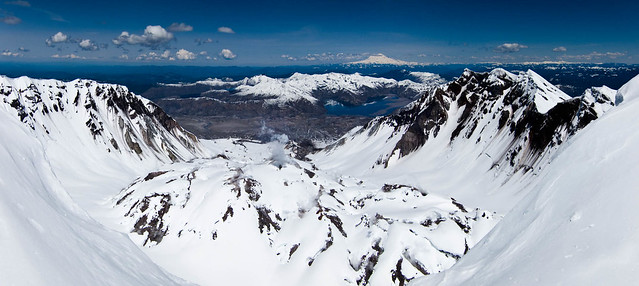

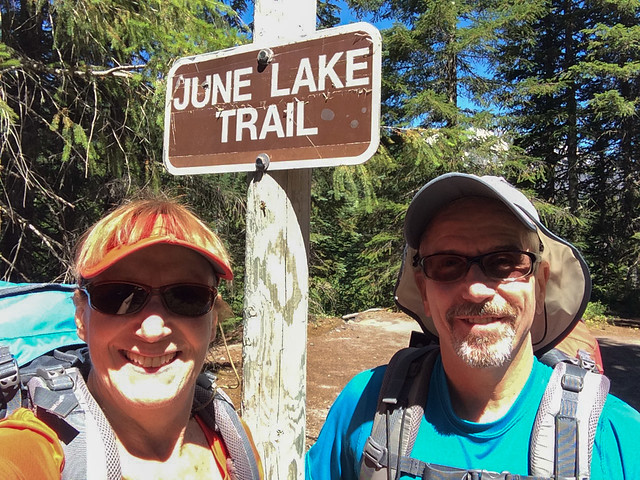
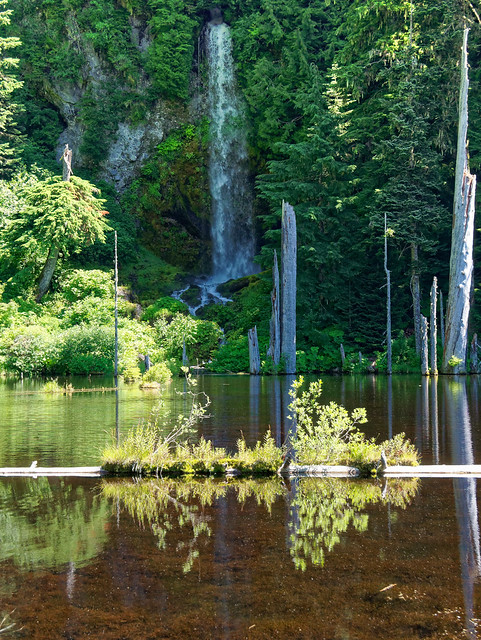
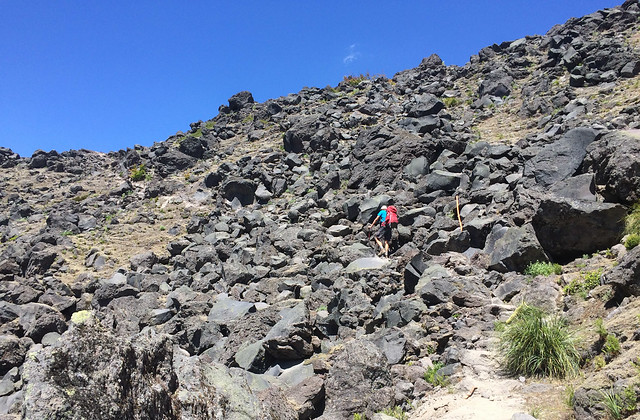
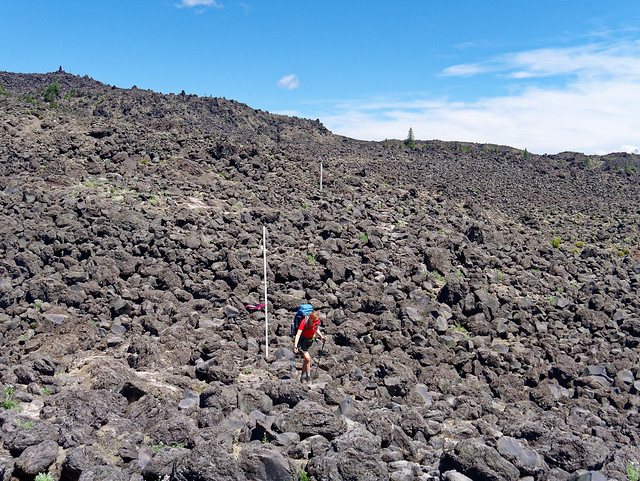
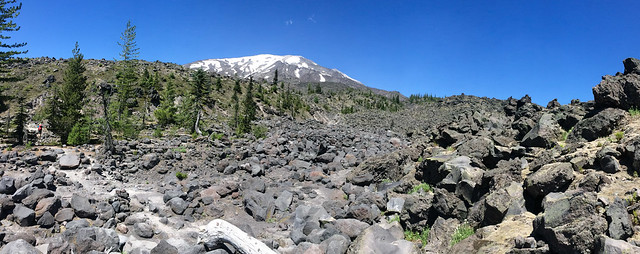
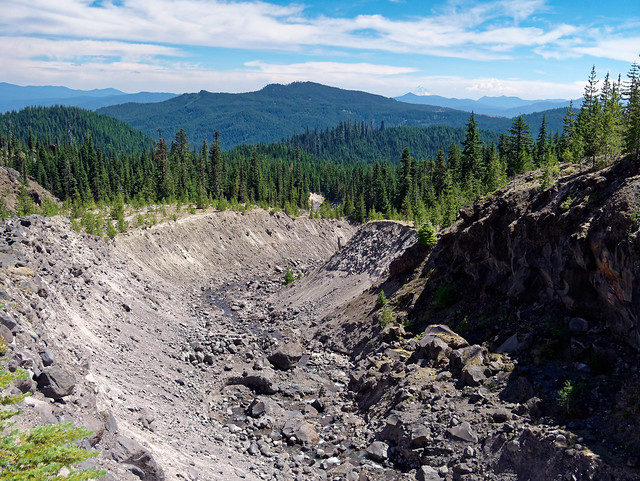
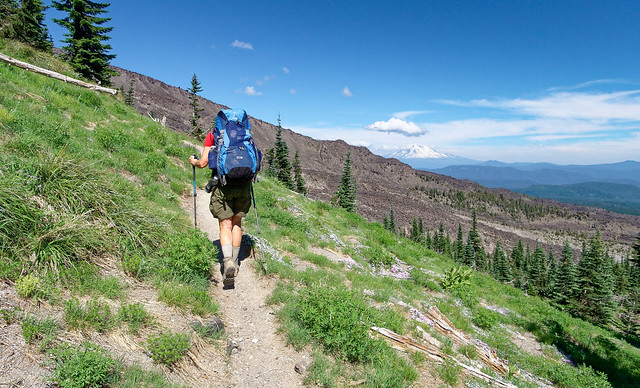



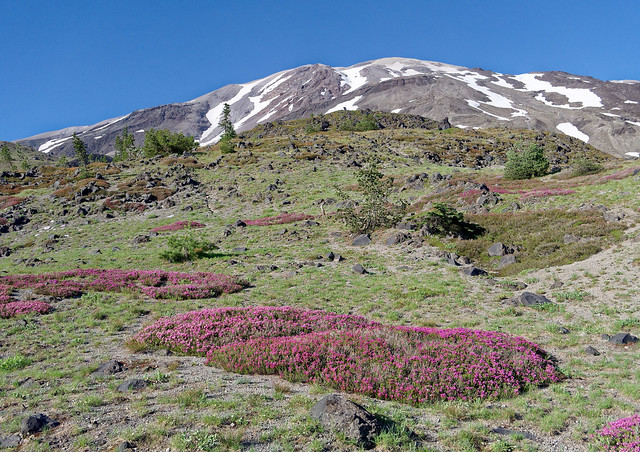


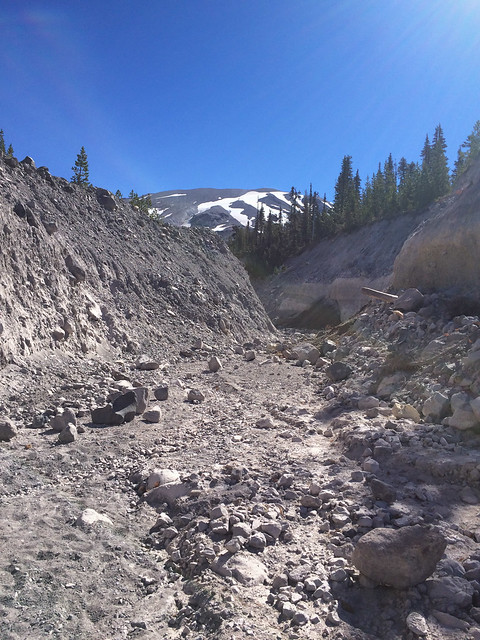

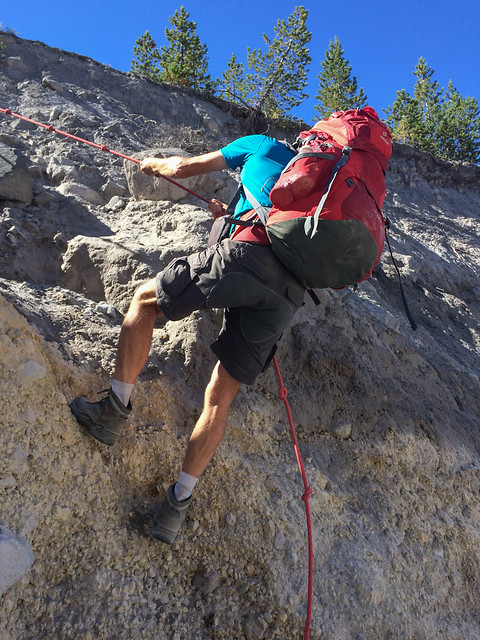

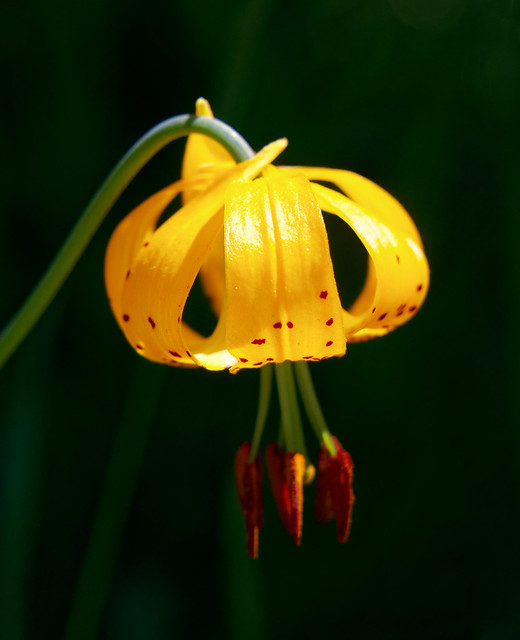
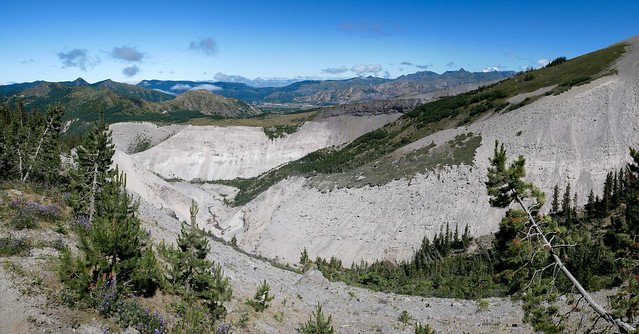



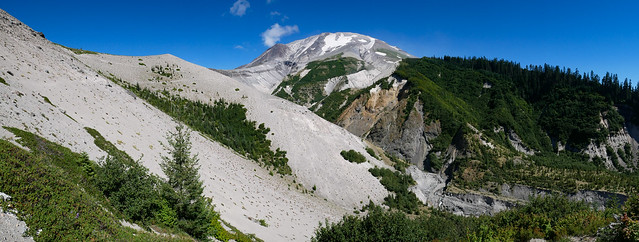
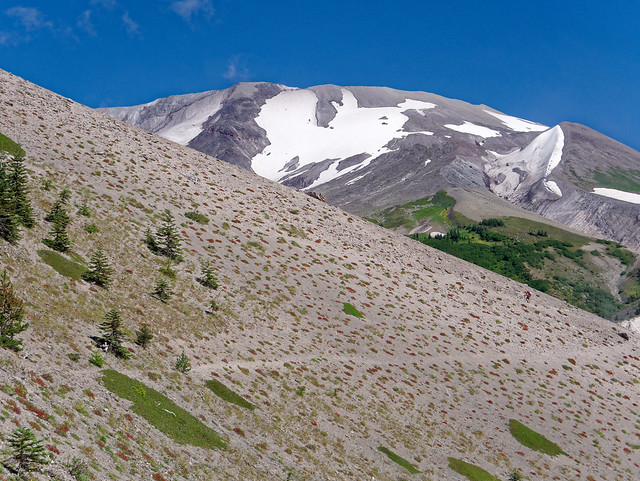
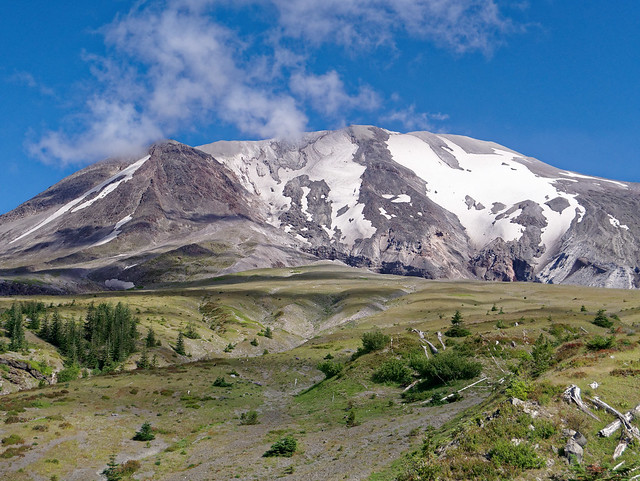
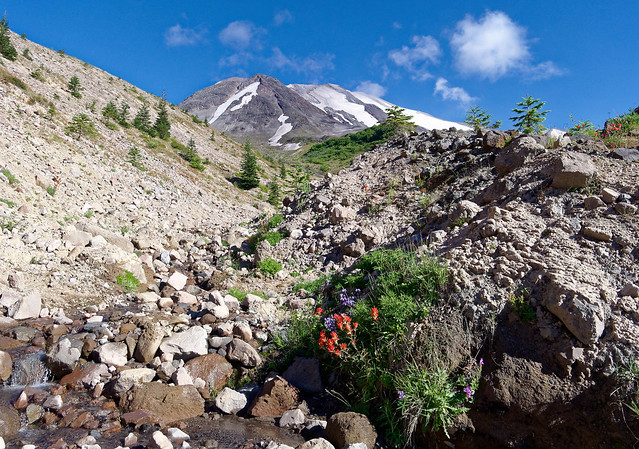
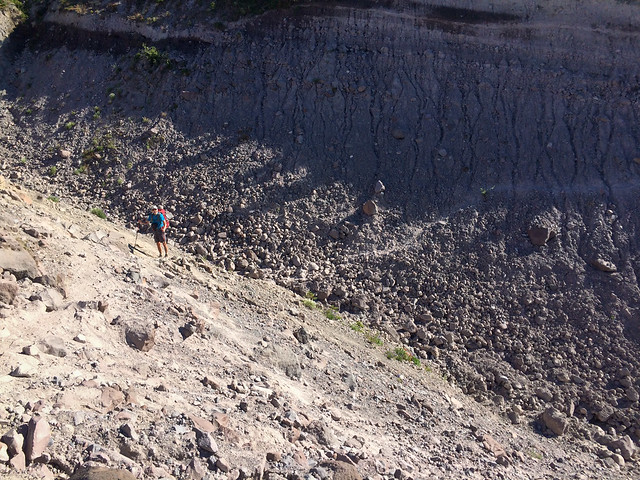
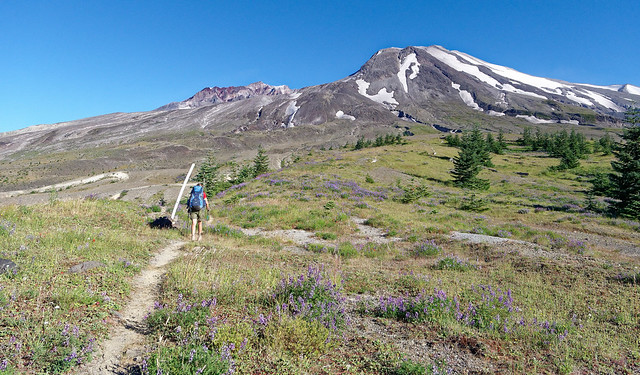
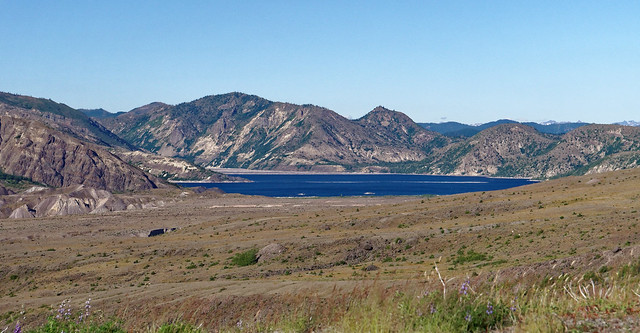
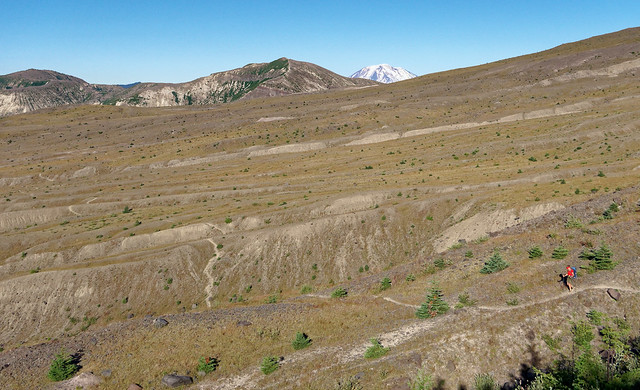
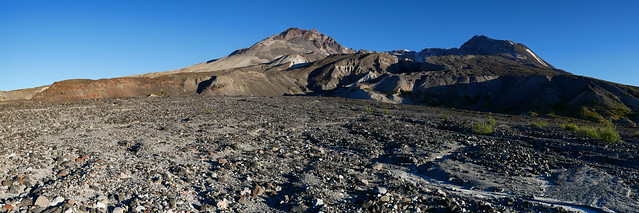
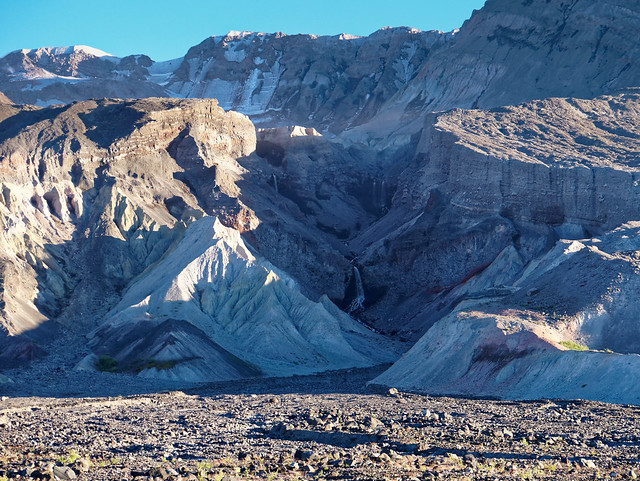
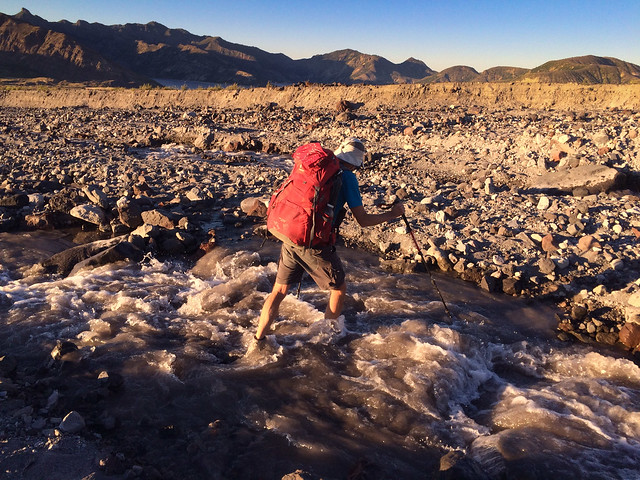

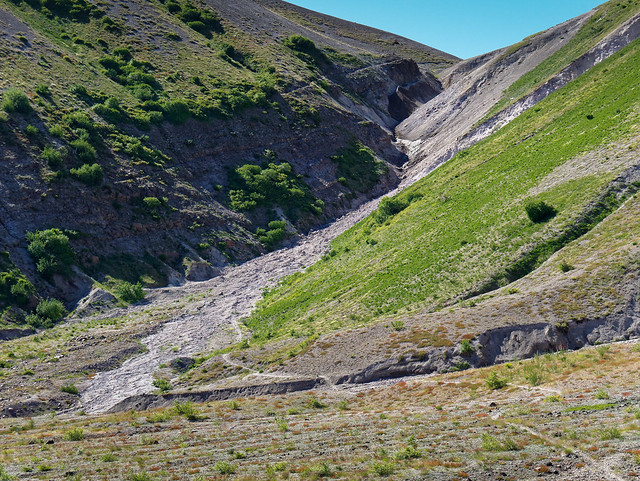
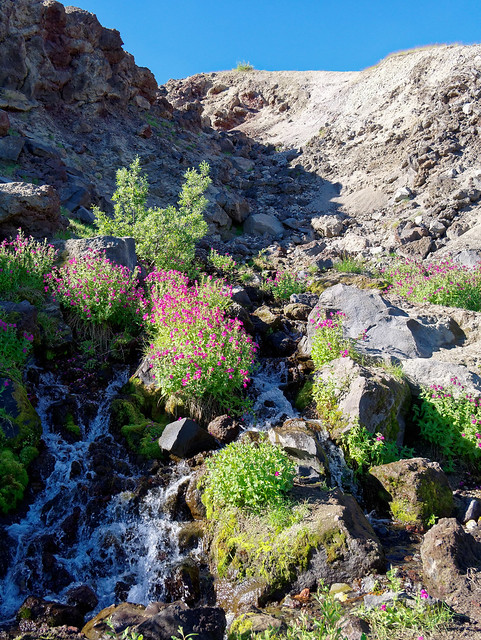
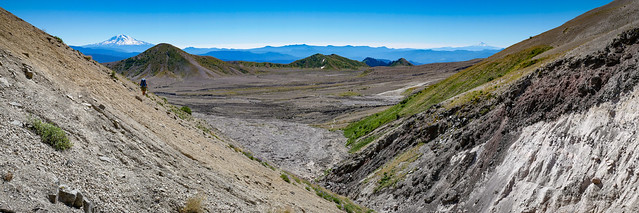
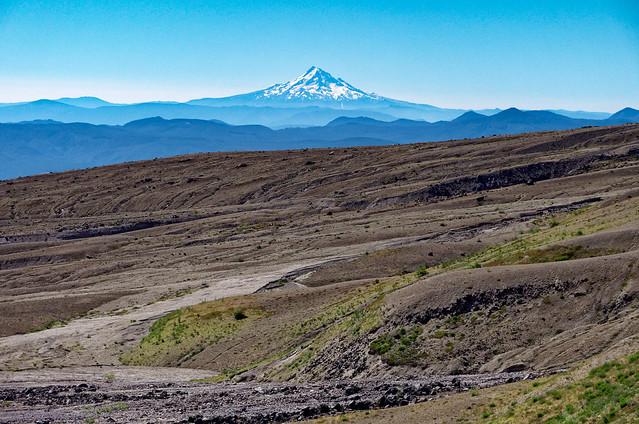
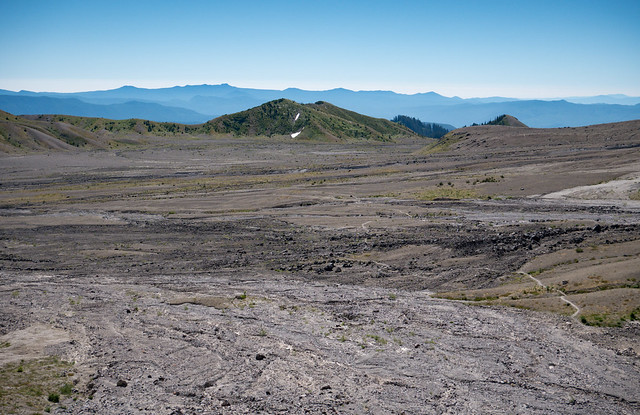
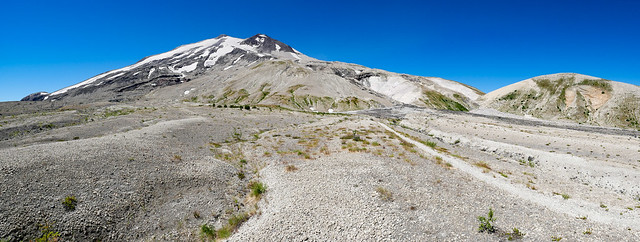
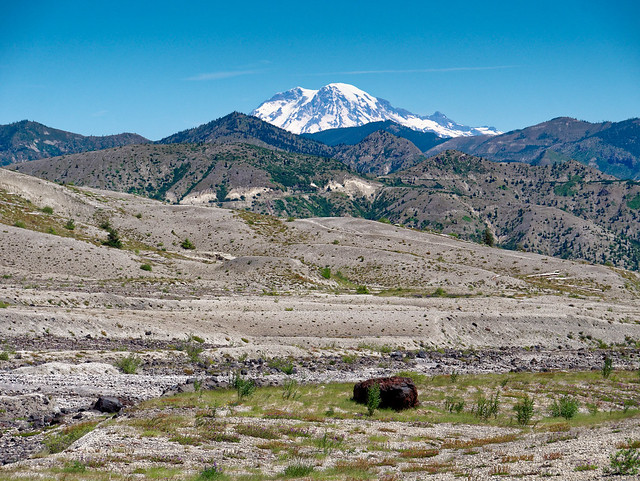

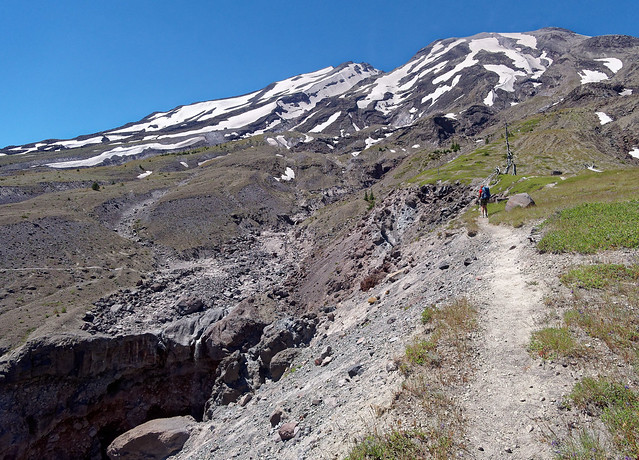



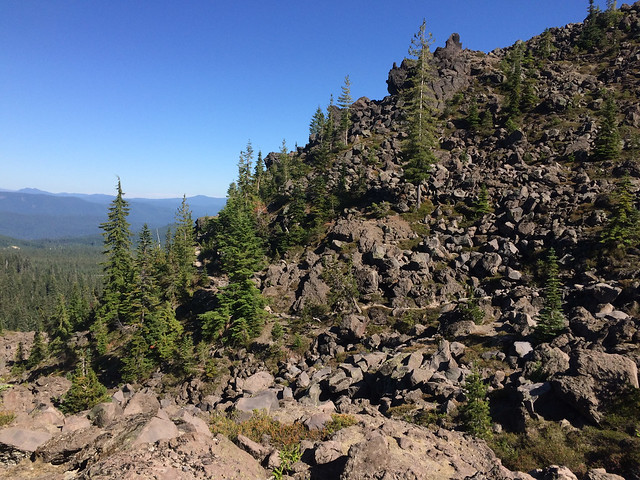

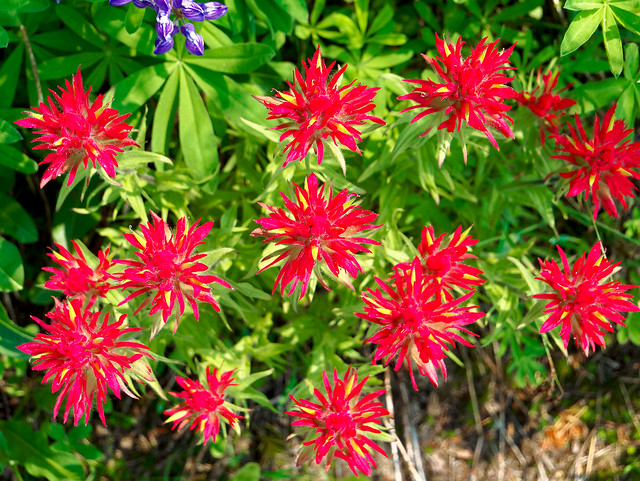
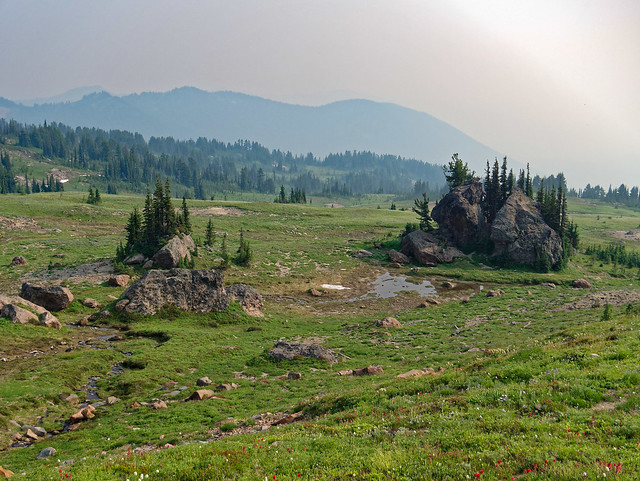
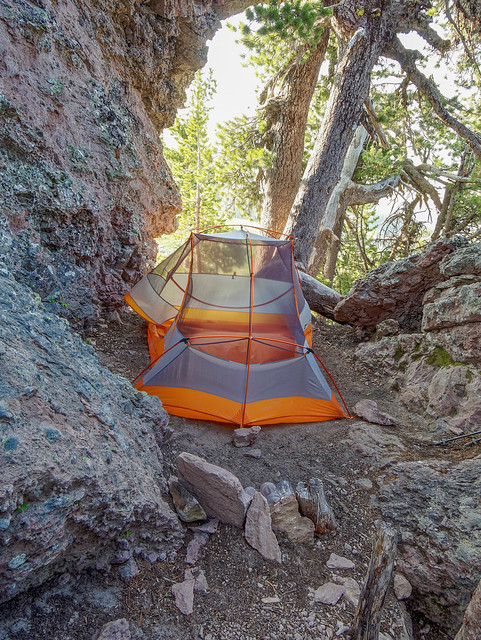

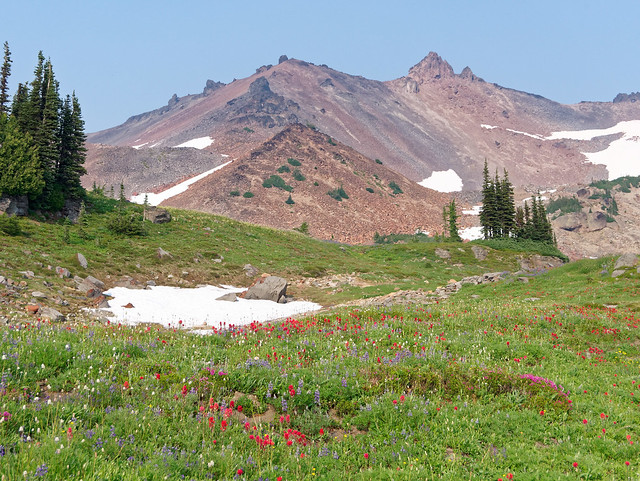
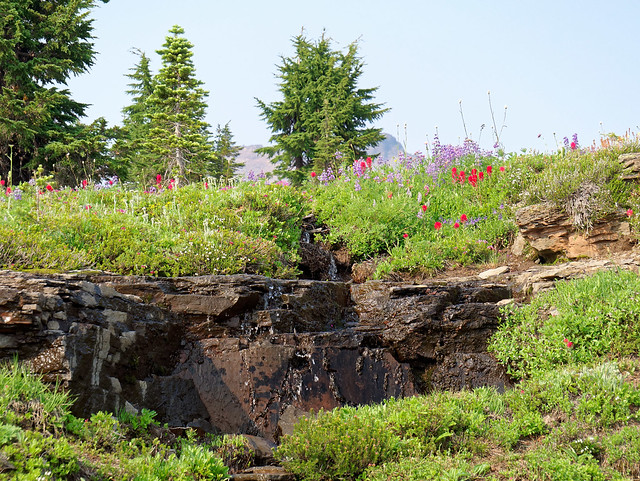
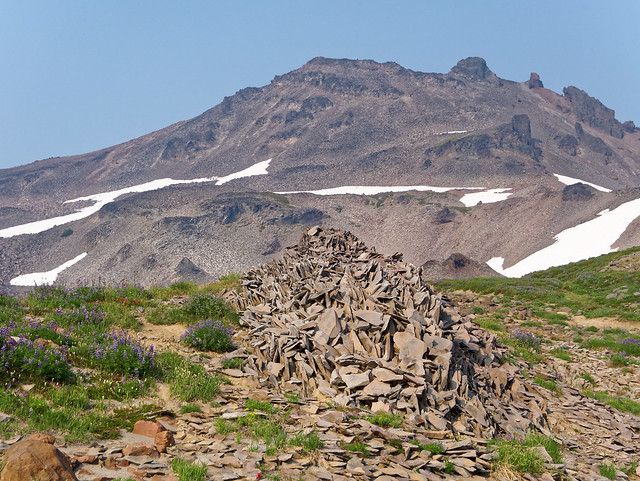
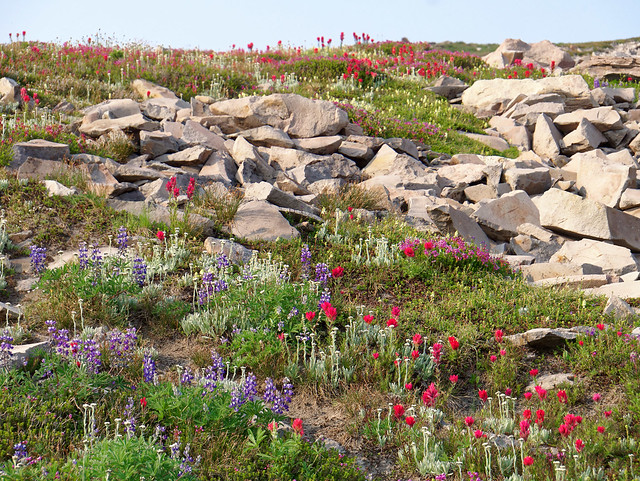
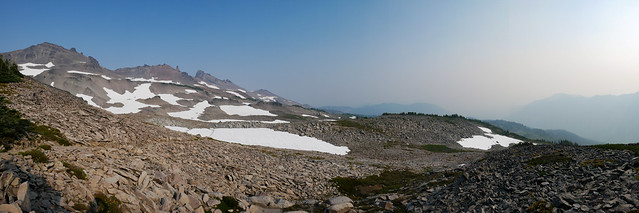

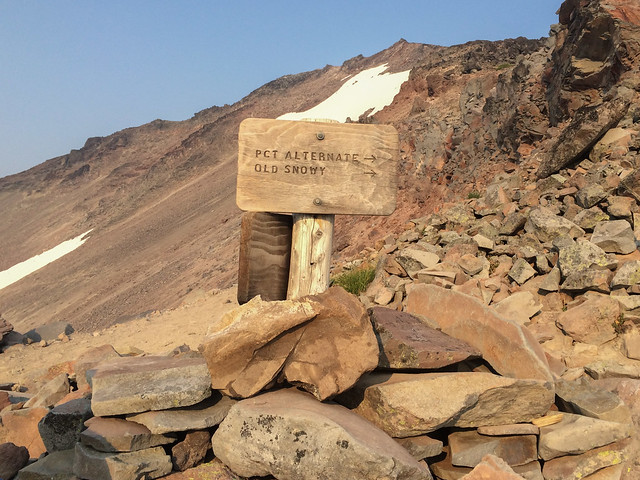

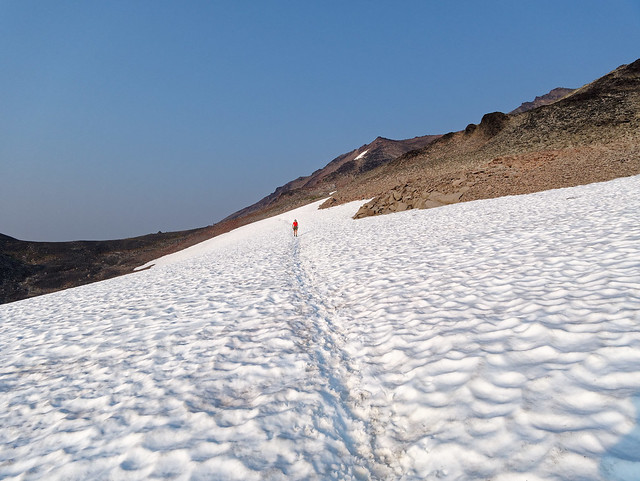
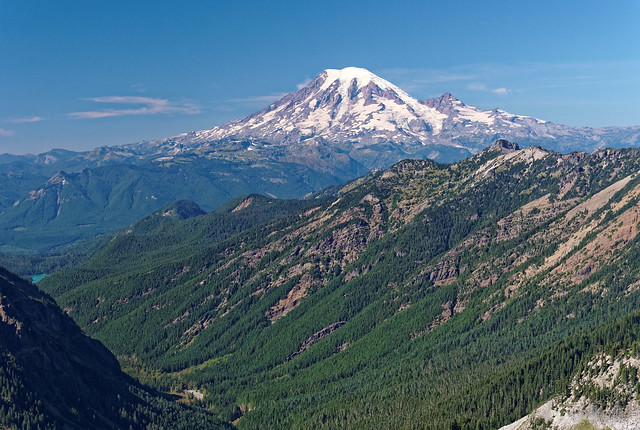

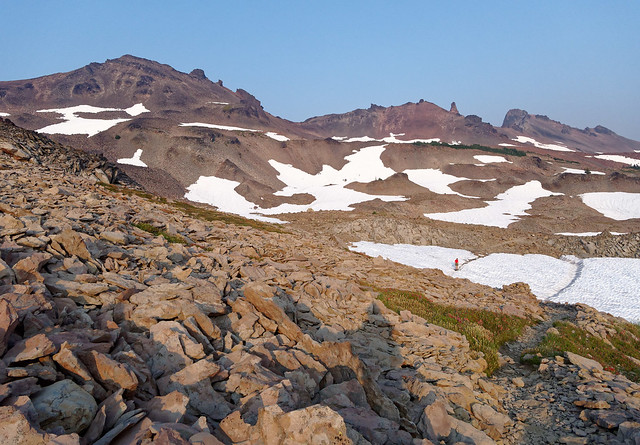
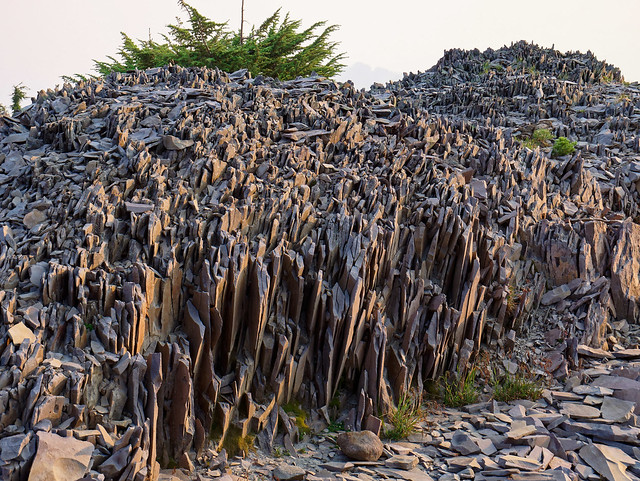
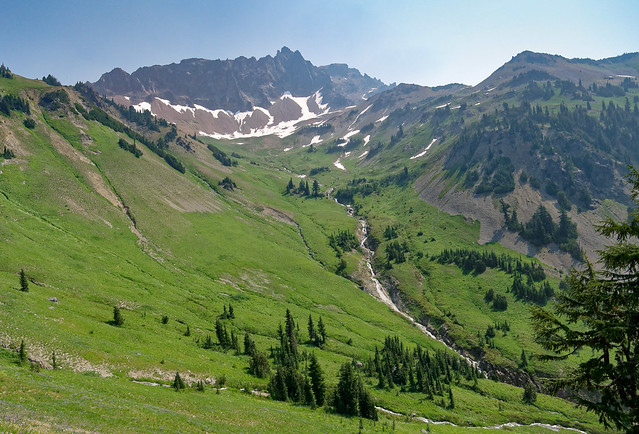
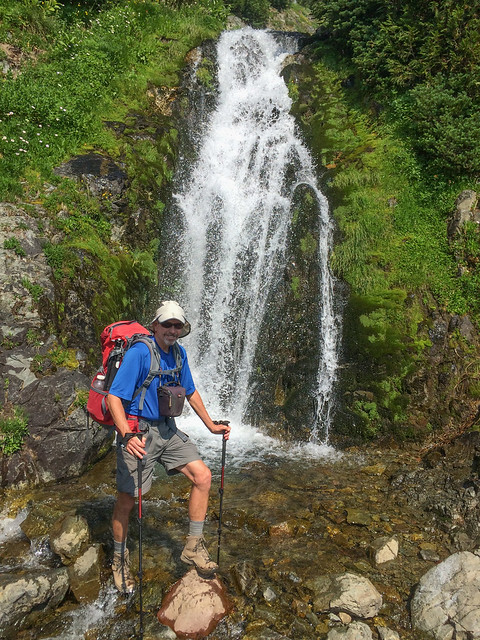

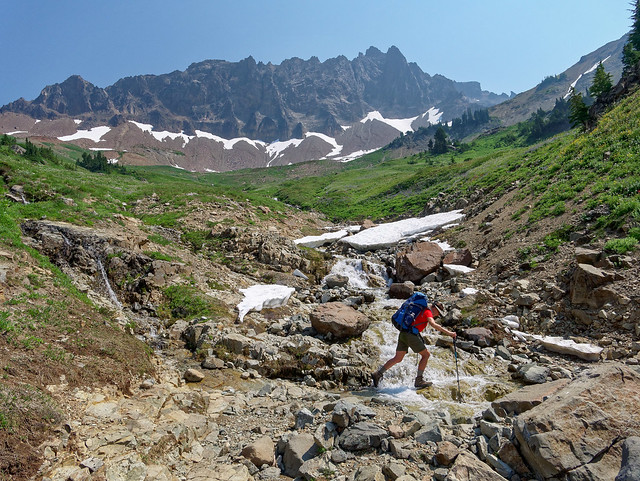
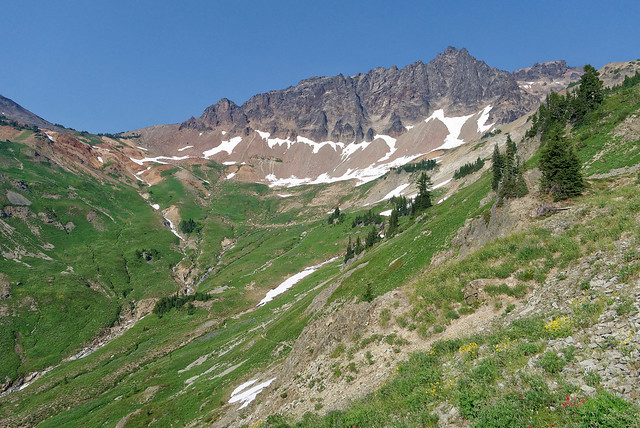

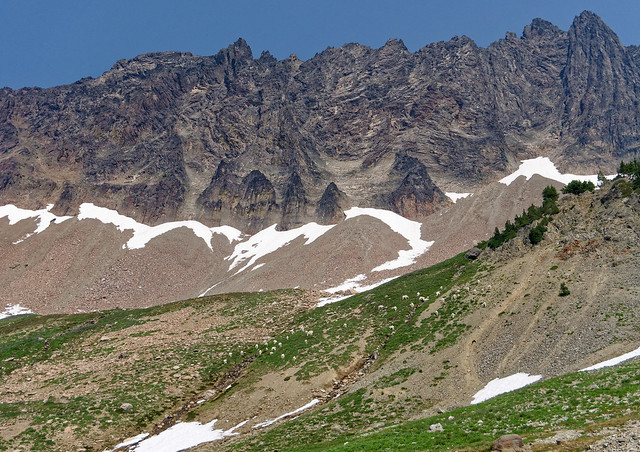
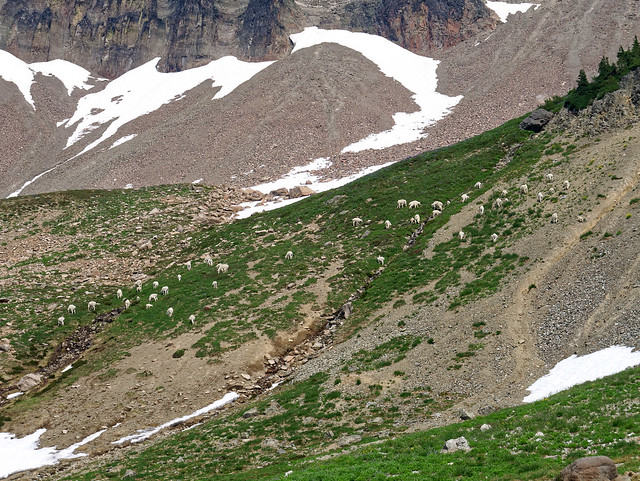



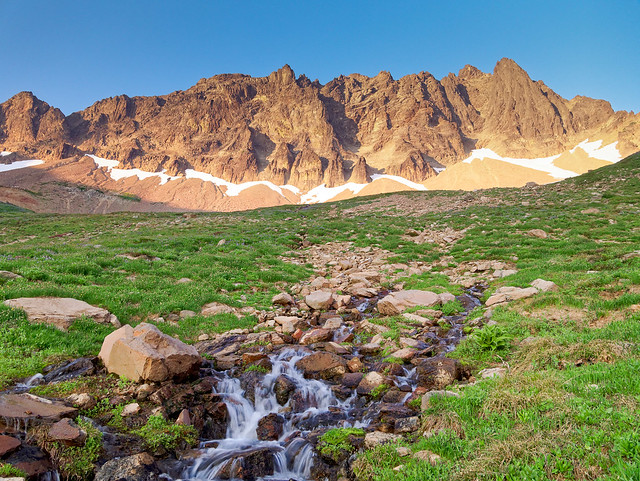
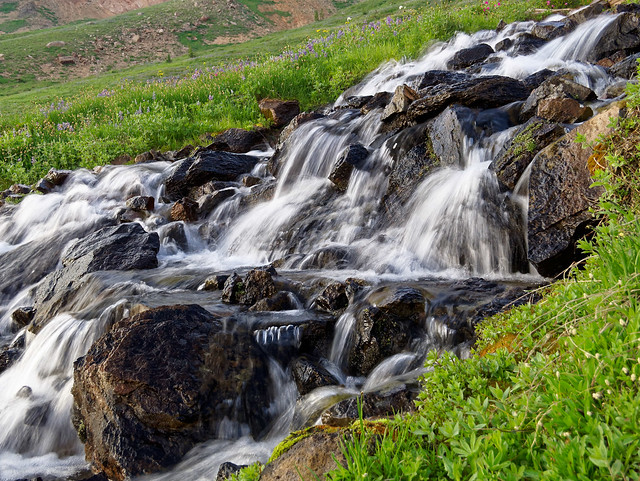


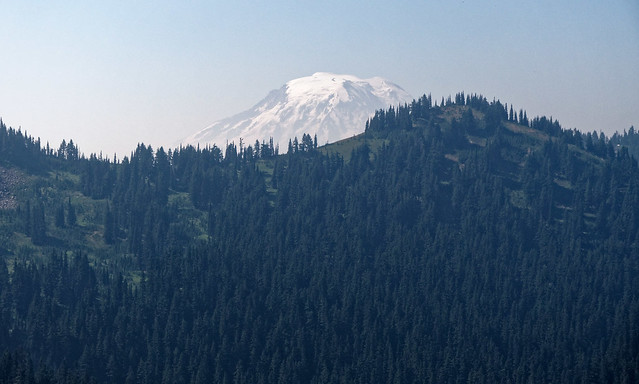
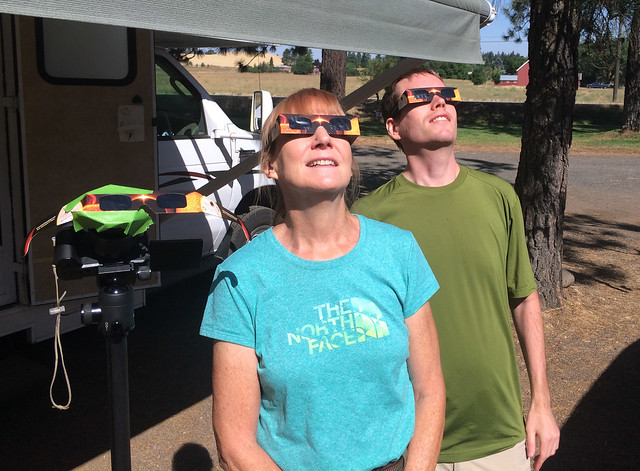
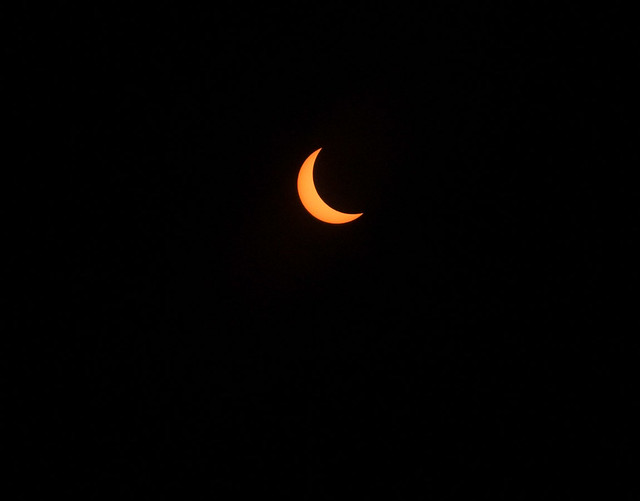

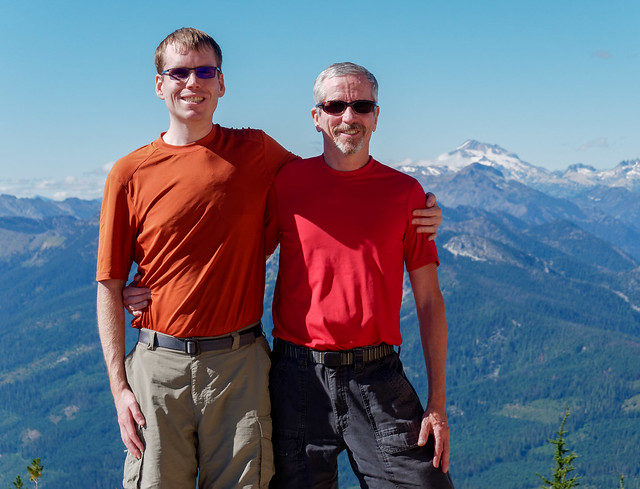
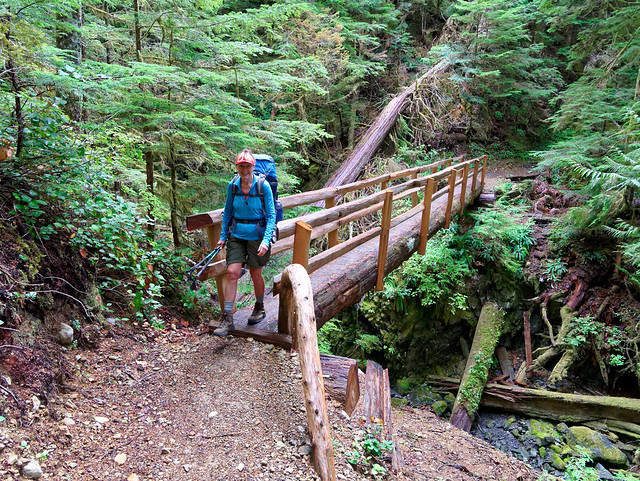
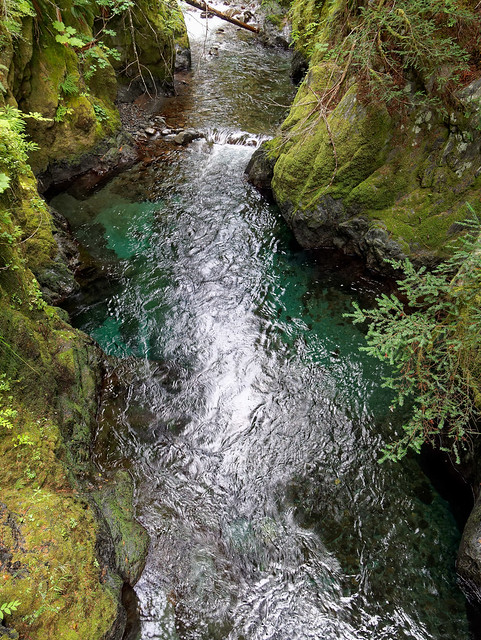
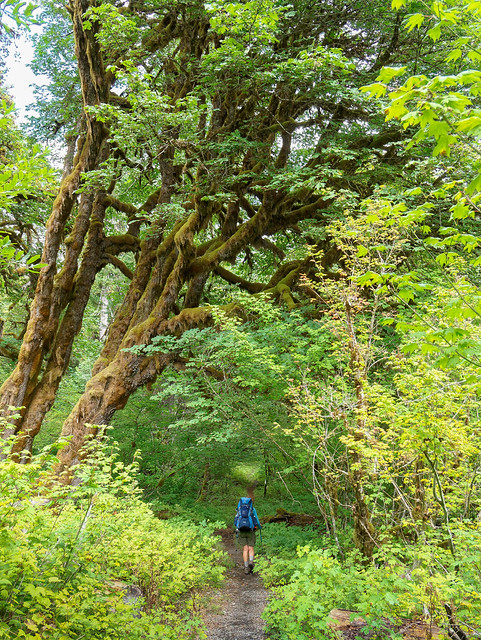
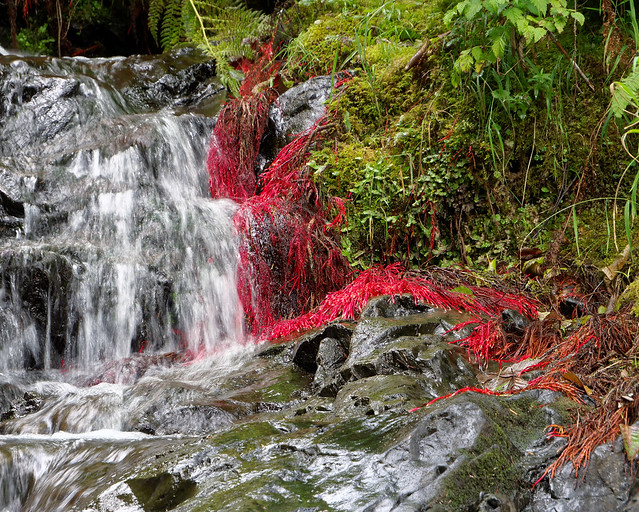
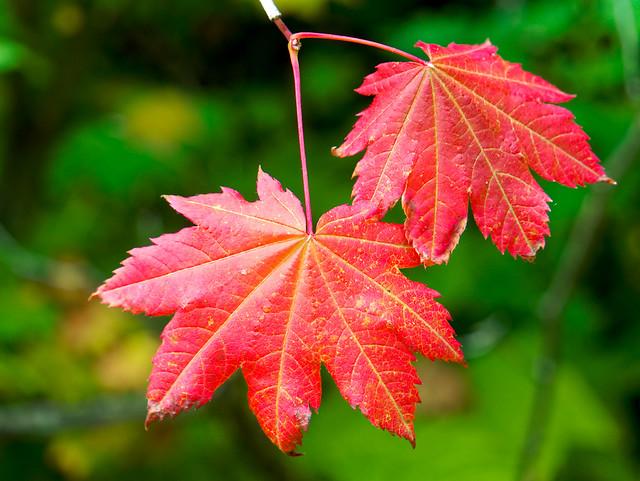
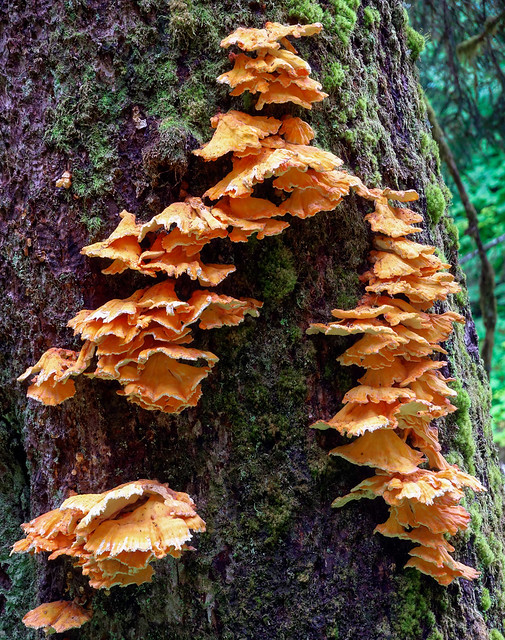

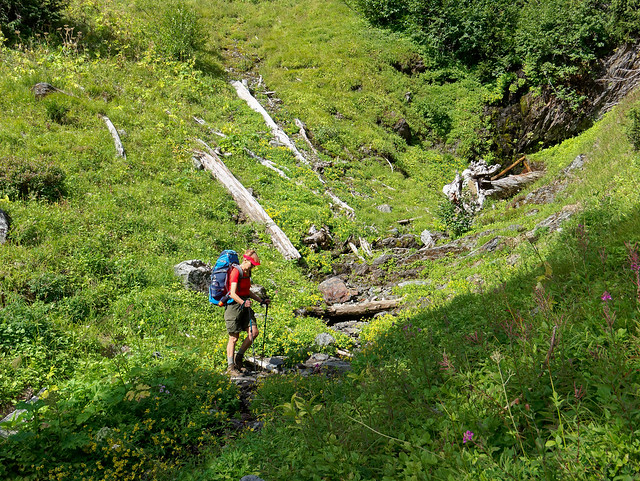
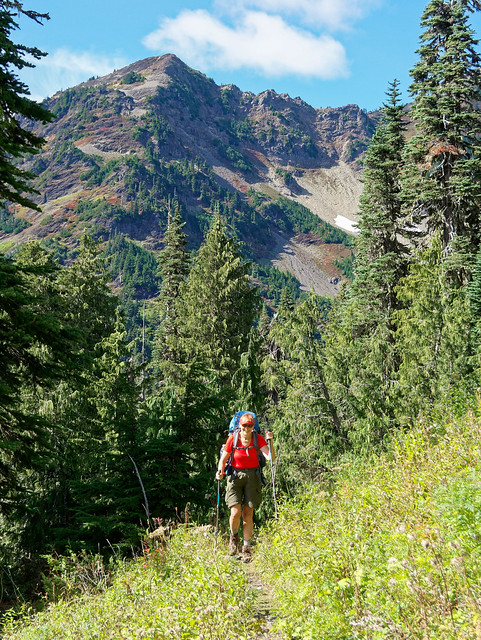
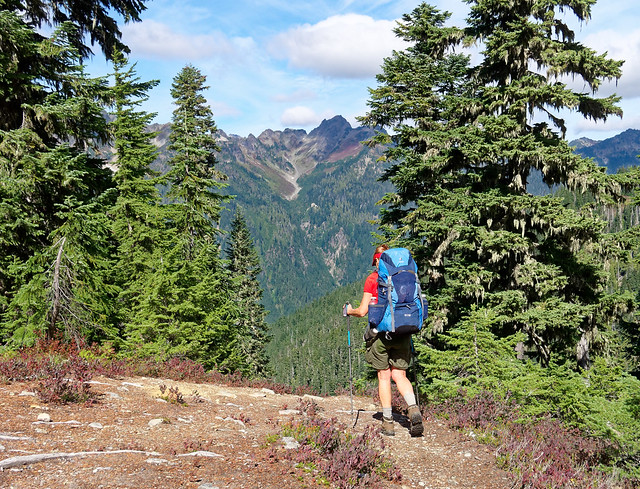

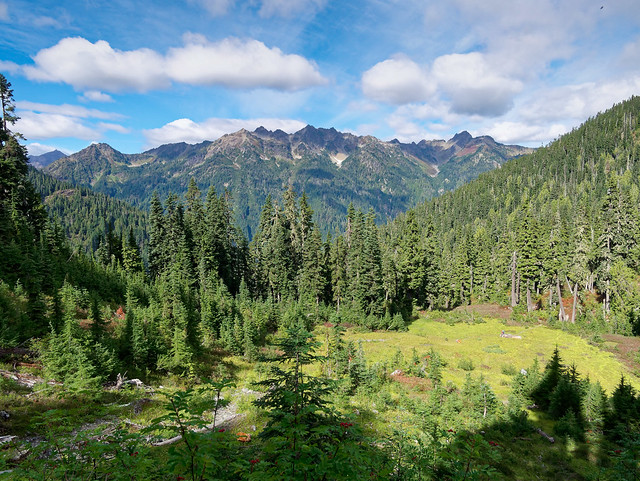
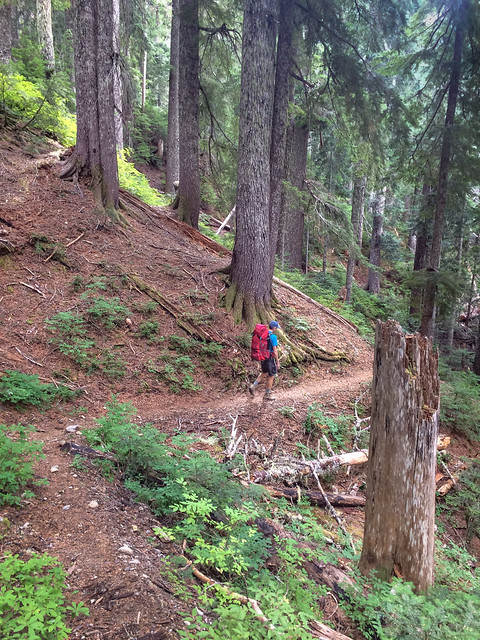


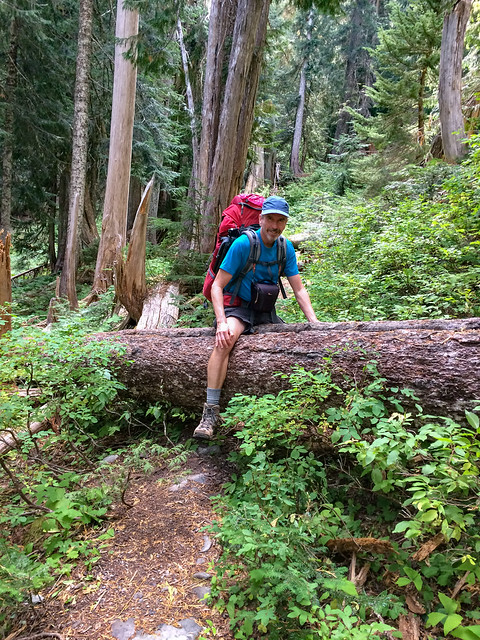
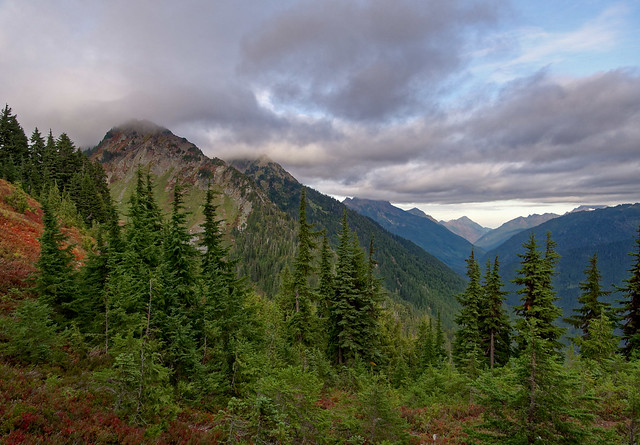

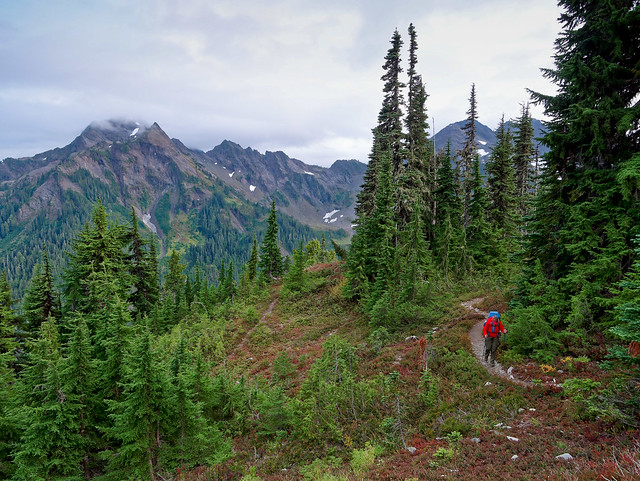
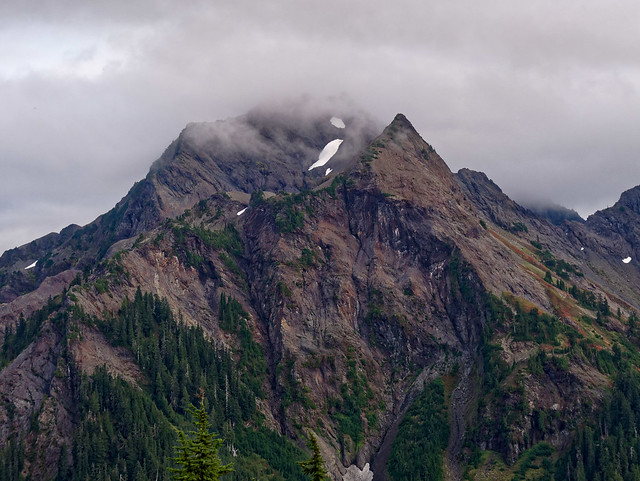
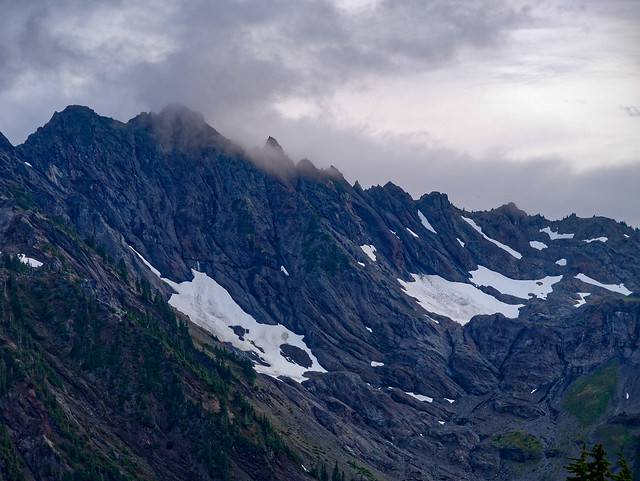

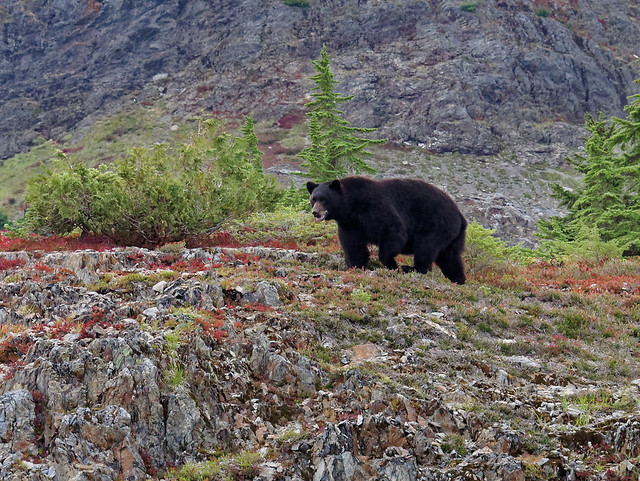
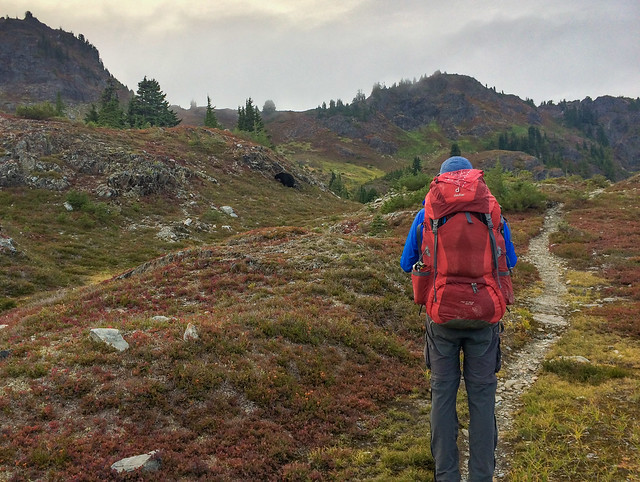
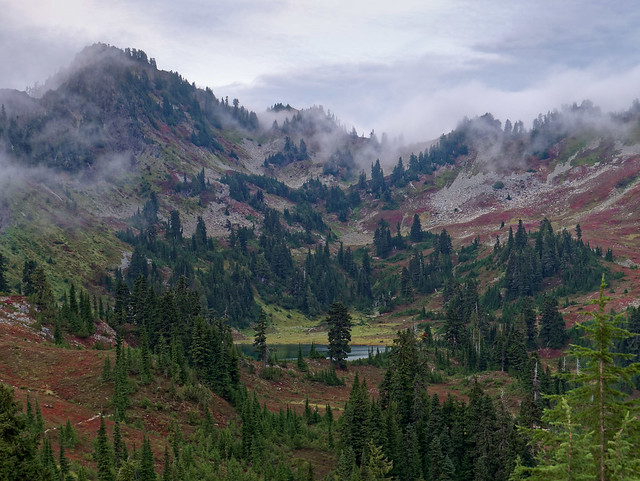
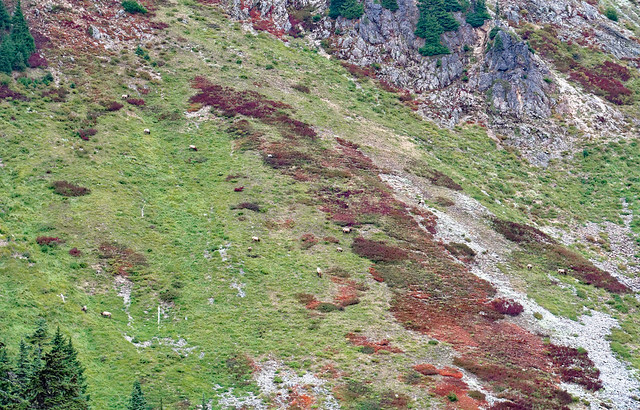

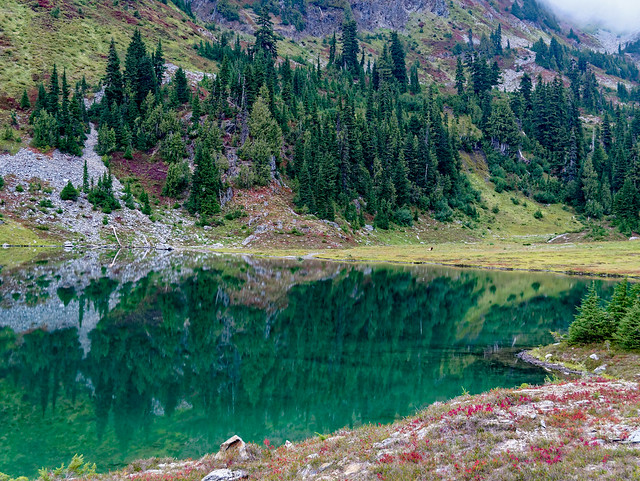

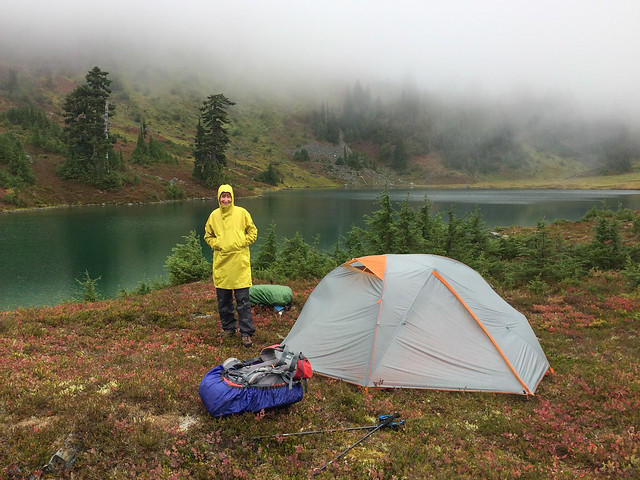


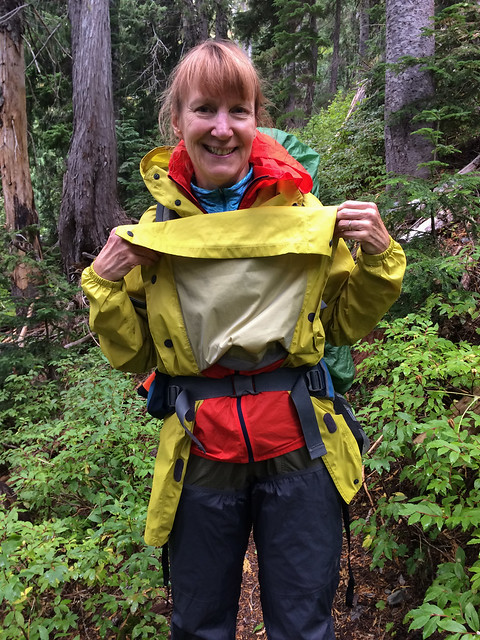
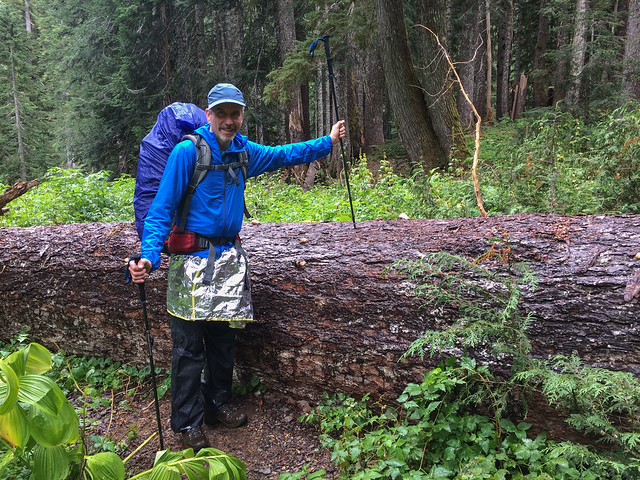

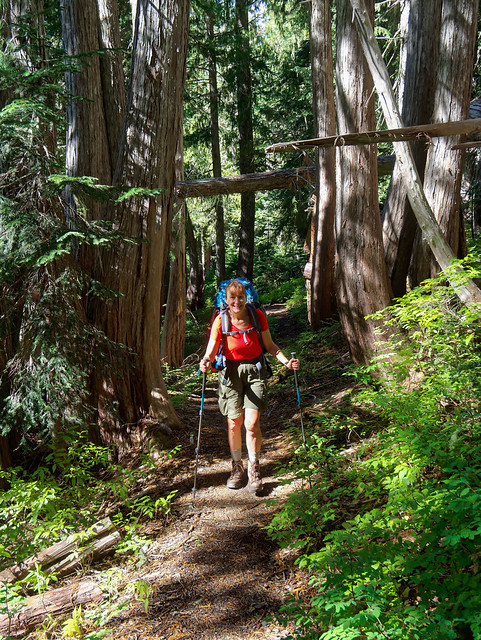
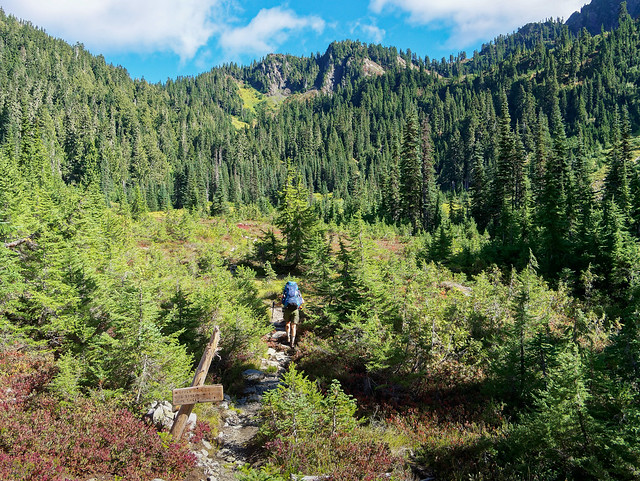

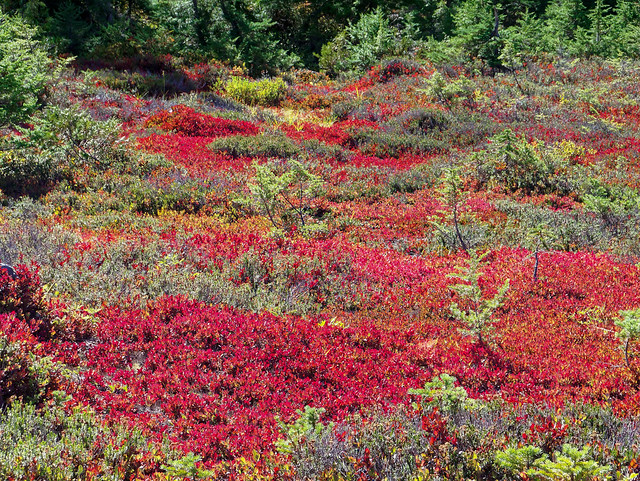
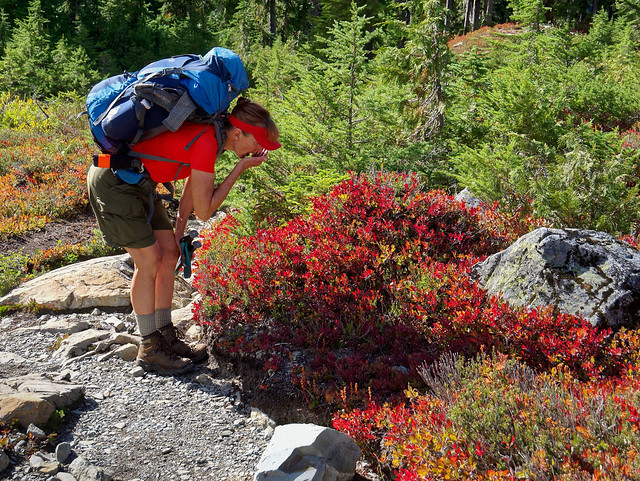
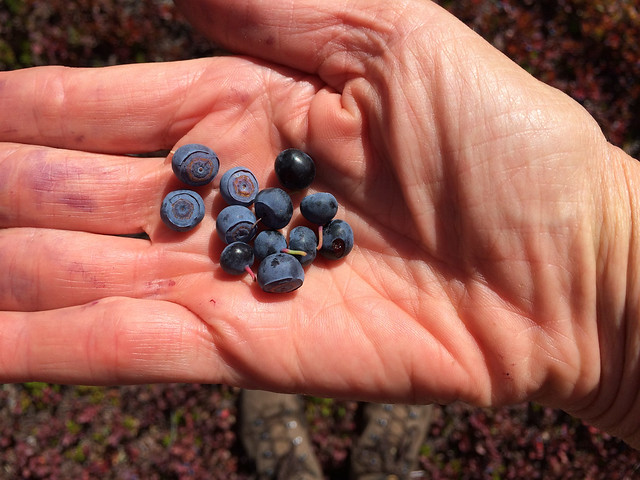

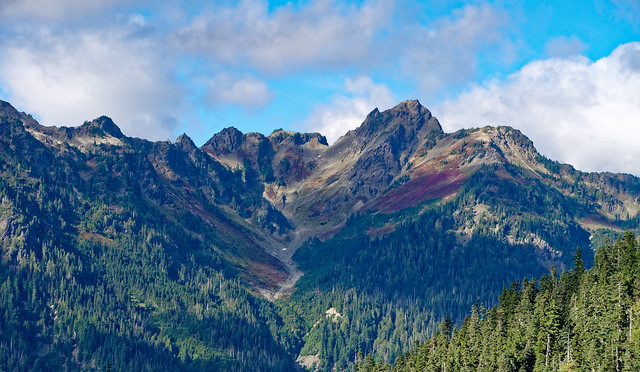
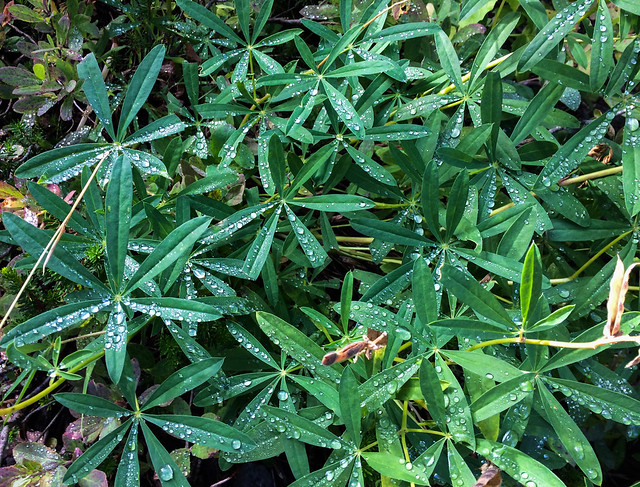
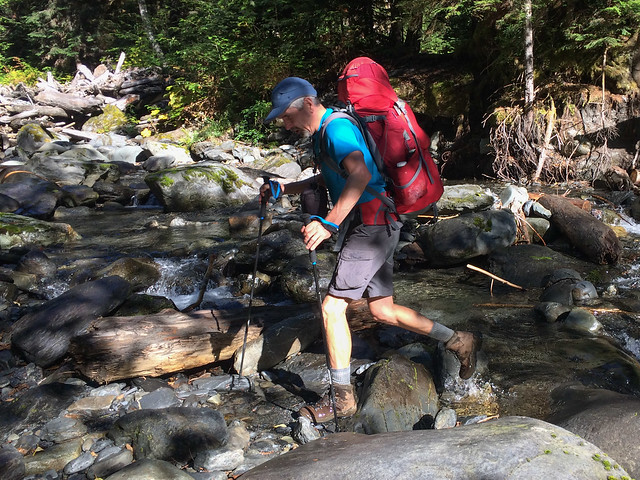
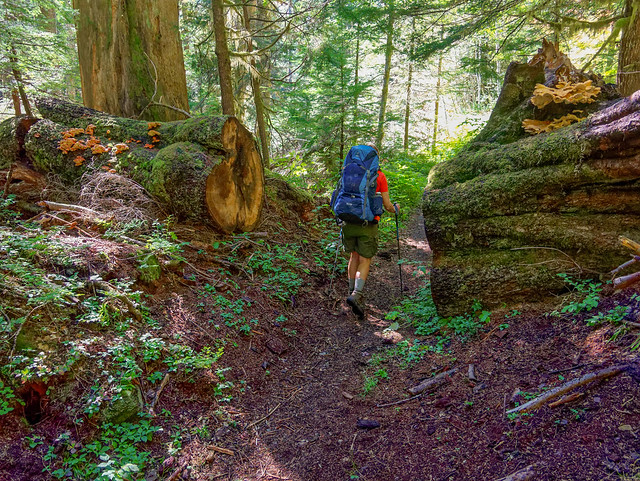
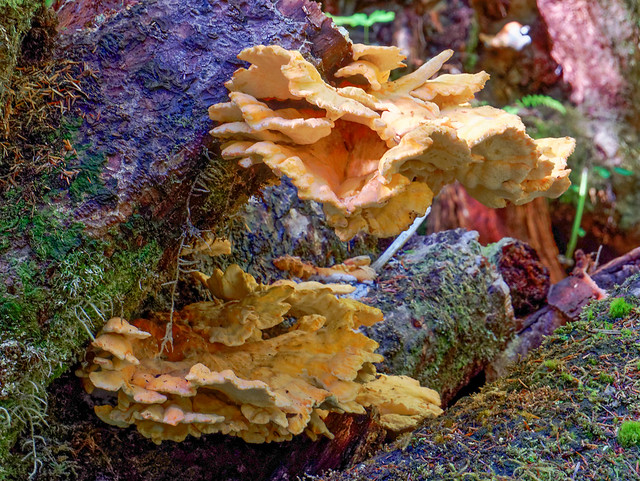
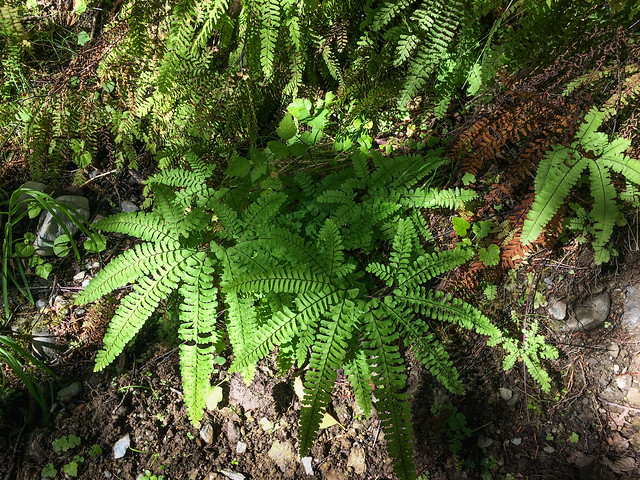


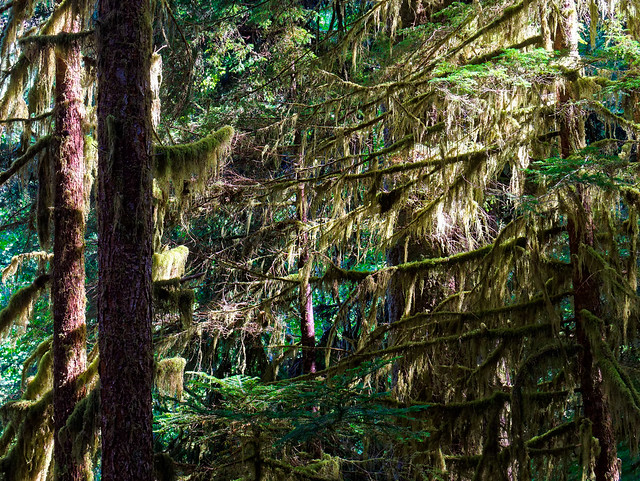


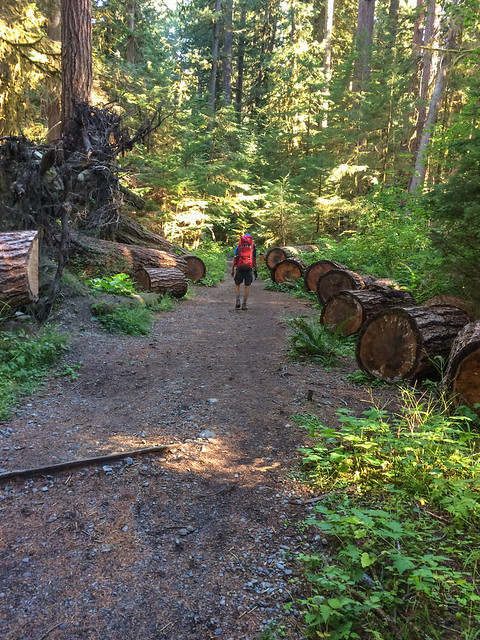

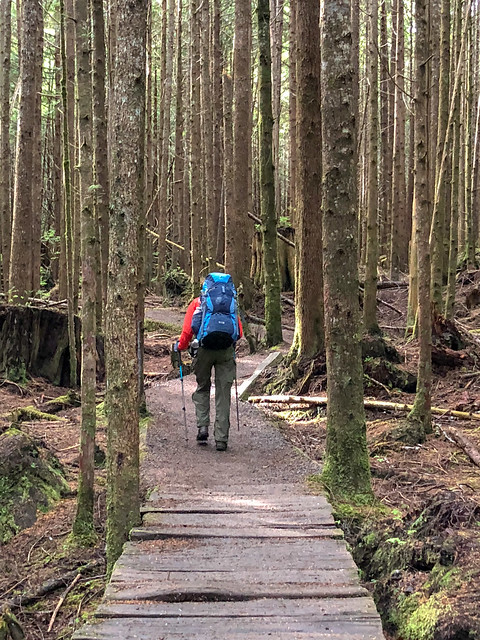

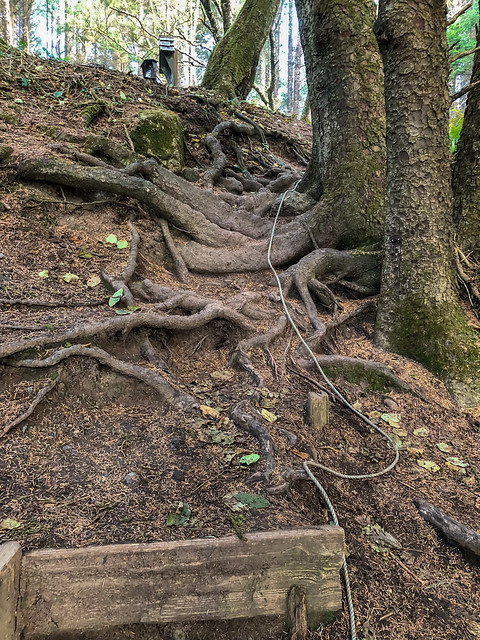

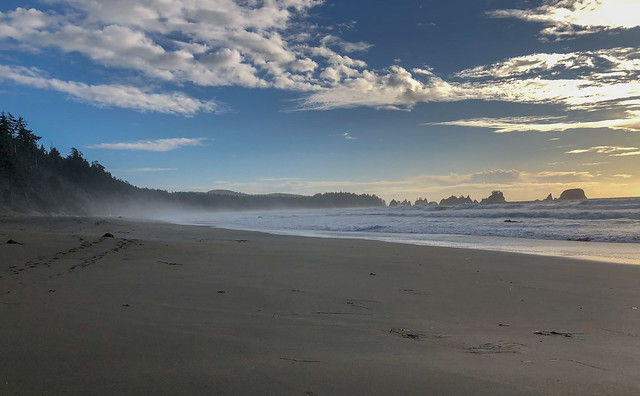
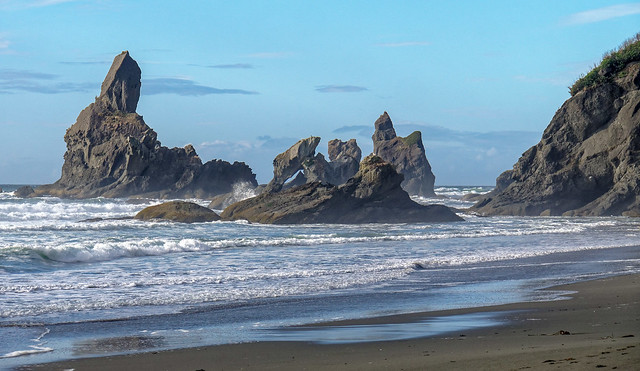
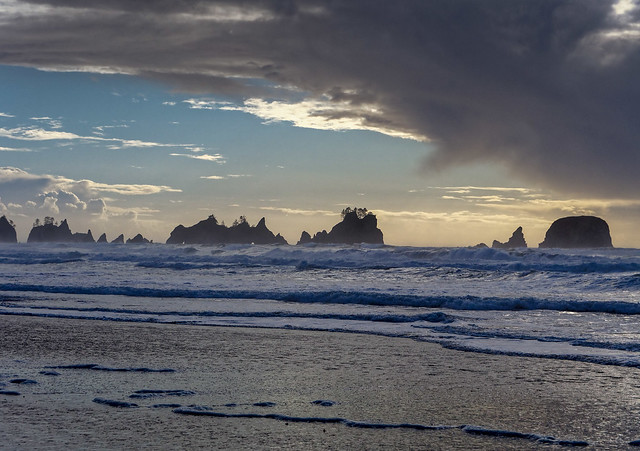
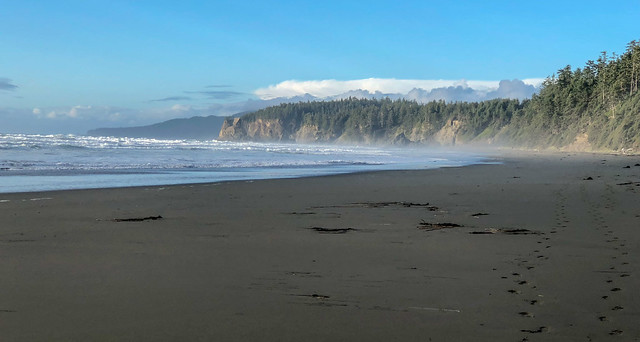
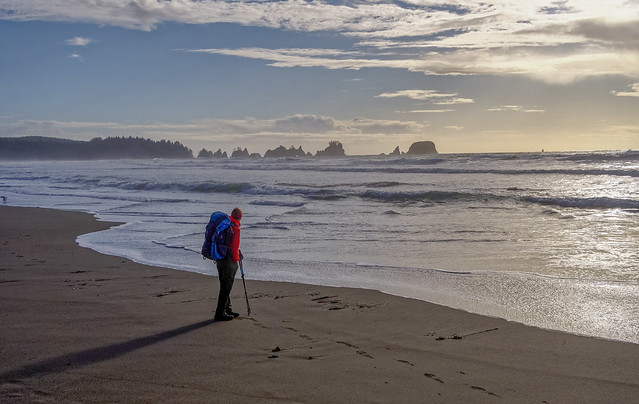
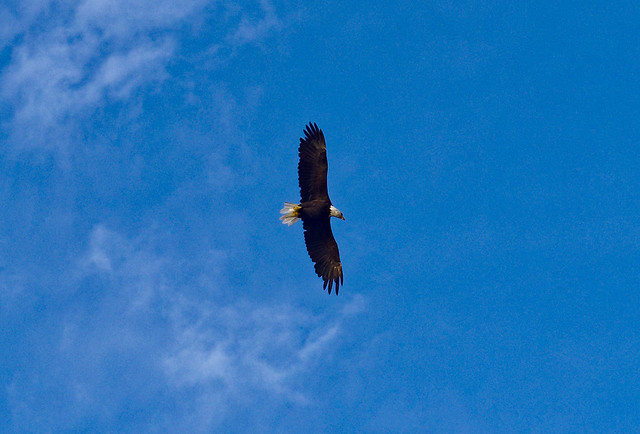
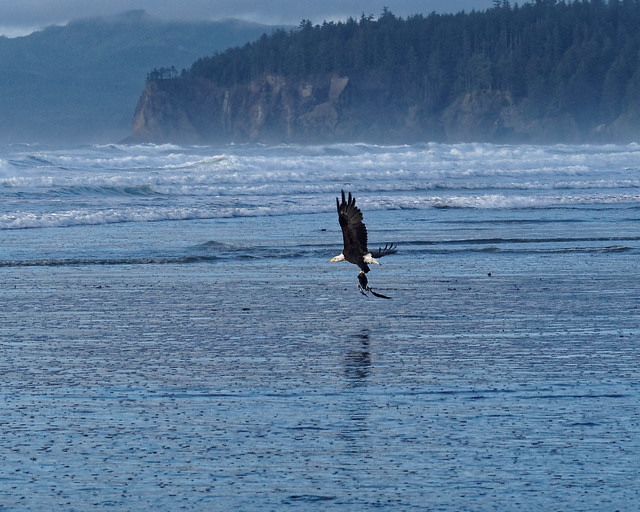
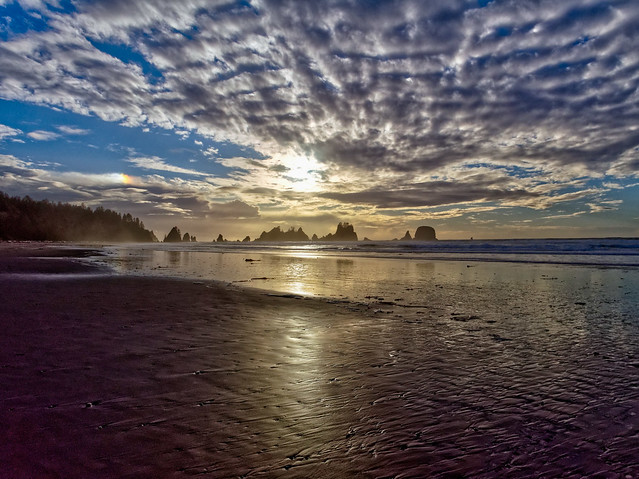

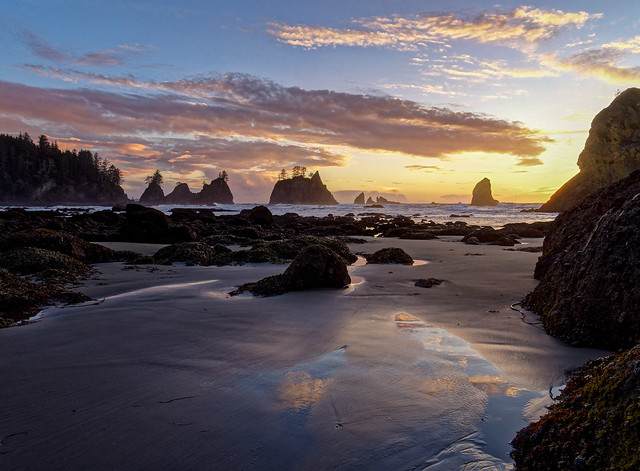
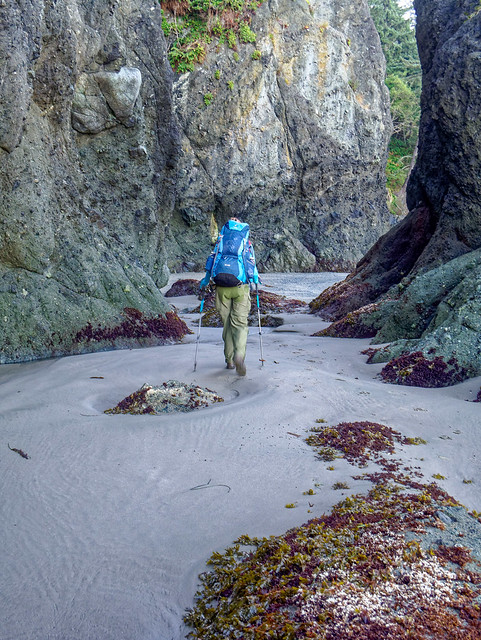
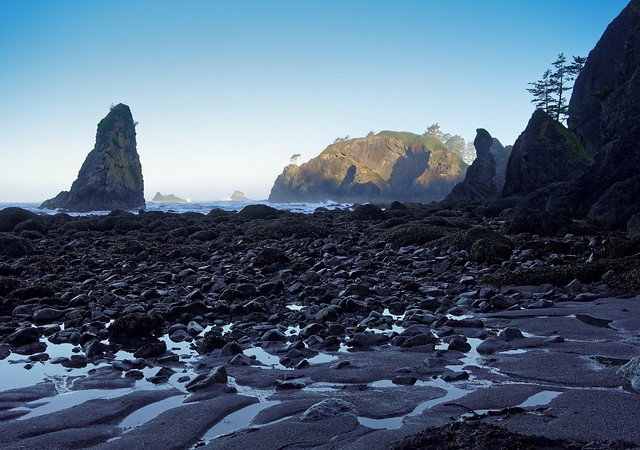

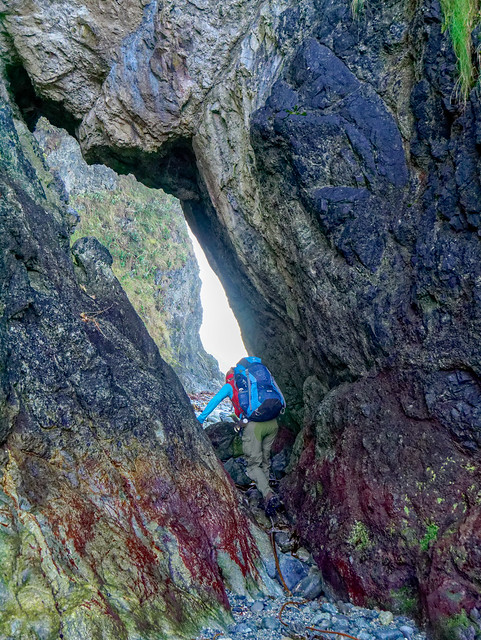
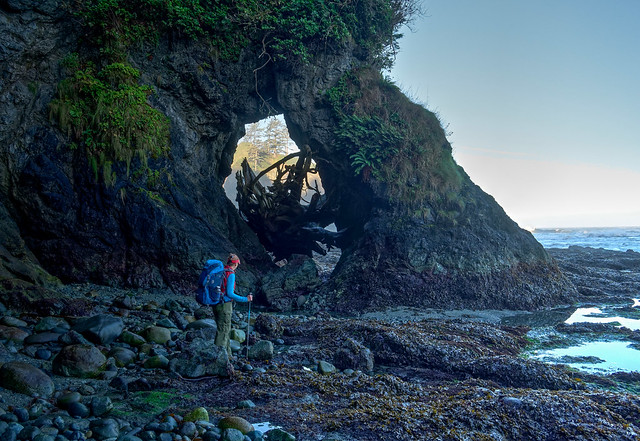


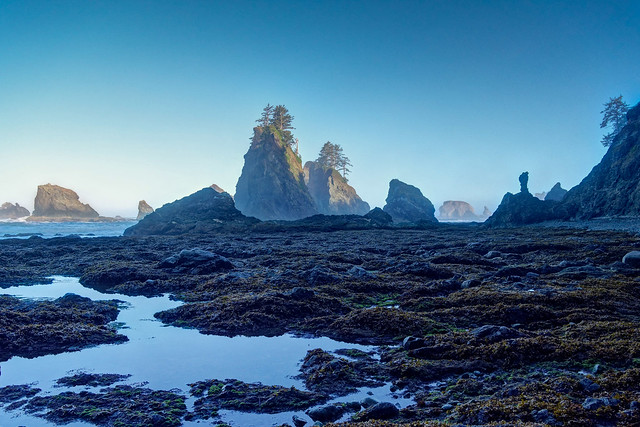


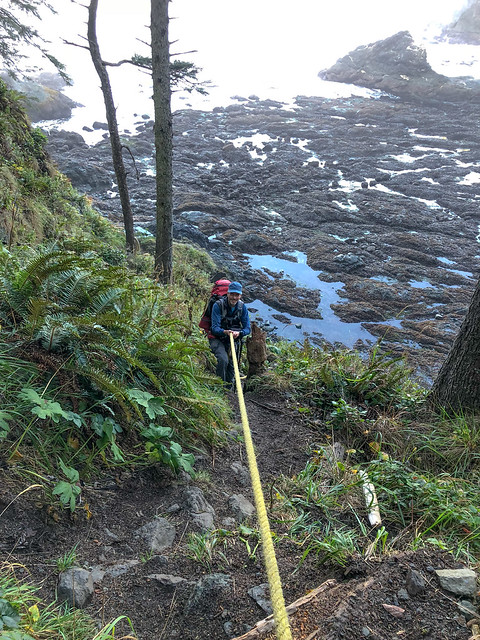

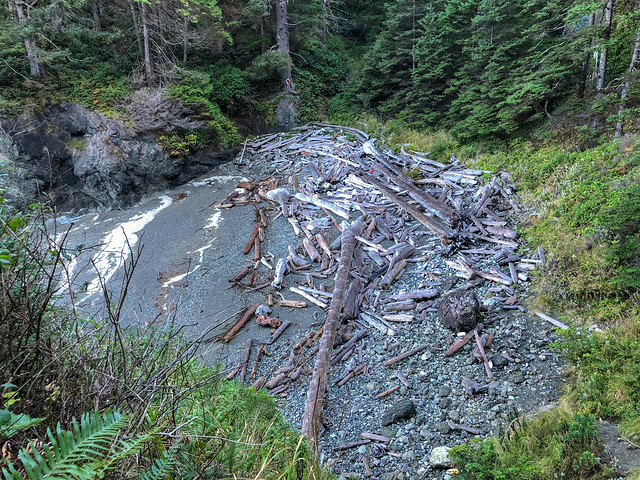
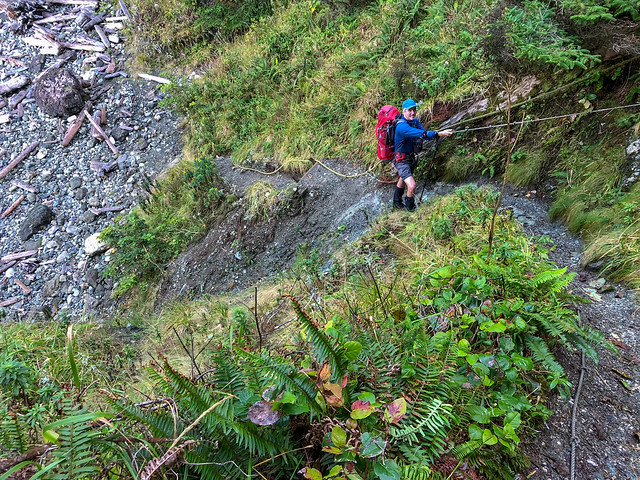

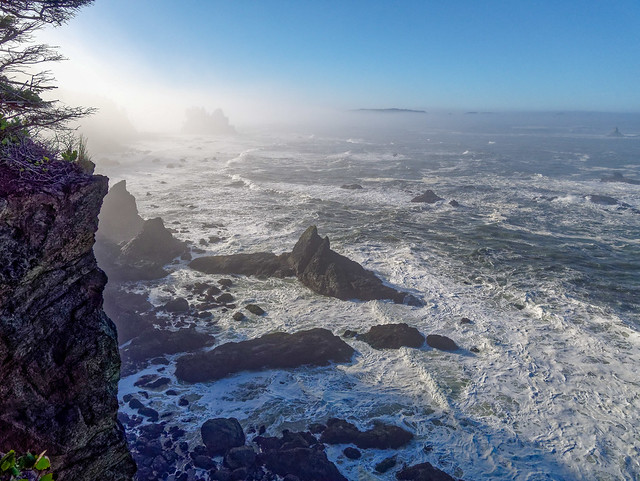



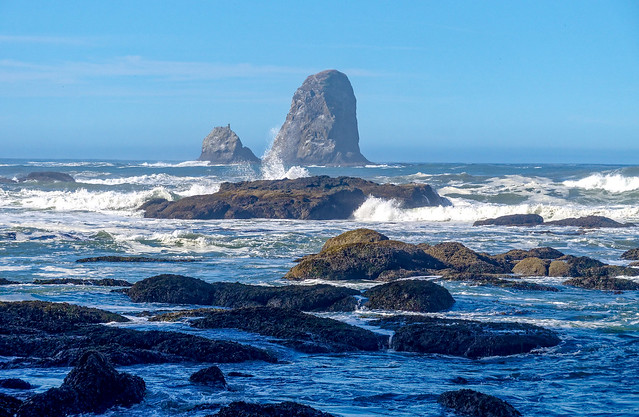
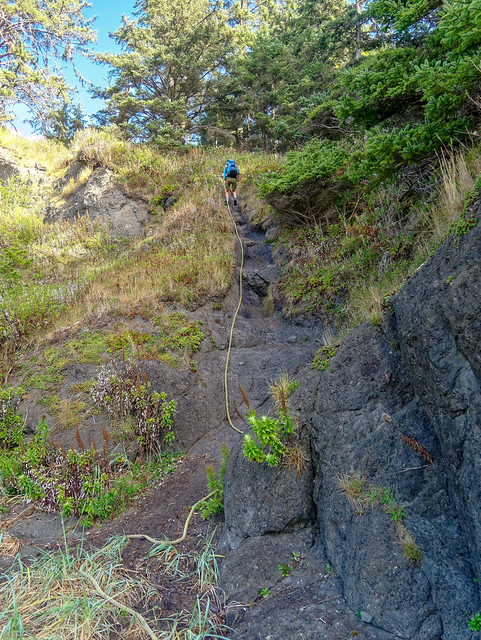

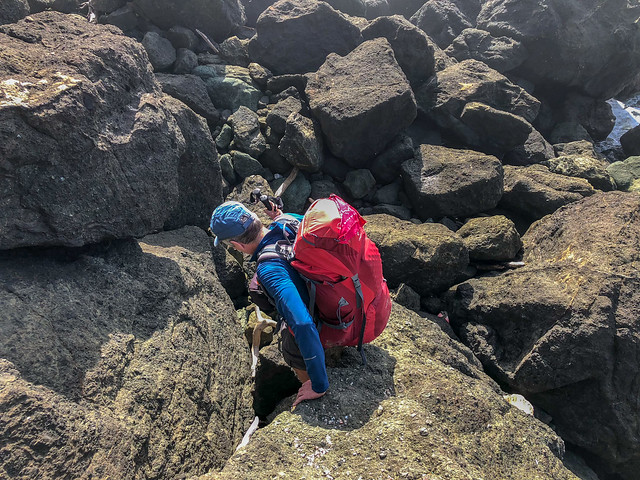



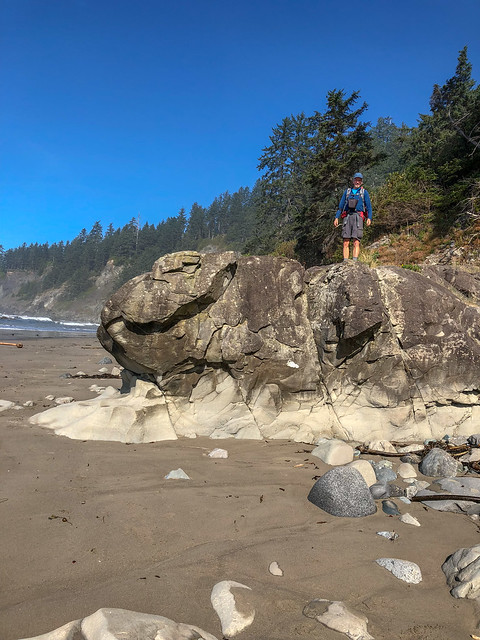



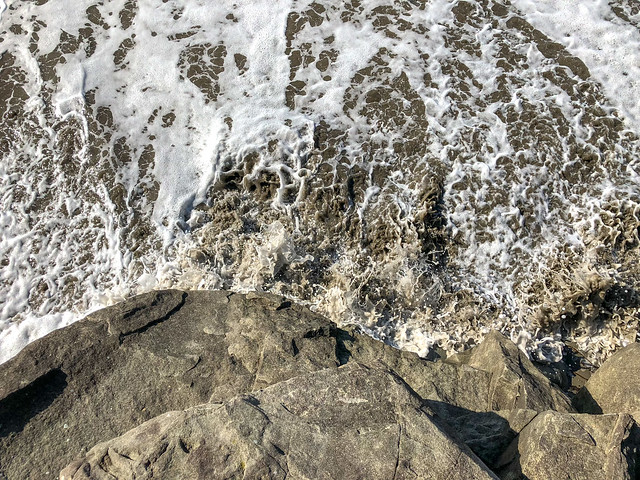


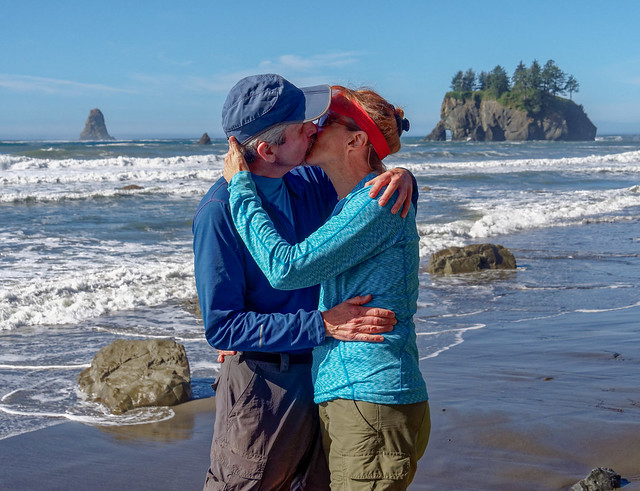


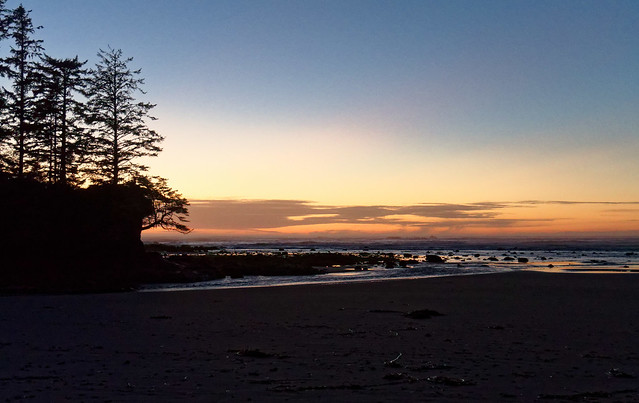

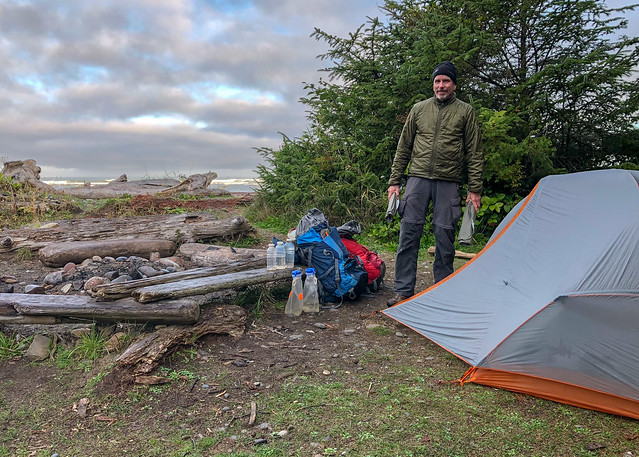
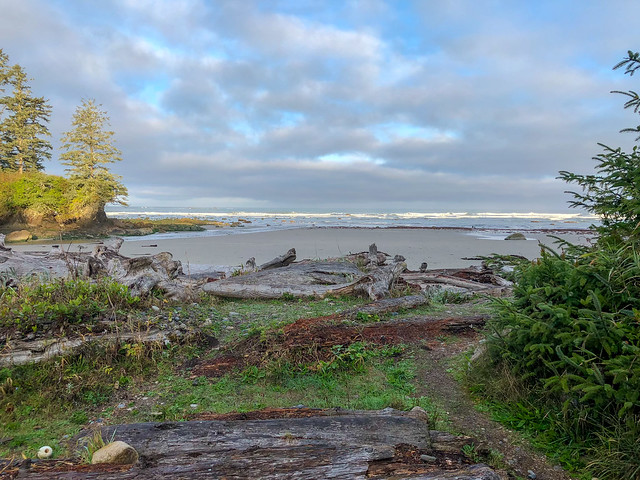
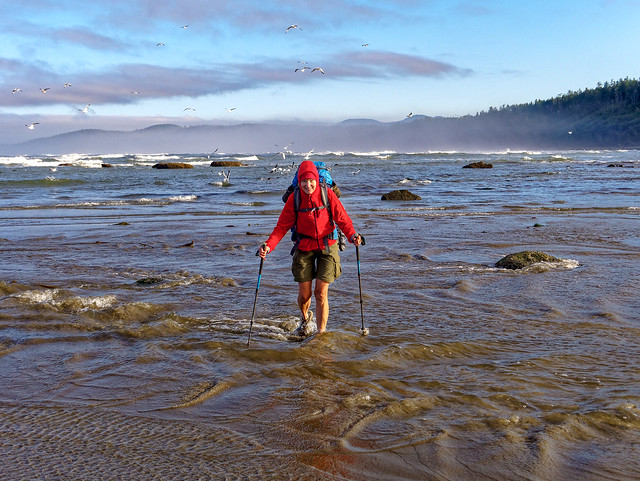
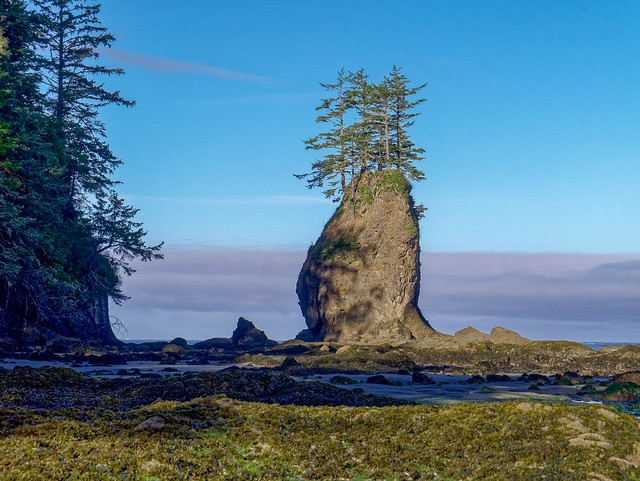

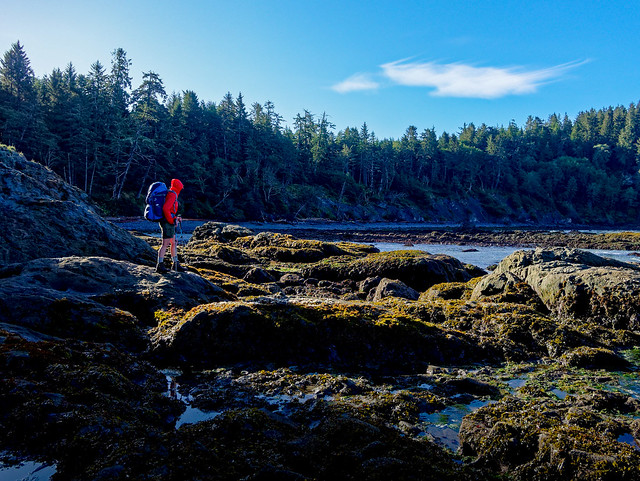
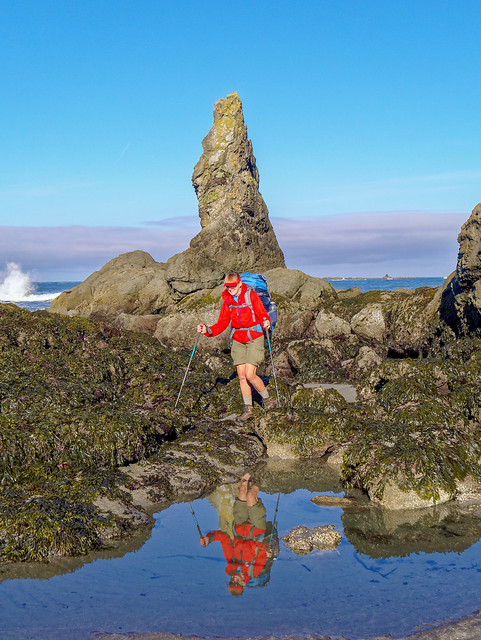
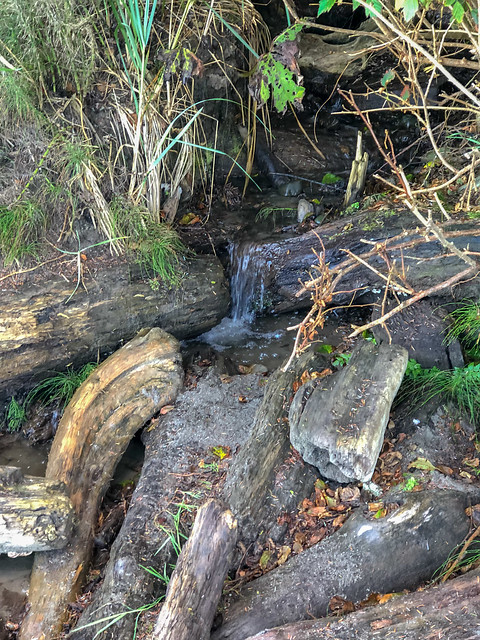

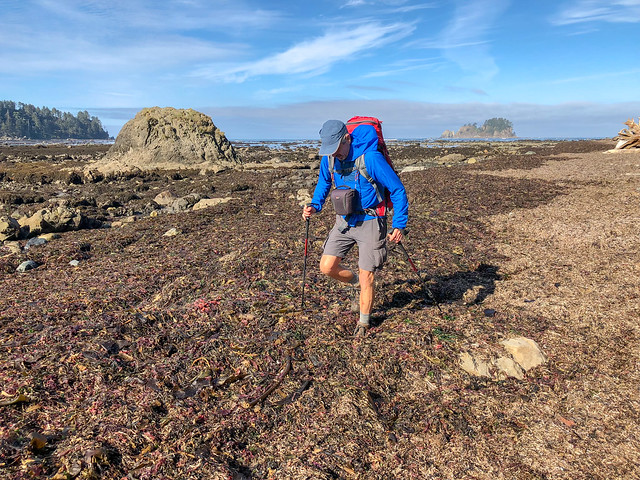
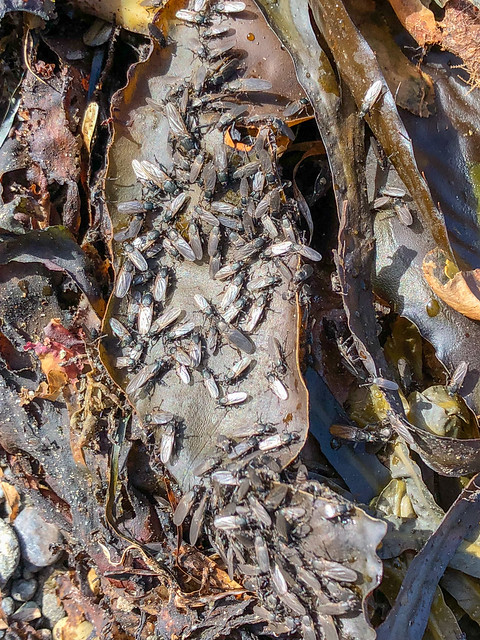
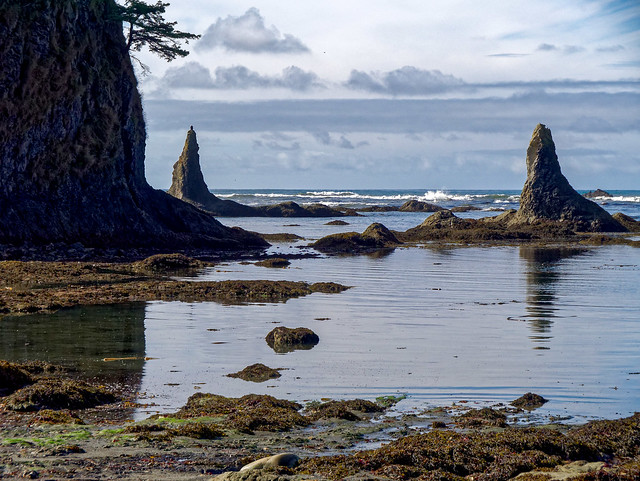
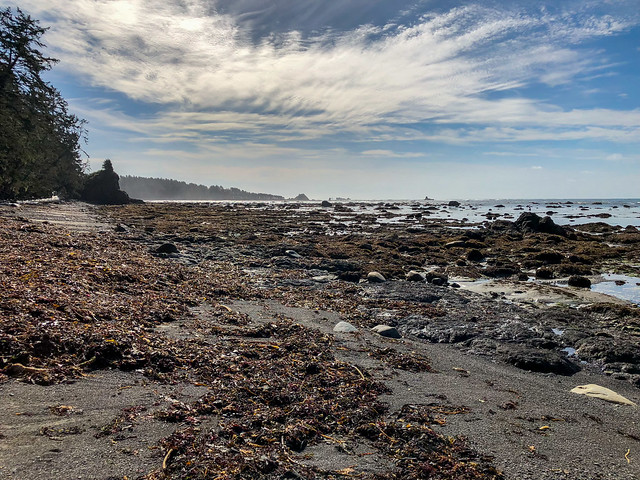

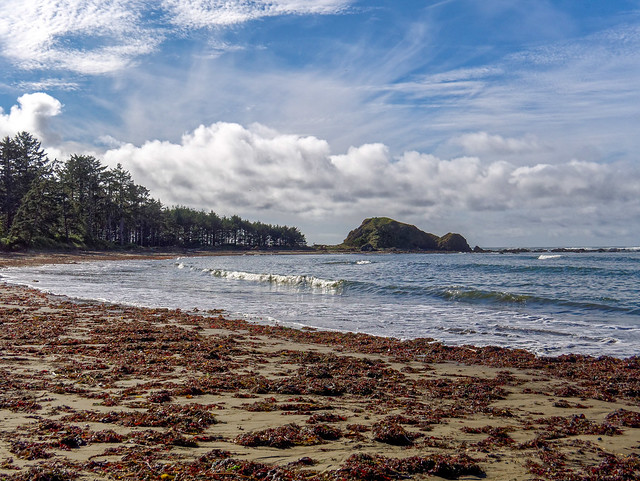
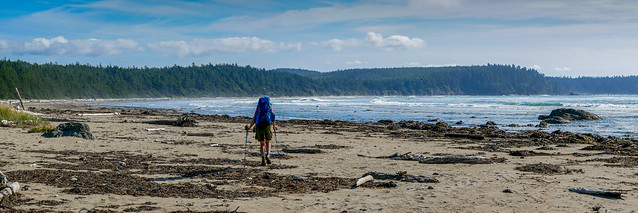
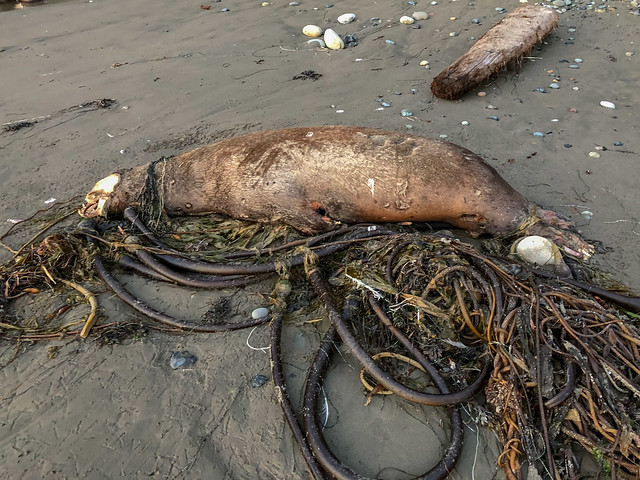
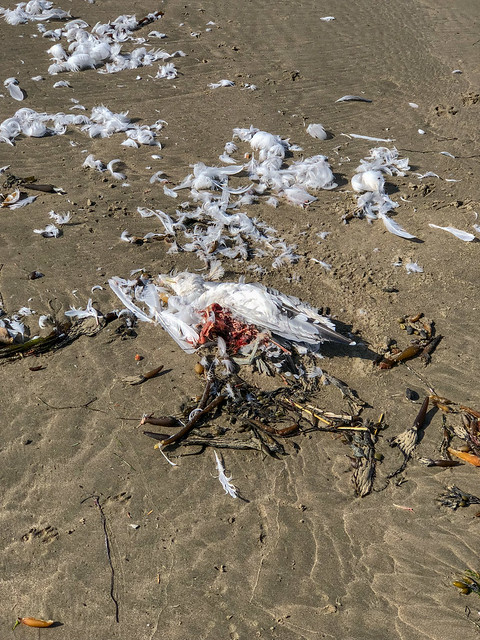
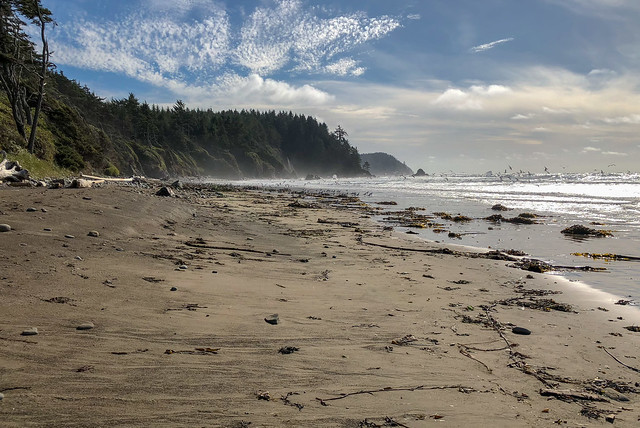
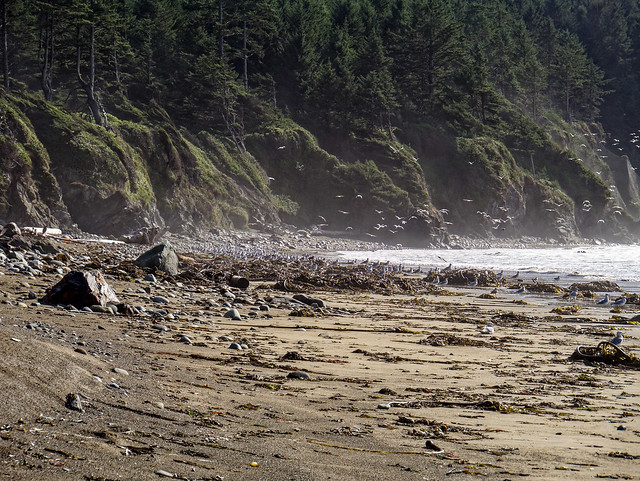
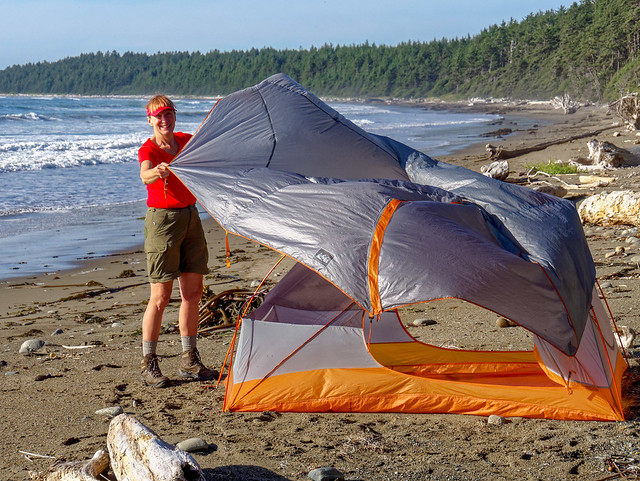
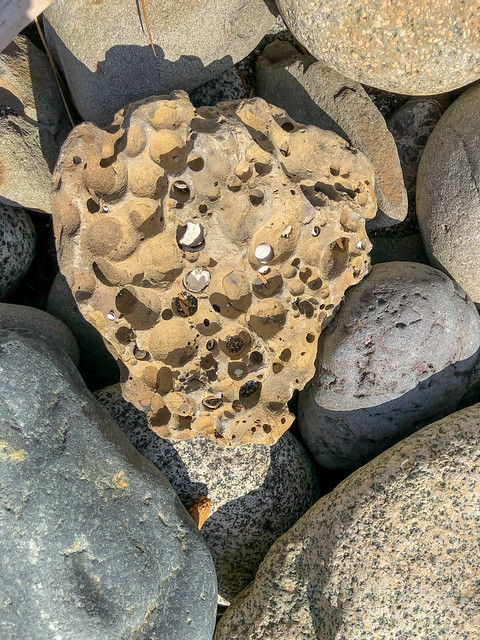
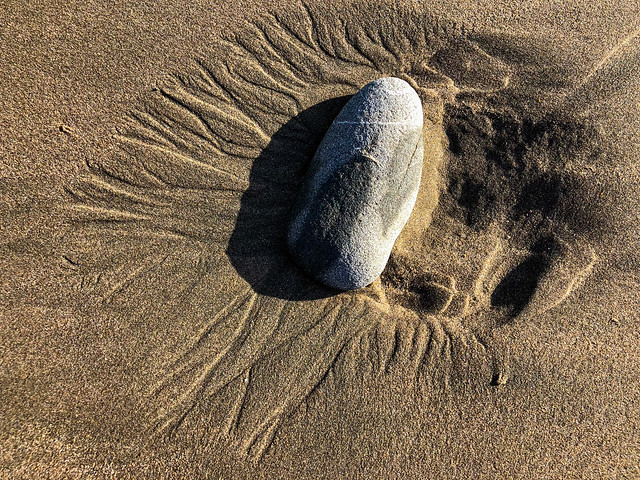
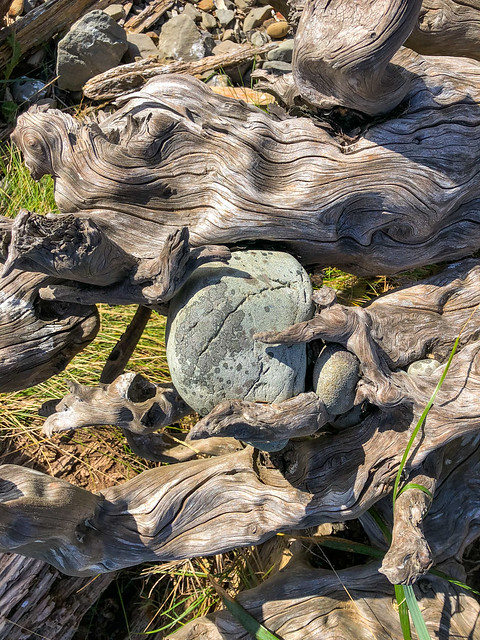
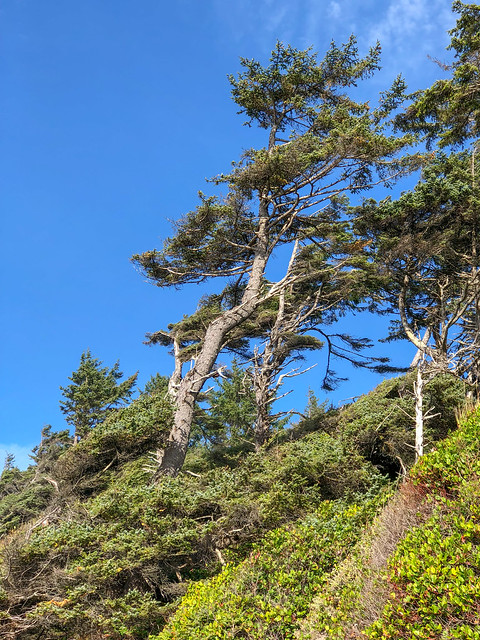

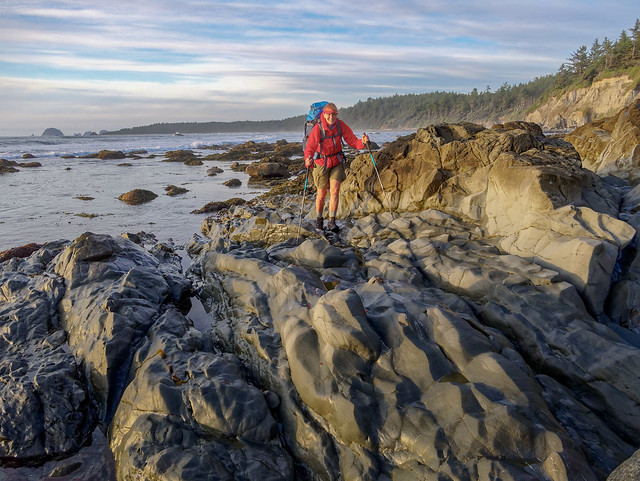
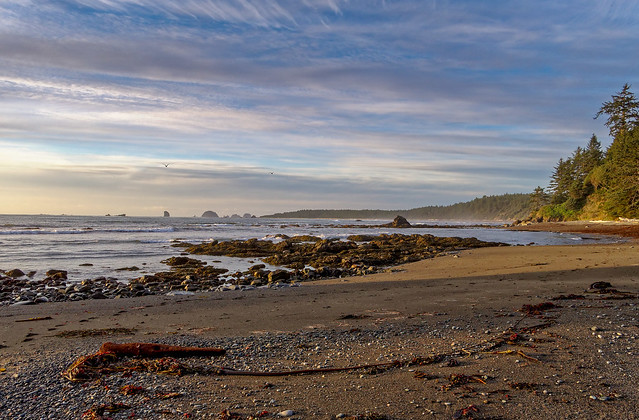
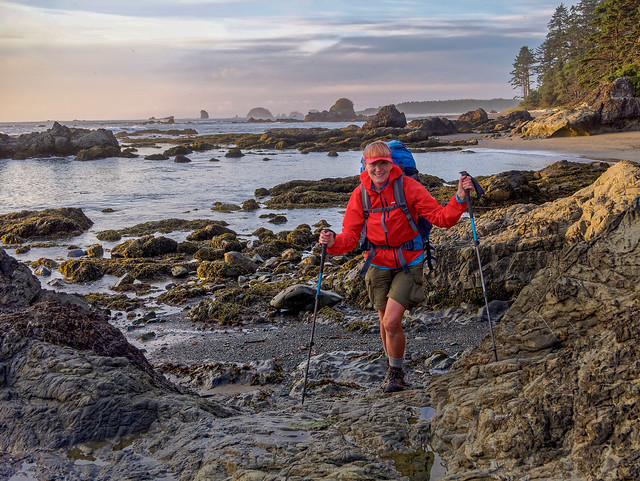
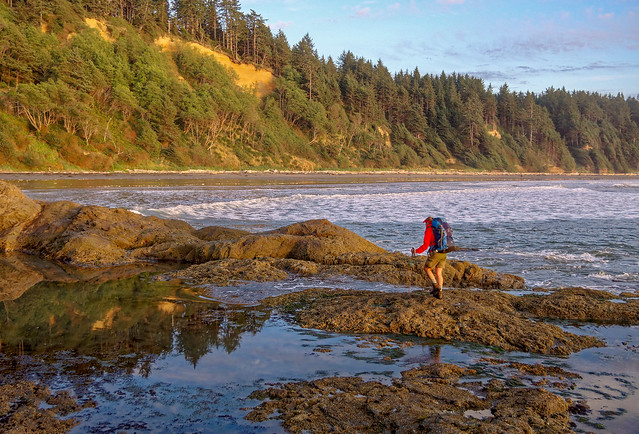
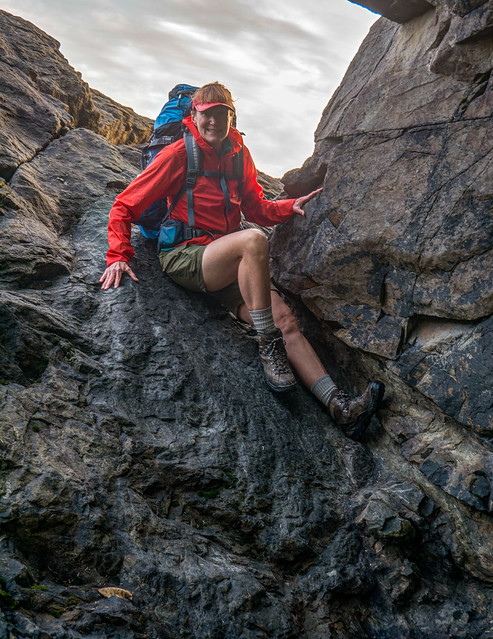
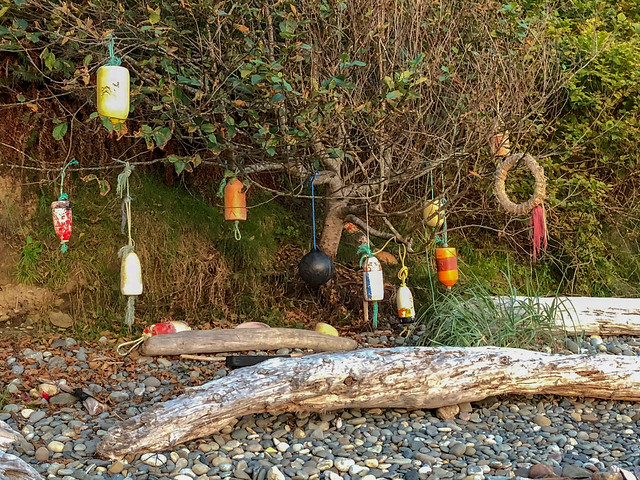
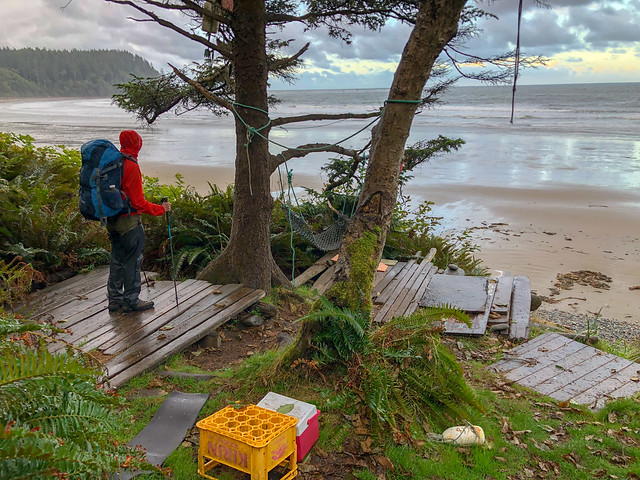




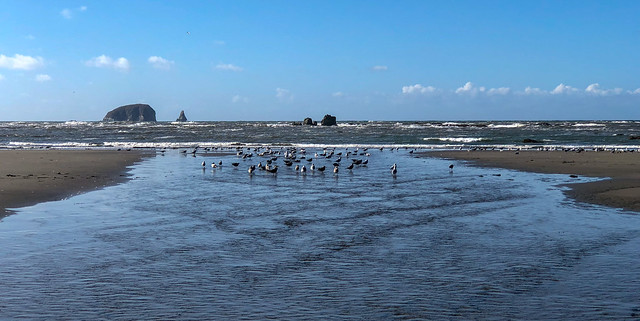

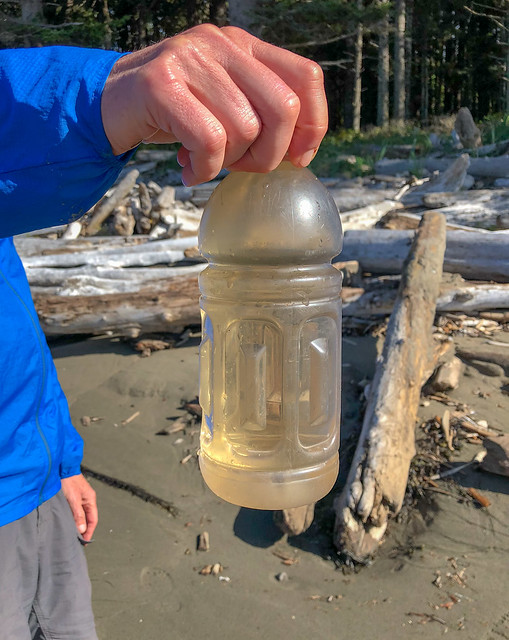

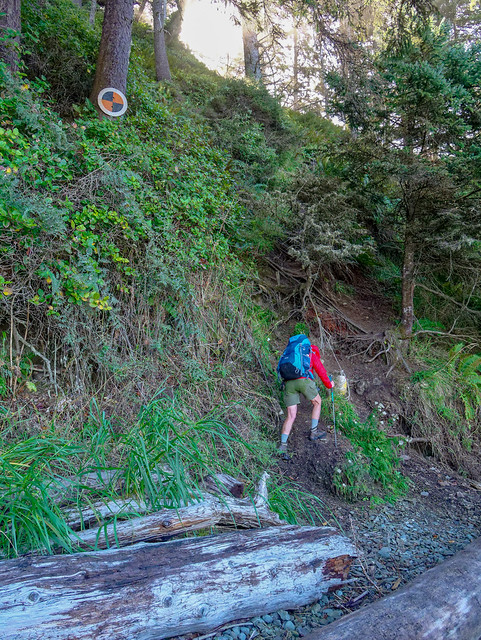



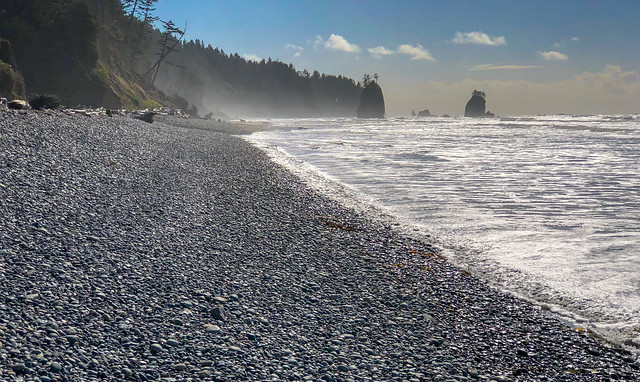
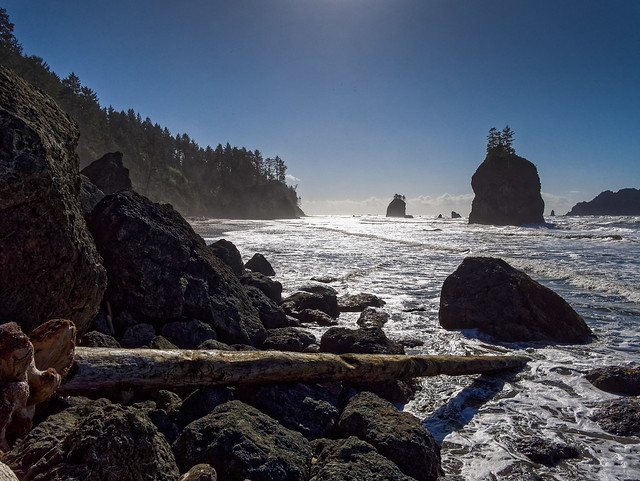
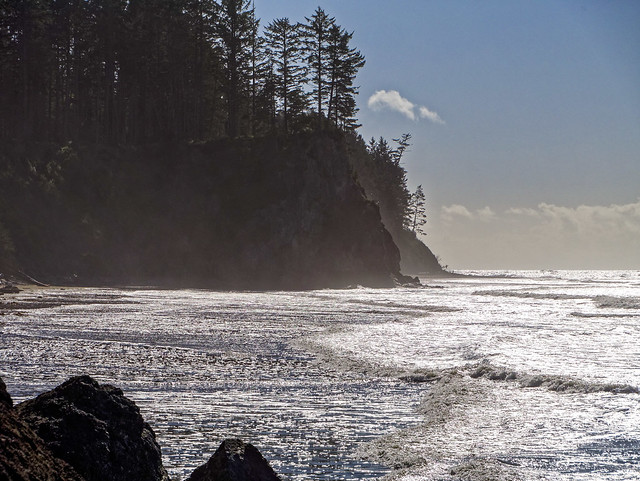
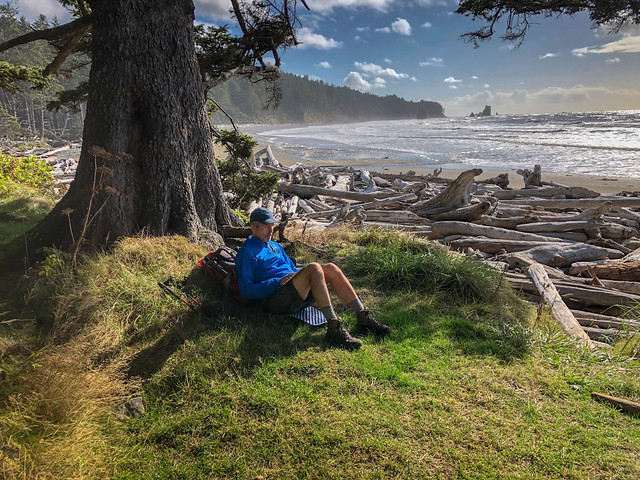
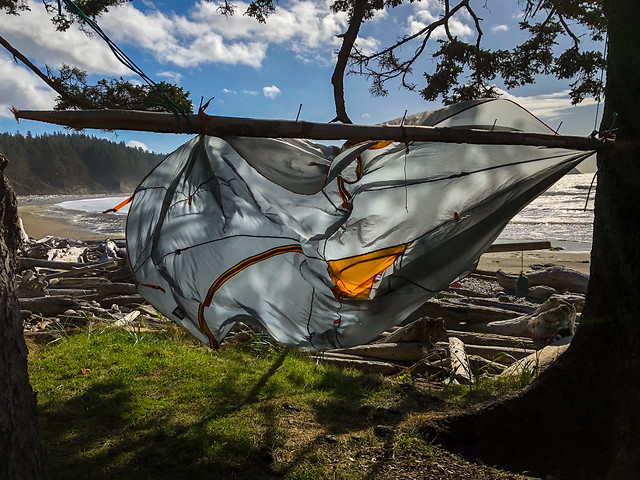
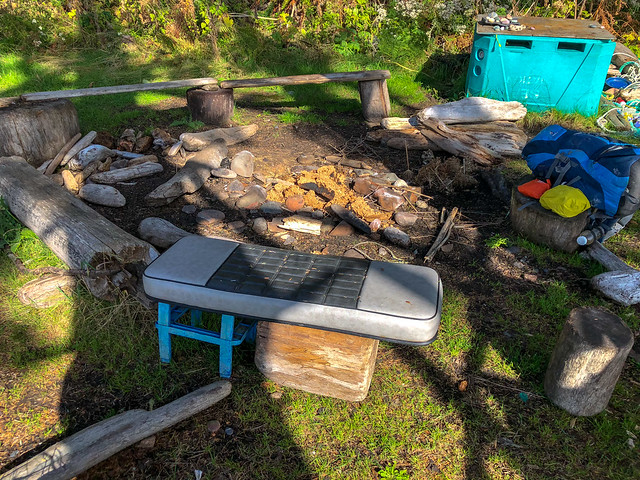
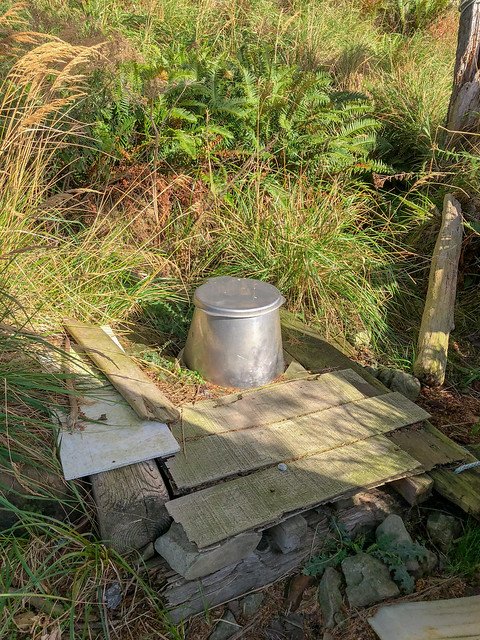


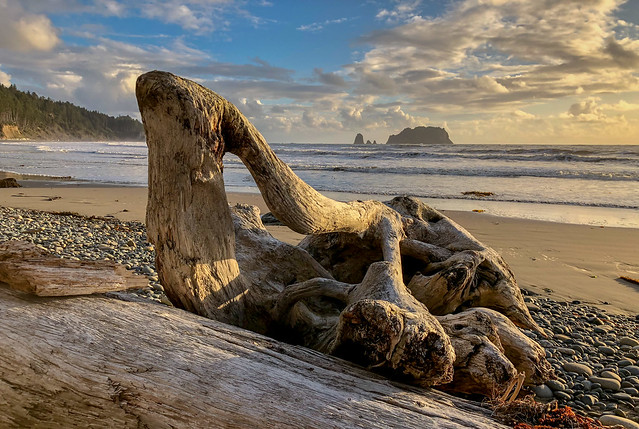
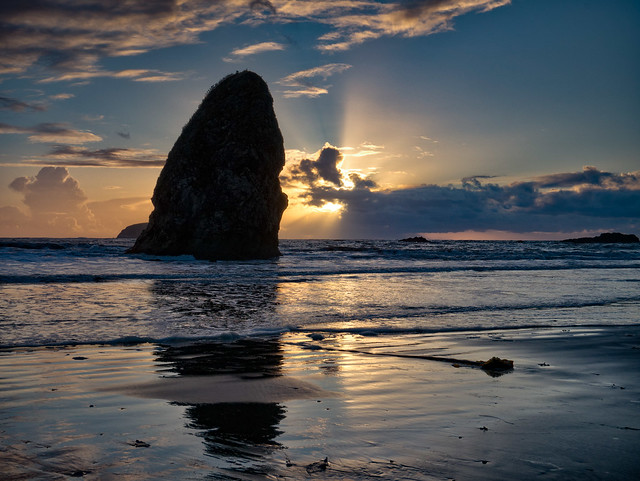
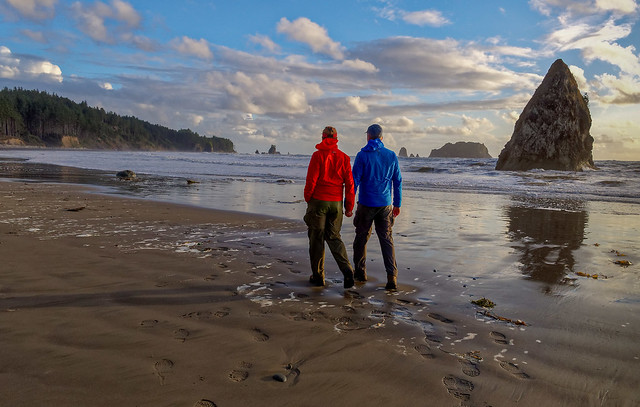
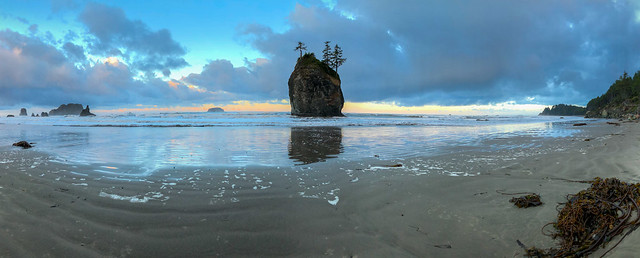
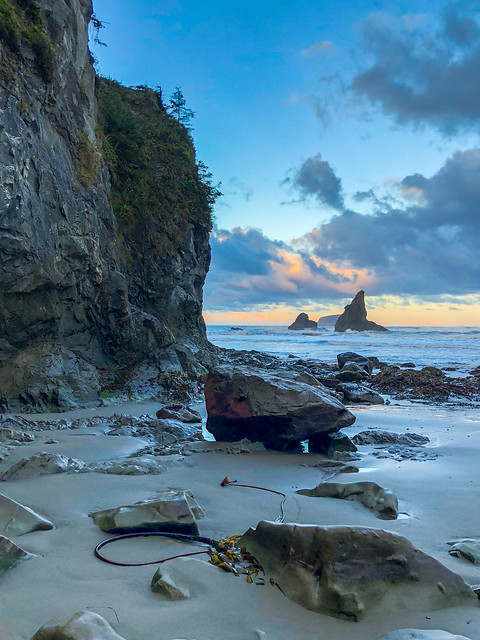
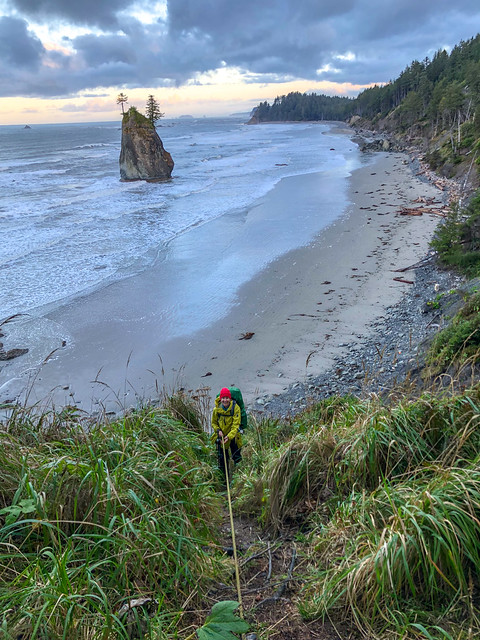


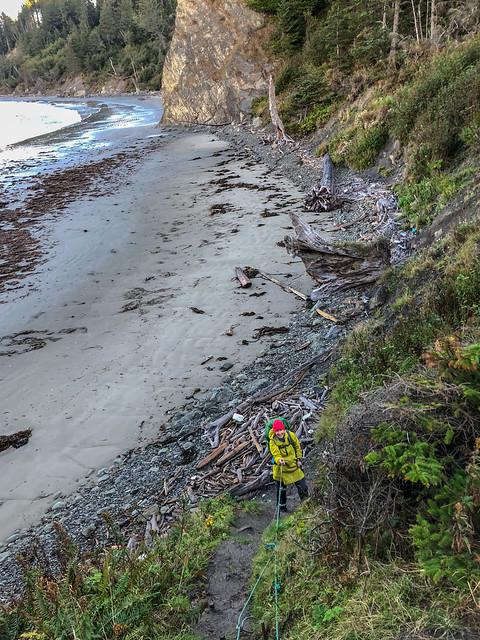

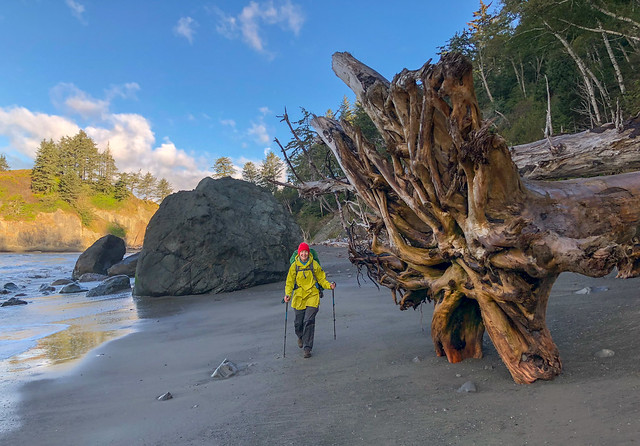
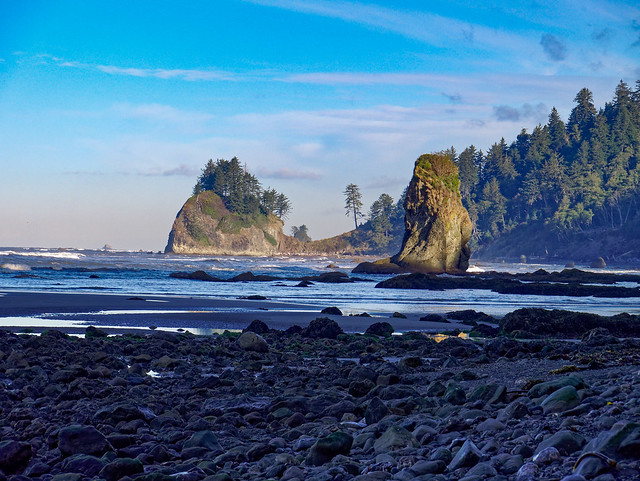
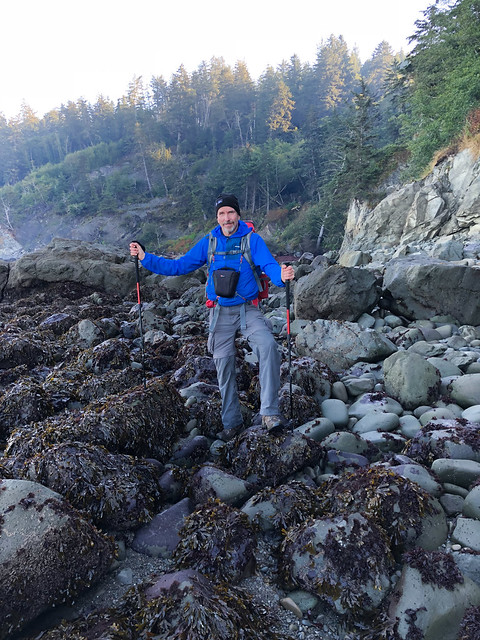

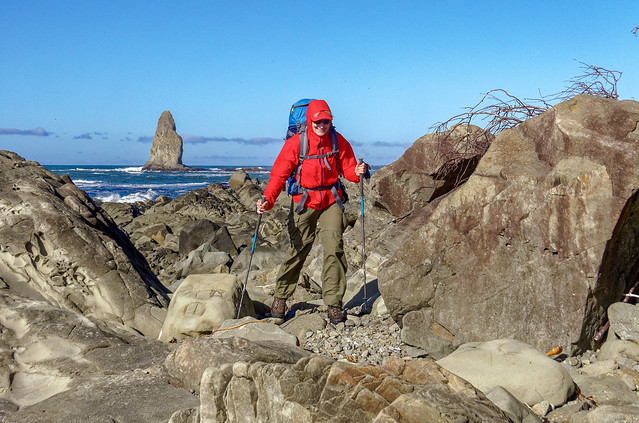






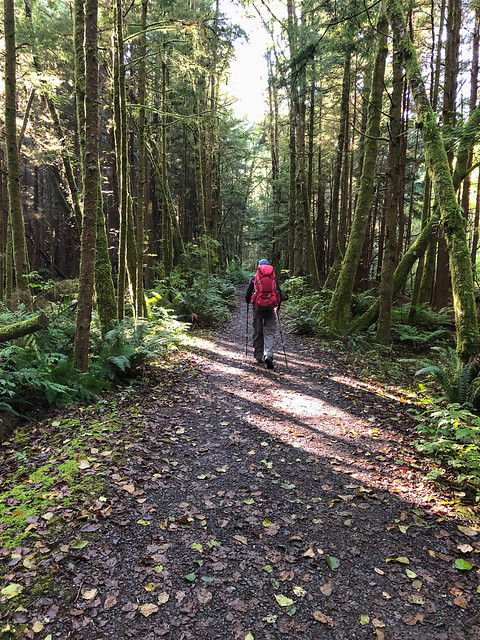
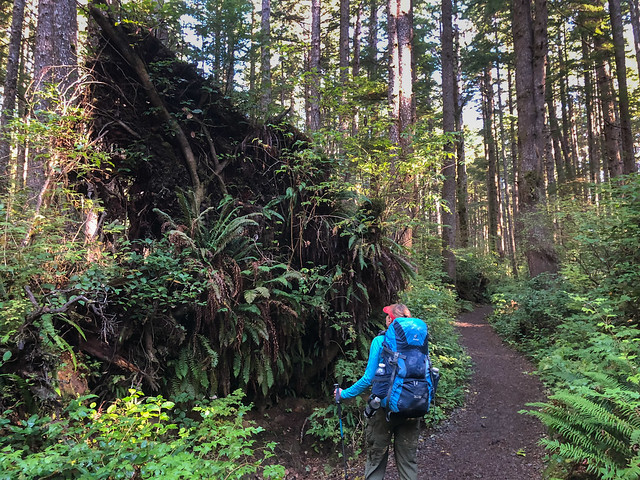

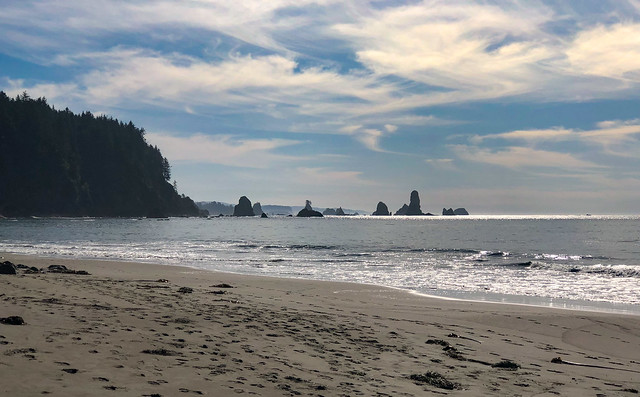
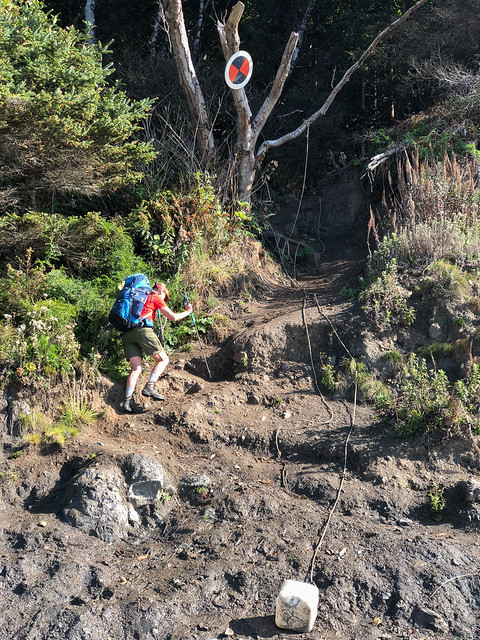
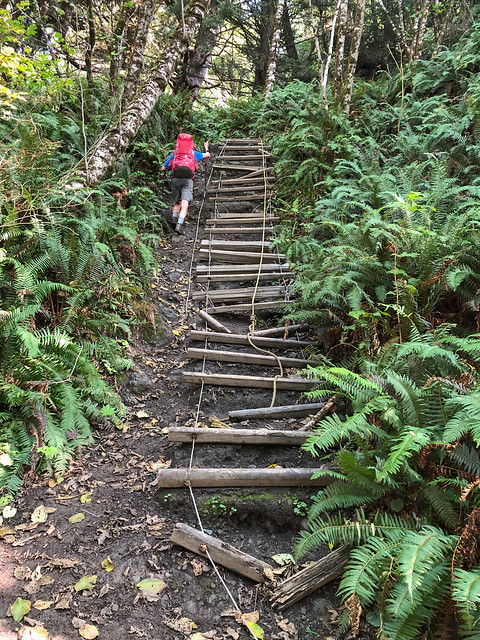
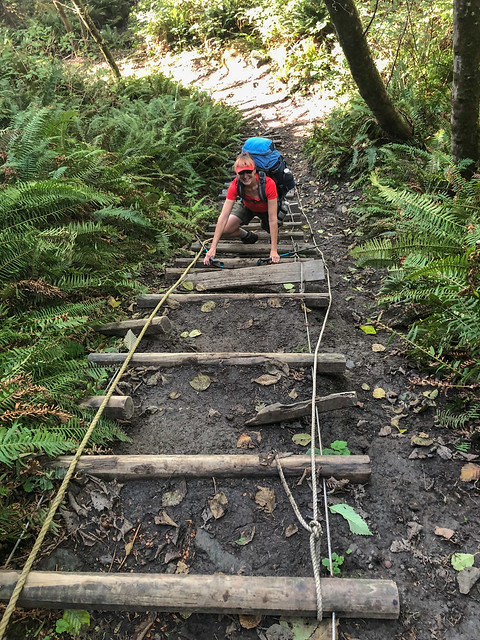

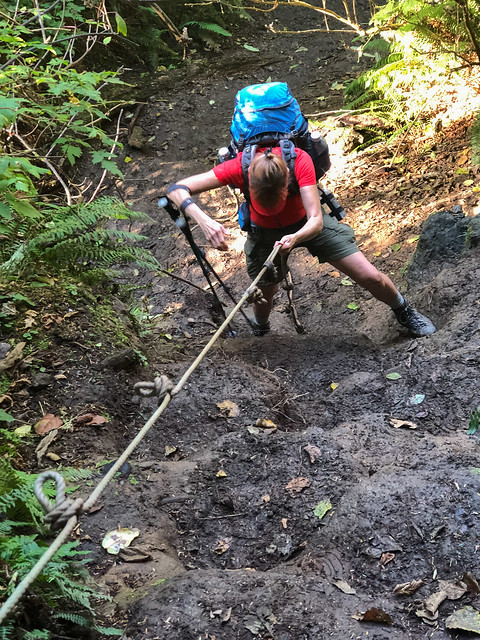
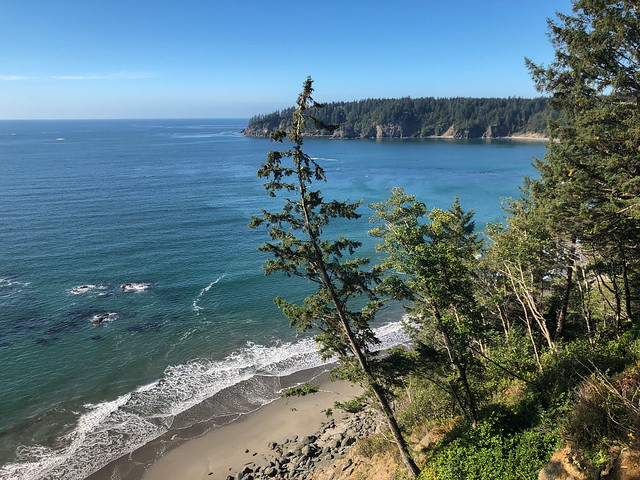
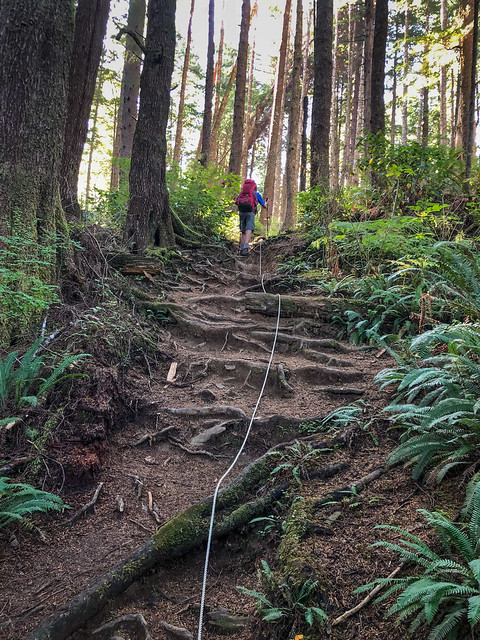
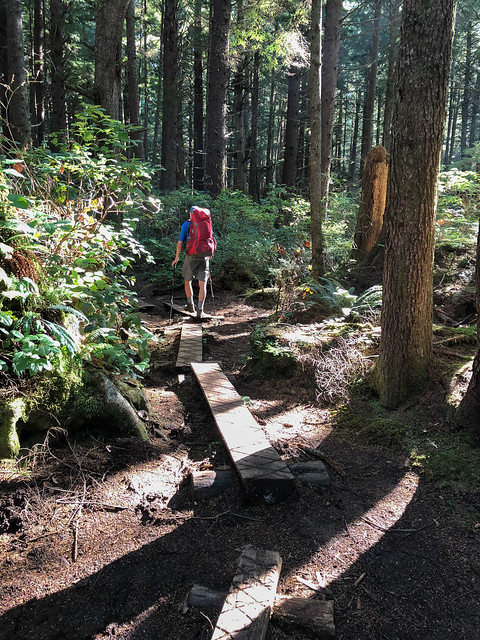
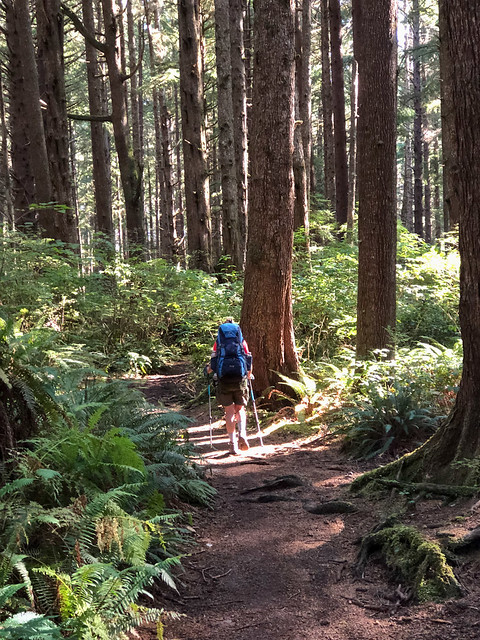


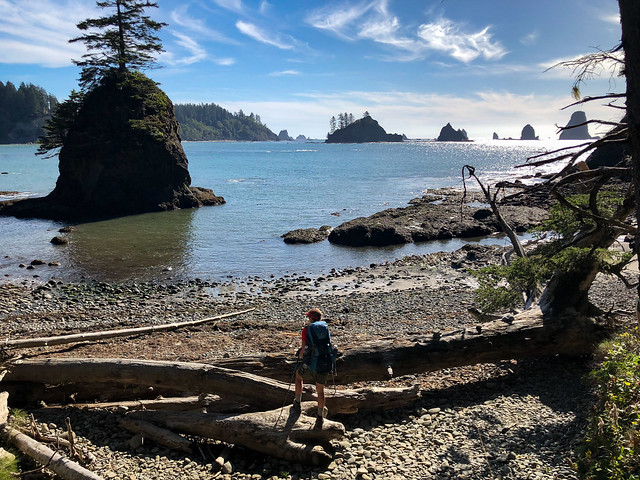
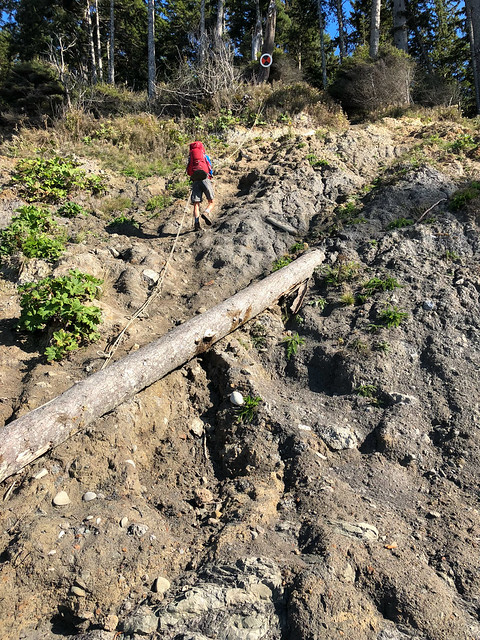
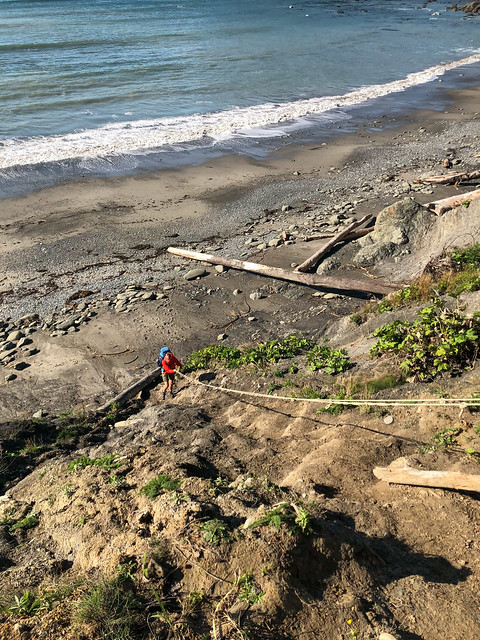


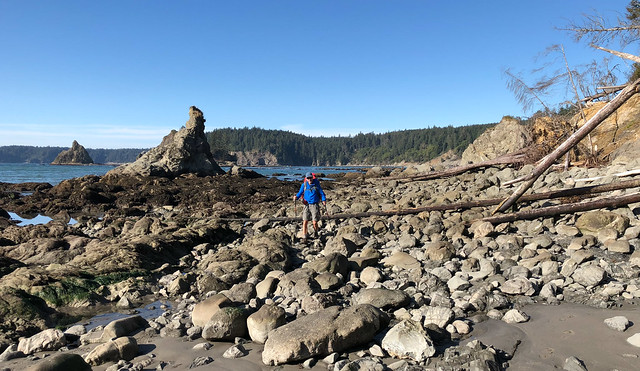
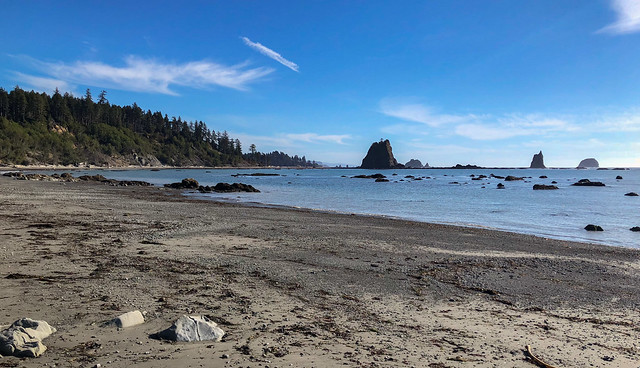

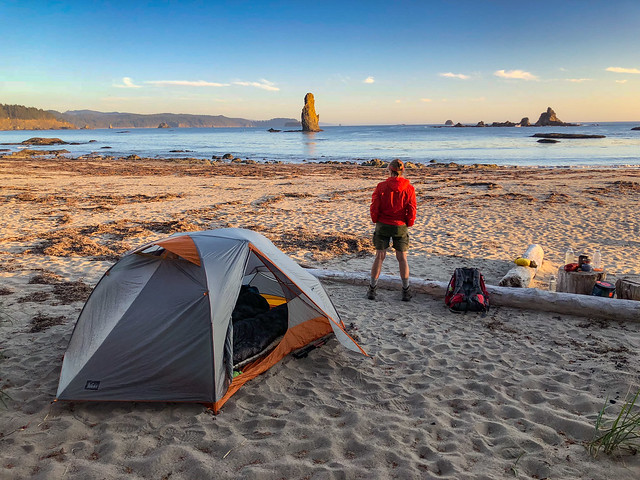
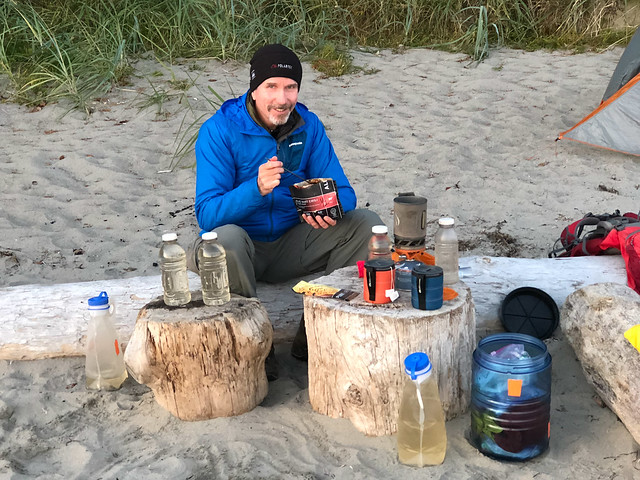

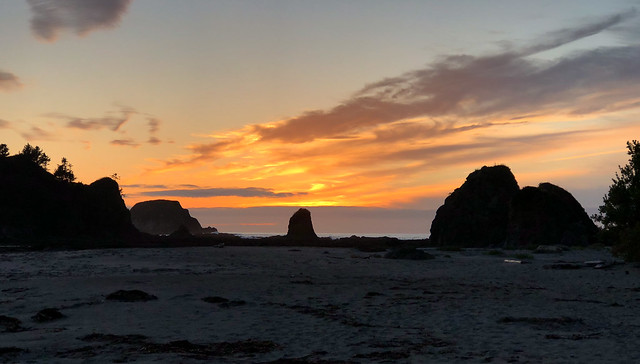
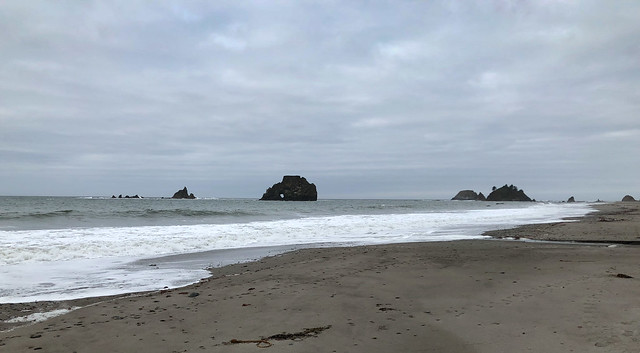
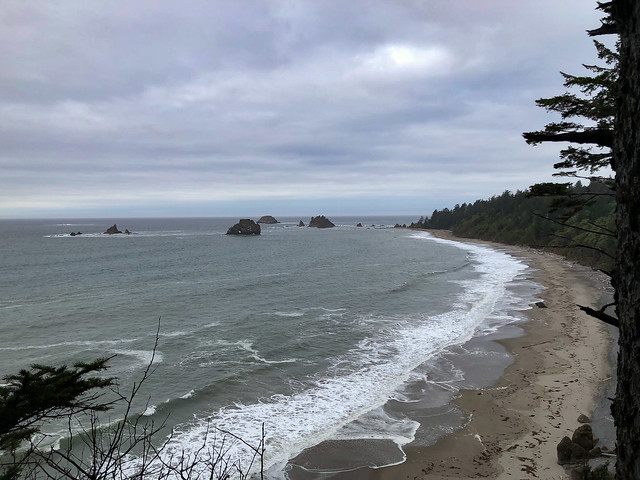
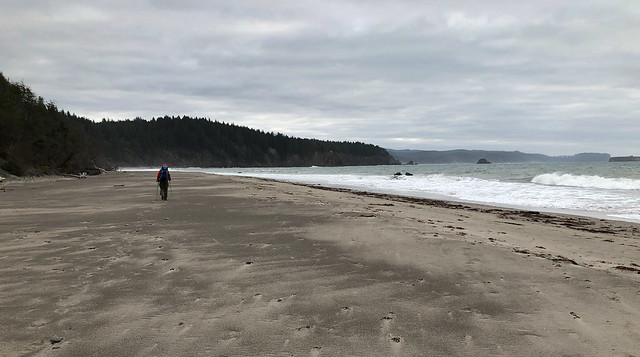

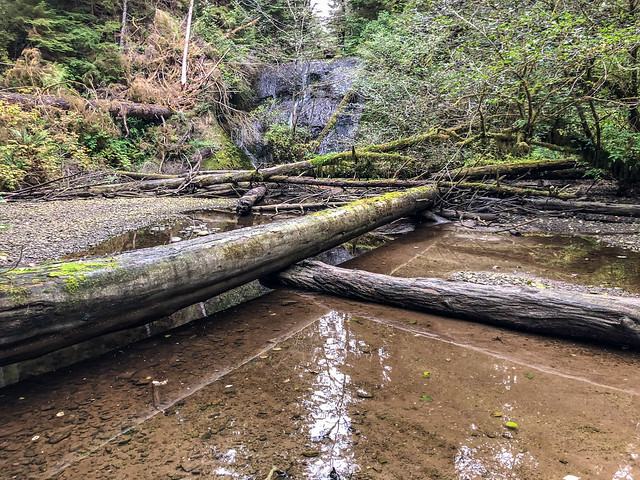
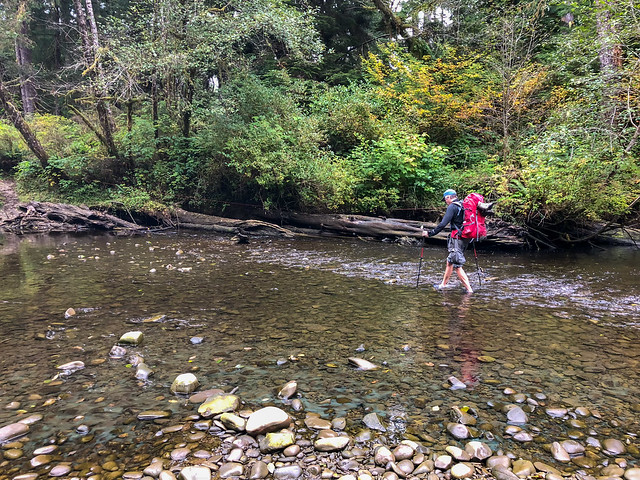

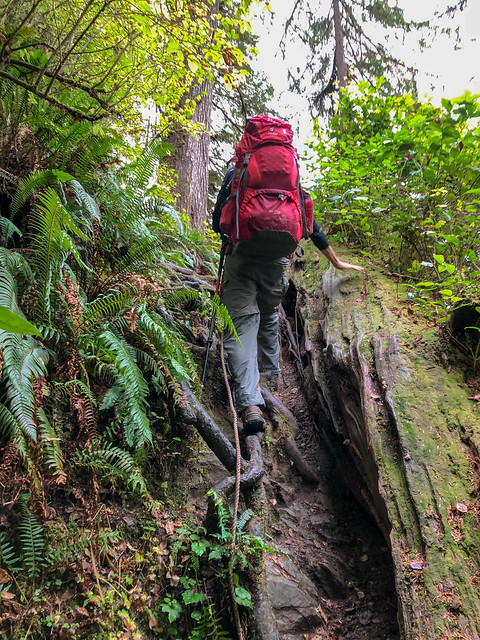

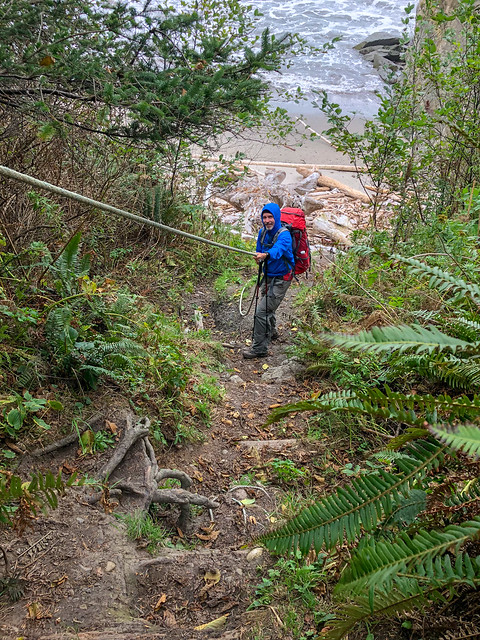



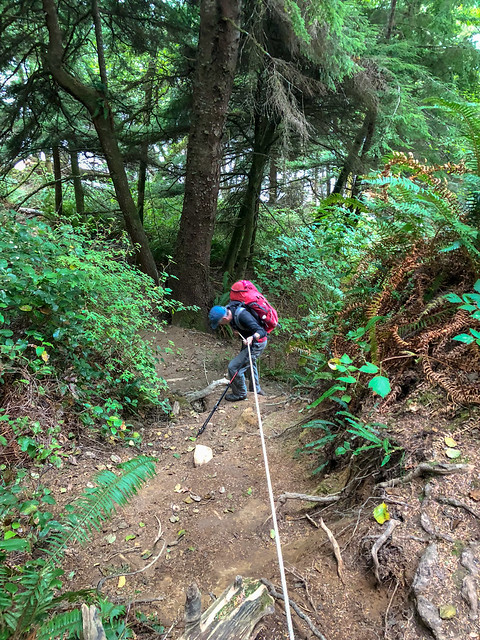
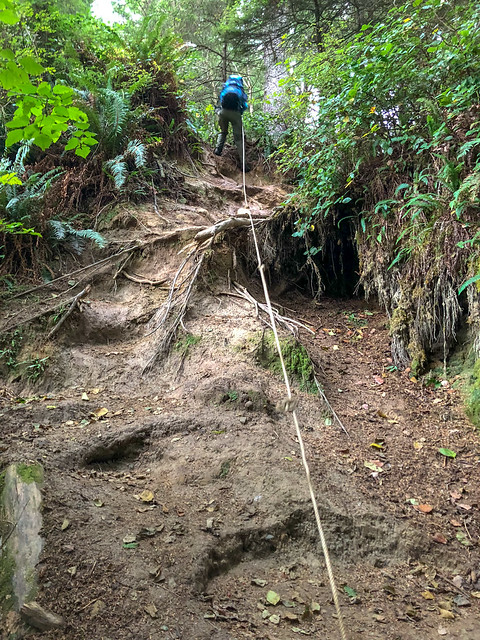
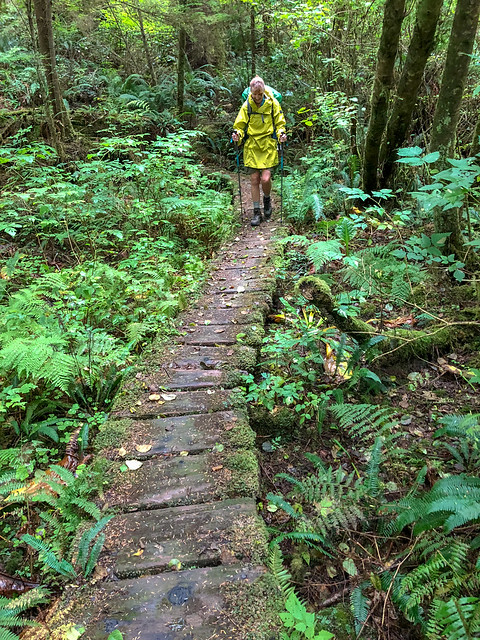
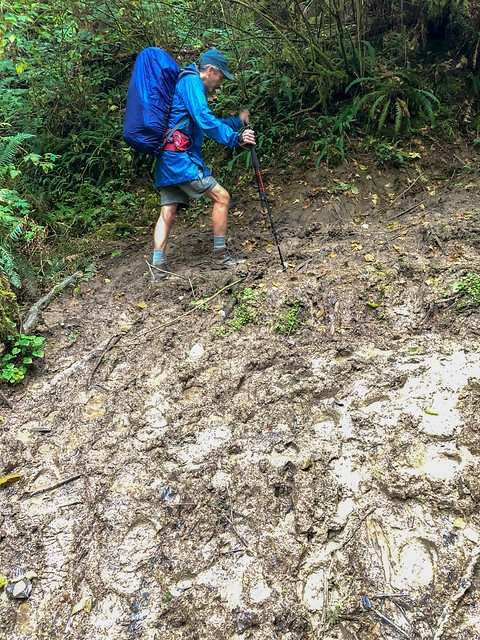





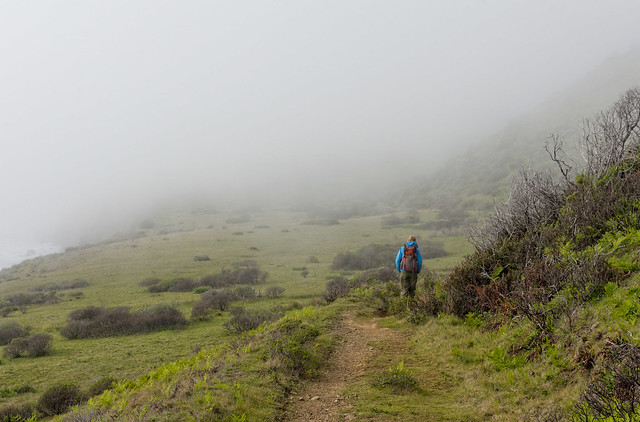



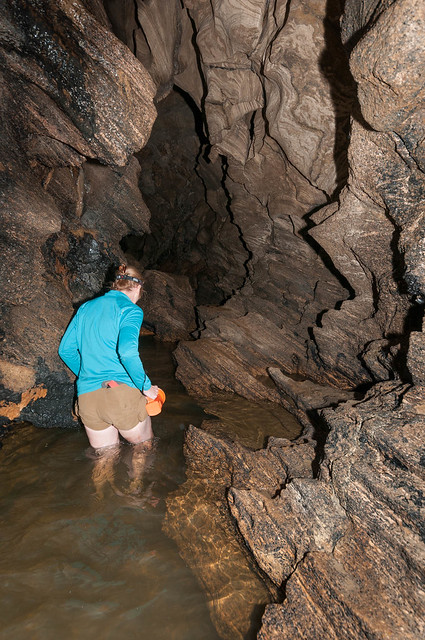





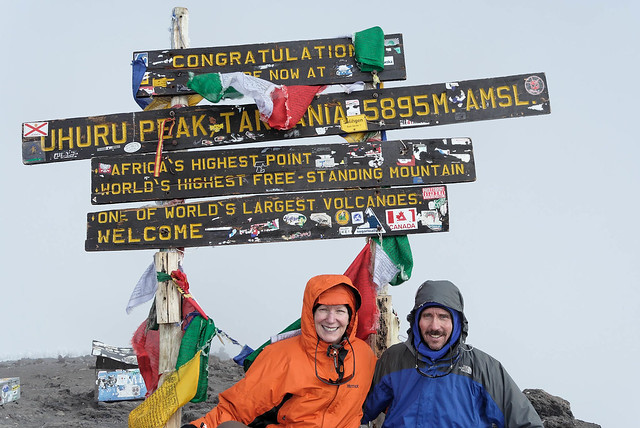
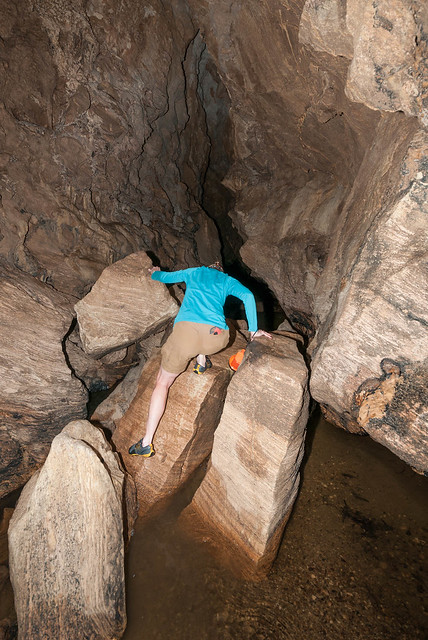

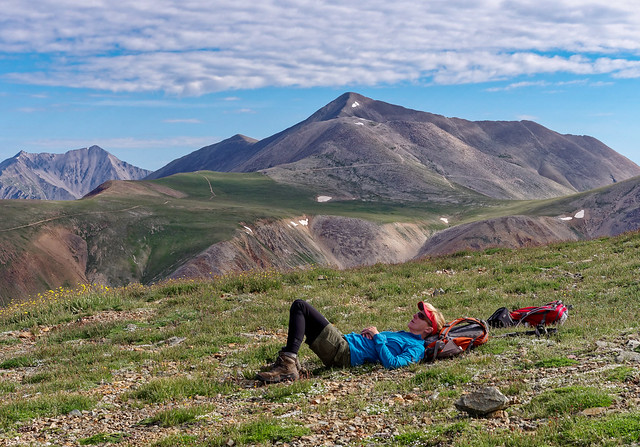



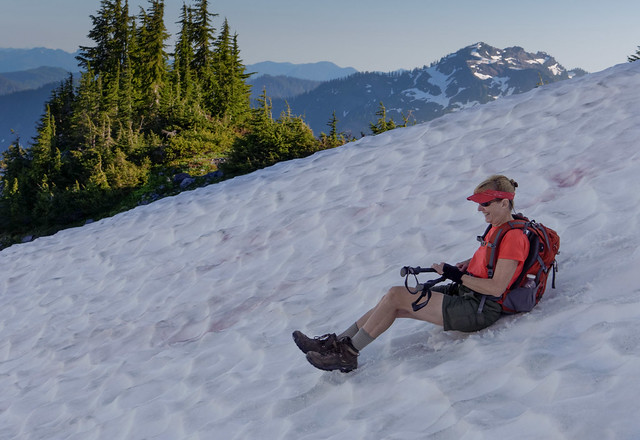






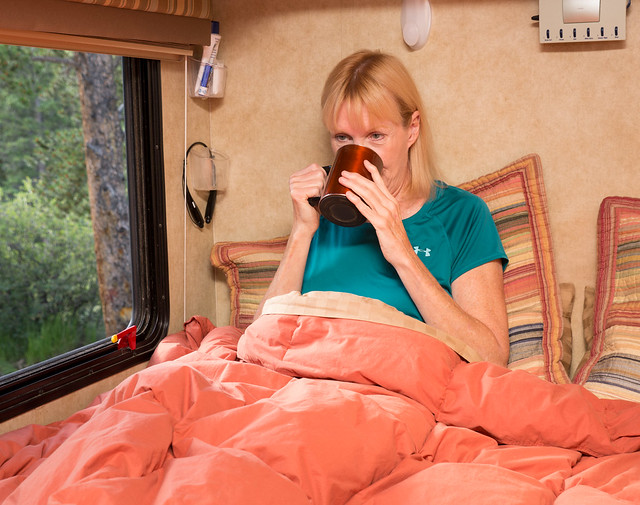













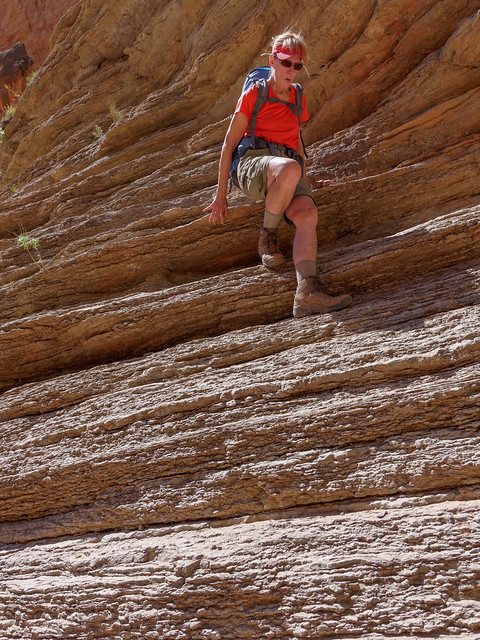


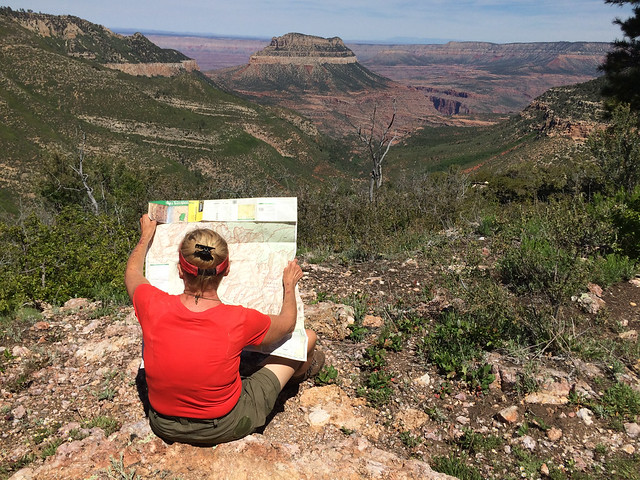


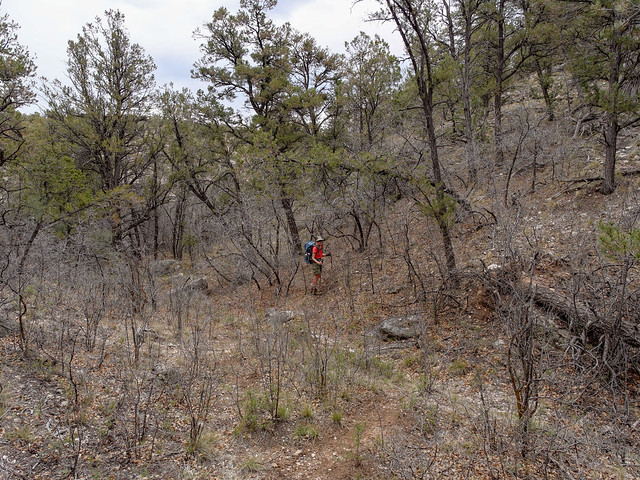






No comments:
Post a Comment